
Email all work for the course to me at [email protected]
https://ufl.zoom.us/s/91281350434
All classes are synchronous. I love teaching to the moment.
You are not required to have your video on when we meet on Zoom. However, you will be at a disavantage if you don't have it on since I can't see you. I will also be calling on you.
To access the assigned films, you will have to log on to Ares and find this course LIT 4390 Section 06A5 / M193.
To sign up to co-lead, go to this google doc. Do not co-lead with the same person twice.
I recommend that you get the Oxford World's Classics editions of John Bunyan, The Pilgim's Progress, Daniel Defoe, A Journal of the Plague Year, and Laurence Sterne's Tristram Shandy
Two LIT4931 Discussion Questions (DQs) and Three Big Words are due every Sunday and Tuesday by 5:00 p.m. unless otherwise noted.
Email them in one word document to me at [email protected]. Send the word doc as an attachment. Do not send pdfs. I recommend you have the text or film open as you write your discussion questions.

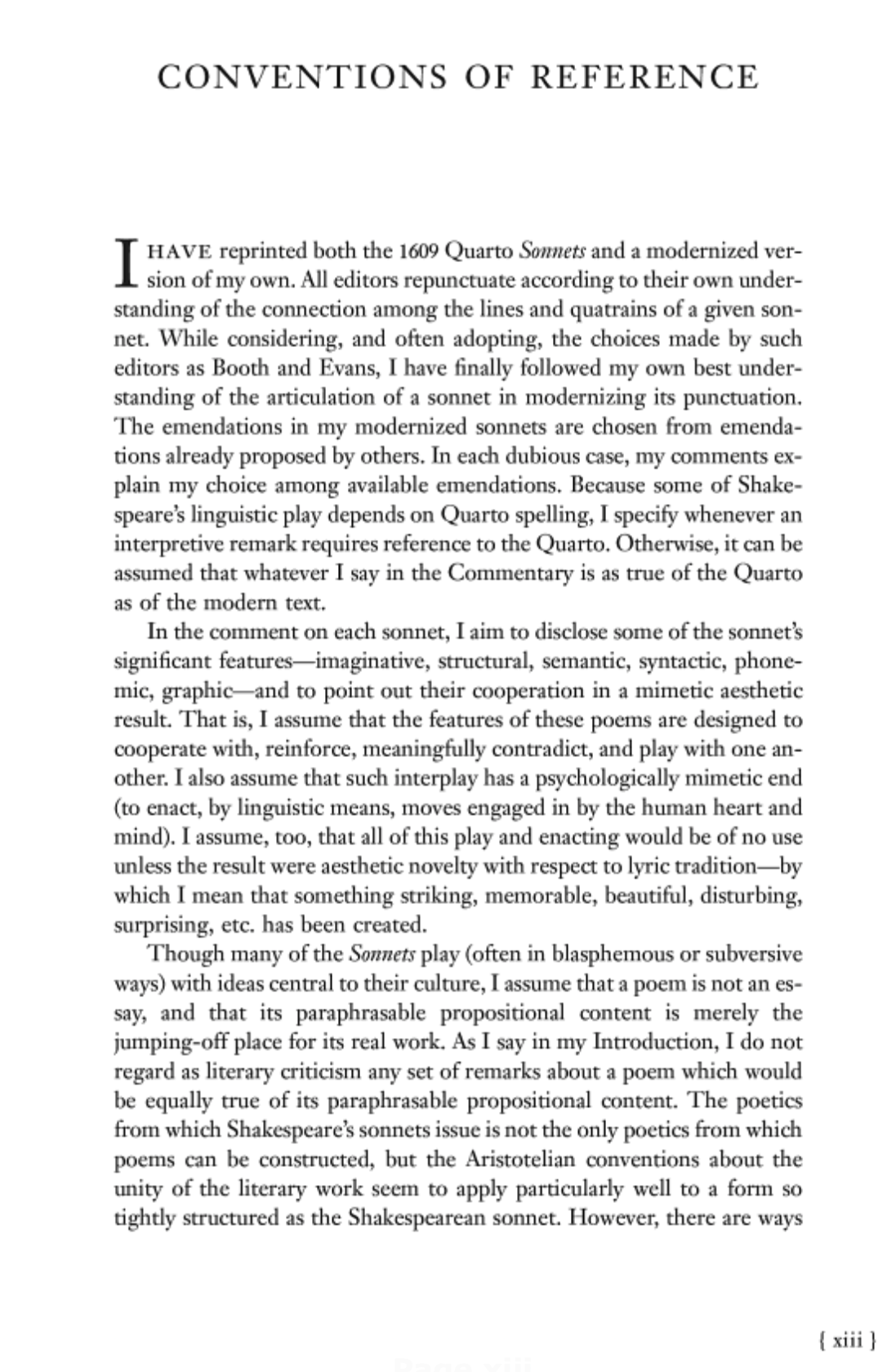
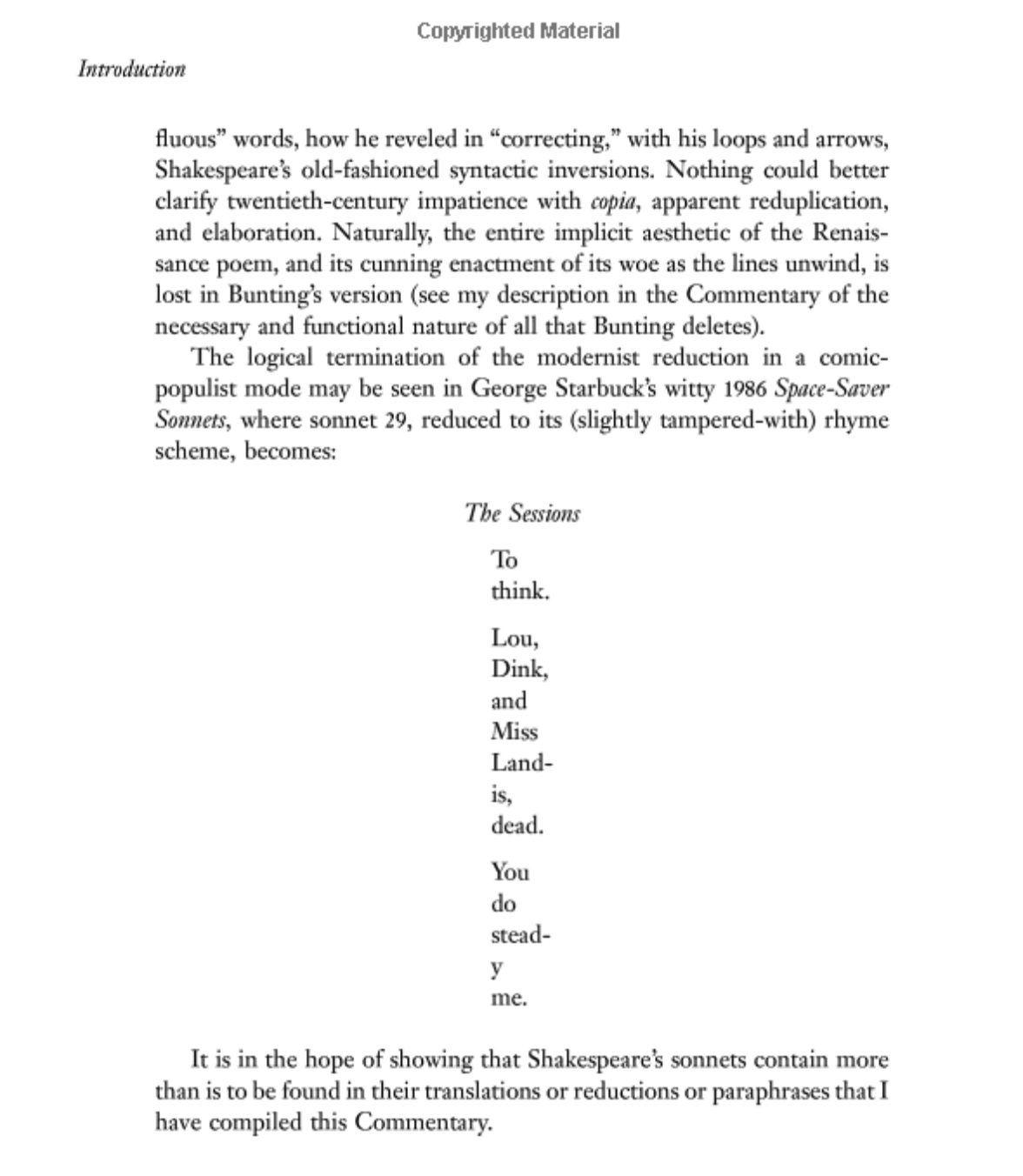
--Helen Vendler, Shakespeare's Sonnets
Preliminaries:

Survival Kit For the Anguished: A series of podcasts by Avital Ronell
See Also:
Dr. Michael Hudson: Economic Lessons for 2020

The Bellows in Conversation with Adolph Reed and Walter Benn Michaels
TENTATIVE SCHEDULE (Please expect adjustments to be made in the schedule from time to time; all changes will be announced both in class and on the class email listserv.)
January 11 Introduction: Finding the Book
Find a book at UF's Library West that is not an ebook. https://www.uflib.ufl.edu/ufproxysuccess.html
What can you learn from UF's library about that book when you find it?
Susan Howe, Concordance (pdf)
Susan Howe's Concordance (NY Times)

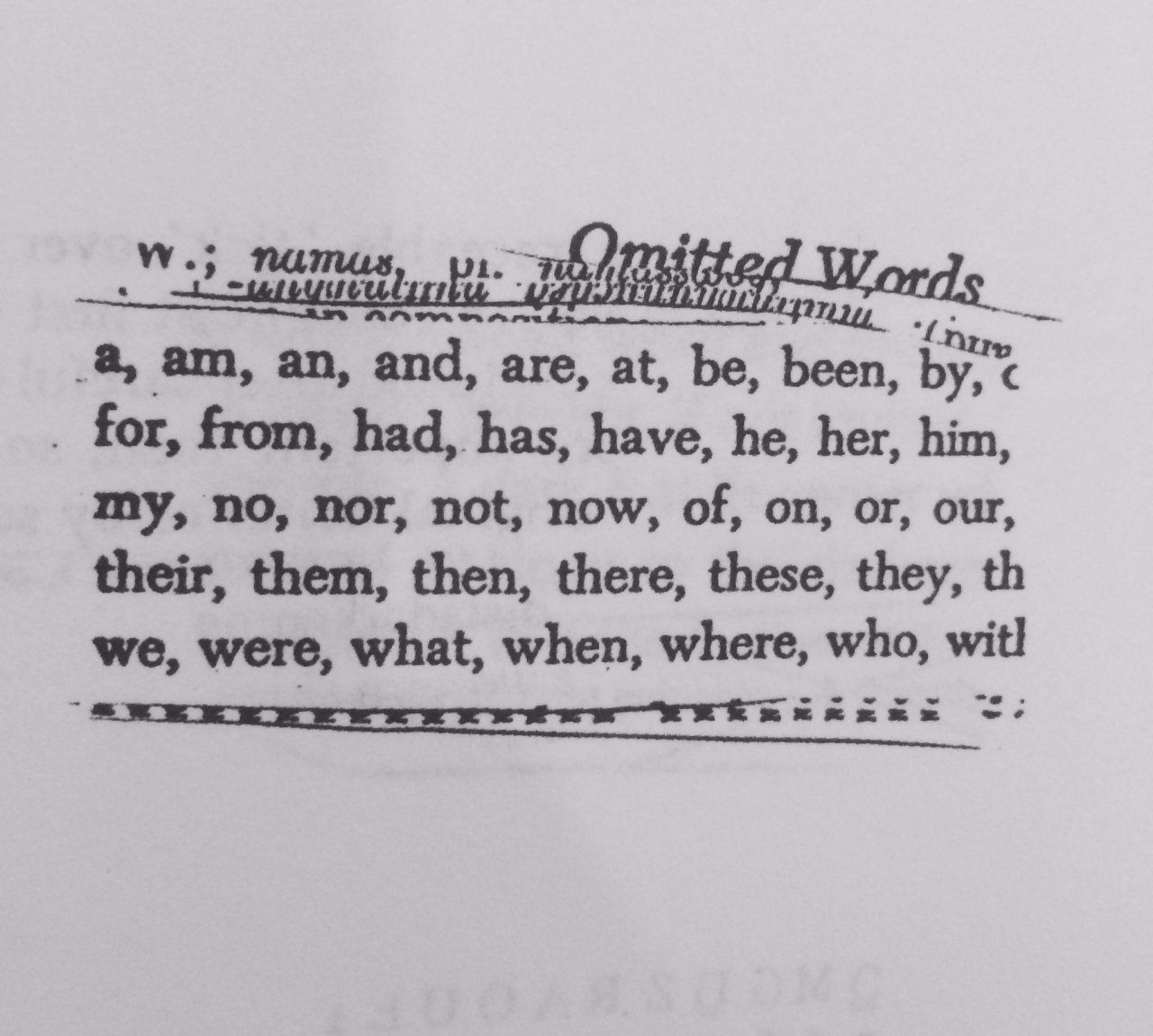
How much help does Howe give the reader of "Space Permitting"? Is there a narrative in her collage of drafts and notes by Thoreau? Notice in her scholrly "Author's note" how she advises her reader, in her last sentence, enclosed in parentheses, to read her source text, "Thoreau's Account of the Wreck of the Elizabeth and the Aftermath" at http://thoreau.library.ucsb.edu/resources_essays.html "Including Steve Grice, "A New Leaf fom Thoreau's Fire Island Manuscript," Thoreau Socity Bulletin 258 (s[sic]pring 2007):1-4. I have retrieved both of them, though now reading the Thoerau webpage I see that Grice's essay is linked. Will reading them help me read Howe's poem? Is the necessity of retrieving the texts she advises us (or tells us?) to read part of the poem? Dos she mean to lose us? Make us feel lost? Is her note a kind of lifesaver for readers drowning in her poem? Do we need Howe's source text to read her poem? Her author's note is placed on the inside leaf of the back cover, unconnected to her poem by a footnote or some other typographical means of indicating to the reader of the poem that there is a note about the poem written by Howe.
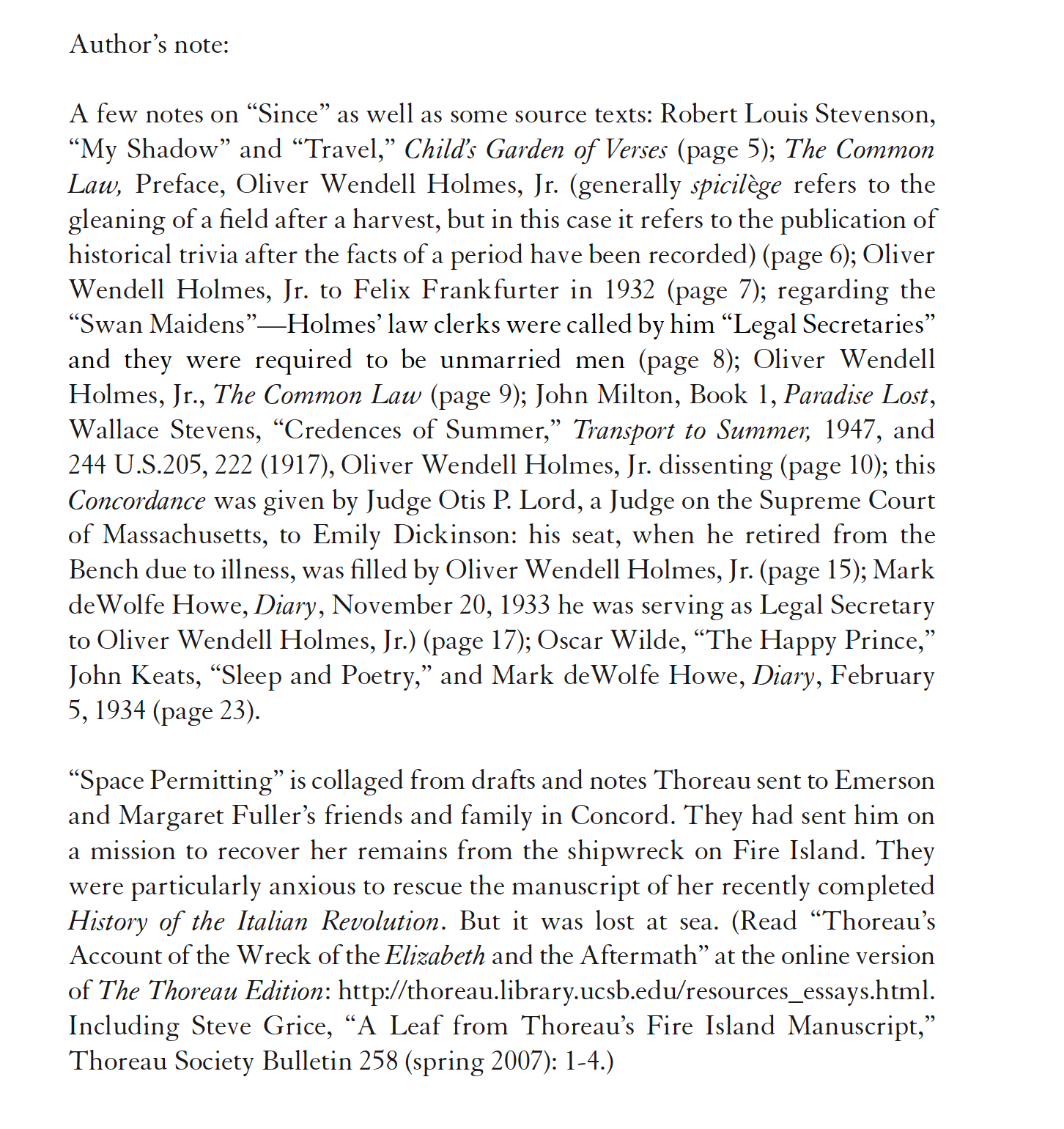
A very direct and playful author's invitation to read his book with helpful cross-references:

An unusal and playful user's manual written by Avital Ronell, the author of The Telephone Book (1989):

READERS GUIDES: ("Preview unavailable Learn more" to Use Google Books)
Archimboldo's "The Librarian" / Searching the catalogue is not easy / "Reopening the Book on Arcimboldo's "Librarian"
![]()
Book Covers with "The Librarian" on them:
D. F. McKenzie, "The Book as Expressive Form," Bibliography and the Sociology of Texts
Nox philologiae : Aulus Gellius and the fantasy of the Roman library
YOUR FIRST ASSIGNMENT: DUE January 12 by 5:00 PM: IN ONE WORD DOC, EMAIL two Discussion Questions, one on each of the two Borges readings below and and three BIG WORDS to [email protected] Send the word doc as an attachment. Do not send pdfs. I recommend you have the text or film open as you write your discussion questions.
Your word document will look like this:
Your name here (in the upper left corner)
DQ1
DQ2
Big Words (and their definitions)
1.
2.
3.
NOTE: Your discussions questions are limited to the texts and films. Do not use them as prompts to talk about something else. Ask about the formal structures of the texts and films, not abou the author or historical context. Do not ask speculative questions. They cannot be answered and so are not productive for discussion.
JANUARY 13 Fantasies of the Library
REQUIRED READINGS
1. Jorge Luis Borges,"The Library of Babel" Also available here: Collected Fictions
2. Jorge Luis Borges, "The Analytical Language of John Wilkins" / “El idioma analítico de John Wilkins,” pp. 229-33
See Also (Further Reading)
Jorge Luis Borges, “Tlön, Uqbar, Orbis Tertius”
"The perfect page, the page in which no word can be altered without harm, is the most precarious of all. Changes in language erase shades of meaning, and the "perfect" page is precisely the one that consists of those delicate fringes that are so easily worn away. On the contrary, the page that becomes immortal can traverse the fire of typographical errors, approximate translations, and inattentive or erroneous readings without losing its soul in the process. [...] I do not wish to foment negligence nor do I believe in the mystic virtue of the clumsy sentence or the vulgar epithet. I maintain that the voluntary emission of these two or three minor pleasures – the ocular distractions of the metaphor, the auditory distractions of the rhythm, and the unexpected distractions of the interjection or hyperbole – tends to prove to us that the passion of the subject in question is commanding the writer, nothing more. The asperity of a sentence is as indifferent to genuine literature as its softness. Prosodic economy is no less foreign in art than are calligraphy, orthography, or punctuation: a certainty that the judicial origins of rhetoric and the musical origins of song always kept hidden from us."
--Jorge Luis Borges, “The Guardian of the Books/ El Guardián de los Libros”
--Jorge Luis Borges, "The Superstitious Ethics of the Reader" (1931) translated by Suzanne Jill Levine, in Selected Non-Fictions, edited by Eliot Weinberger (Penguin Books, 1999)
J. L. Borges, "Ariosto and the Arabs" in Dreamtigers, translated by Harold Morland
--Jorge Luis Borges, "The Total Library," pp. 214-17.
DUE January 14 by 5:00 PM: DUE January 12 by 5:00 PM: IN ONE WORD DOC, EMAIL two Discussion Questions, one on each of the two films for January 17 and to [email protected]. Send the word doc as an attachment. Do not send pdfs. To access these films, you will have to log into Ares and find this course LIT 4390 Section 06A5 / M193.
January 15: Fantasies of the librarian
REQUIRED VIEWING:
1. "The Cabinet of Jan Svankmajer" (dir. The Quay Brothers, 1984)
FYI, "Wunderkammer"



2. Toute la memoire du Monde / All the Memory of the World (dir. Alain Resnais, 1957), in French with English subtitles.
To access this film, you will have to log into Ares and find this course LIT 4390 Section 06A5 / M193.
January 18: Holiday
DUE January 19 by 5:00 PM: : IN ONE WORD DOC, EMAIL two Discussion Questions, one on each of the two readings for January 20 and and three BIG WORDS to [email protected]. Send the word doc as an attachment. Do not send pdfs.
January 20: What is there to read? Strategies of "non-reading"? Reader Shaming and Autobiography
1. Pierre Bayard, "Preface" and "Chapter One," in How to Talk about Books You Have Not Read
2. Robert Musil, "The Table of Contents; Chapters 100 and 144," in The Man without Qualities
(See Also: Further Reading)
The table of contents of Bayard's book
Henry Fielding's Tom Jones
Joseph A. Howley, "Chapter Six: Tables of contents", in Book Parts
Could the page below from Bayard's book rightly be considered as a conceptual poem? Is it satirical?

Robert Musil," Chapter 29 and Preface to the Posthumous Papers," The Man Without Qualities Vol 2
Why should be for free speech. Srsly.
'Mighty Ira' Documentary Trailer
Ira Glasser, Free Speech and the ACLU
The art work below by a queer artist is exactly the kind of art the right anted to censor in the late 1980s.
DUE JANUARY 21 BY 5 P.M.: Write two DQs on The Saragossa Manuscript (dir. Wojciech Has,1965) and email it to me to [email protected]. Send the word doc as an attachment. Do not send pdfs. To access this film, you will have to log into Ares and find this course LIT 4390 Section 06A5 / M193.
January 22: Interrupted and Involuted Narratives
REQUIRED VIEWING:
The Saragossa Manuscript (Wojciech Has, dir.1965), Part One
To access this film, you will have to log into Ares and find this course LIT 4390 Section 06A5 / M193. An Introduction to the Saragosssa Manuscript

To access this film, you will have to log into Ares and find this course LIT 4390 Section 06A5 / M193.
Sign up to Co-Lead Class by going to this google doc.
Once you have a partner to co-lead class discussion, create a google doc for your notes and share it with me by 5:00 p.m. the day before you are co-leading so I can add my thoughts. Make sure you allow me to edit the document.
A French TV adapation of part of Potocki's novel, The Duchess of Avala (1973), has been released on DVD.
Resouces on the novel:
Notice the title of the novel on which the film is based:
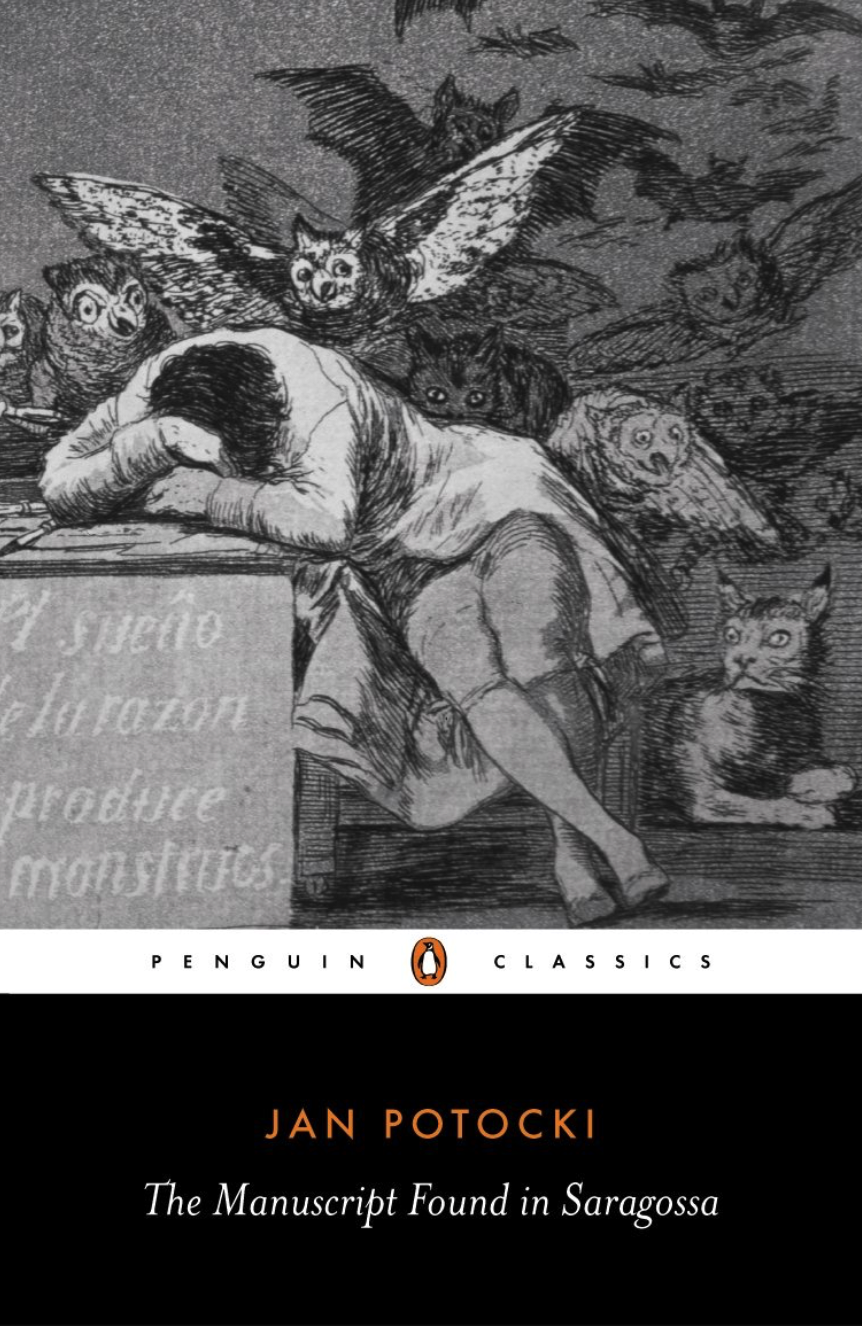

Outline by Martin Schell / Anne Guérin-Castell, Manuscrit trouvé à Saragosse / Looking for the Manuscript Found in Saragossa / Jean Potocki, Manuscrit trouvé à Saragosse (versions de 1804 et de 1810), établissement du texte, notes, chronologie et bibliographie par François Rosset et Dominique Triaire, GF Flammarion, 2008 / Luc Fraisse, «Jean Potocki, Manuscrit trouvé à Saragosse (version de 1804), Manuscrit trouvé à Saragosse (version de 1810)», Studi Francesi, 157 (LIII | I) | 2009, 186-187. Part of the 1810 edition in French.
Dennis Duncan and Adam Smyth, ed. "Introduction," Book Parts
Shef Rogers, "Tables of contents," in Book Parts
I WILL NO LONGER POST DUE DATES FOR YOUR Discussion Questions. They're always due Sundays and Tuesdays by 5:00 p.m. [email protected]
Over the rest of the semester we will revist the questio "What is literary? by conducting various experiments in not redaing, non-reading (reading only the table of contents and chapter headings, including the table of contents of Bayard's book, the paratexts of Pale Fire, conceptual poetry that takes a literary, philosophical, or archival source and renders more or less unintelligble and unreadable, and reading by cross-references in literature and in scholarly publications and reference books (encyclopedias). We will explore how the ir-responsibilities of literary and scholarly nonreading intersect and overlap with the ir-responsbilities of conceptual poetry. Both kinds of nonreading are concerned with the limits of the playful, what counts as good writing and good poetry (canonical). Cross-references pull the reader in two directions, one being toward legibility, clarifying and unifying supplements (paratexts, directions for reading) and the other direction toward illegiblity, subtracting, redacting, erasing, depositioning, and even destruction. Moreover, cross-references are as much about finding as they are about losing. (cf. Proust's Finding Time Again)

Notice below how the marketing of a book may deform its title. Reading Dworkin's book cover is difficult due to lack of spacing between words. Reding the Amazon title is easy. The only incidentally bizarre thing Amazon does here is to put a colon at the end of the title folllowed by the author's name. In my capture, Dworkin's first name and second name are spatially separated, leaving you momentarily hanging when you get to "Craig." Is Amazon's deformation just an error? Or could it be considered an accidental conceptual poem? Is there a place for accidents and uncaught errors in conceptual poetry? The rating is kind of amusing.
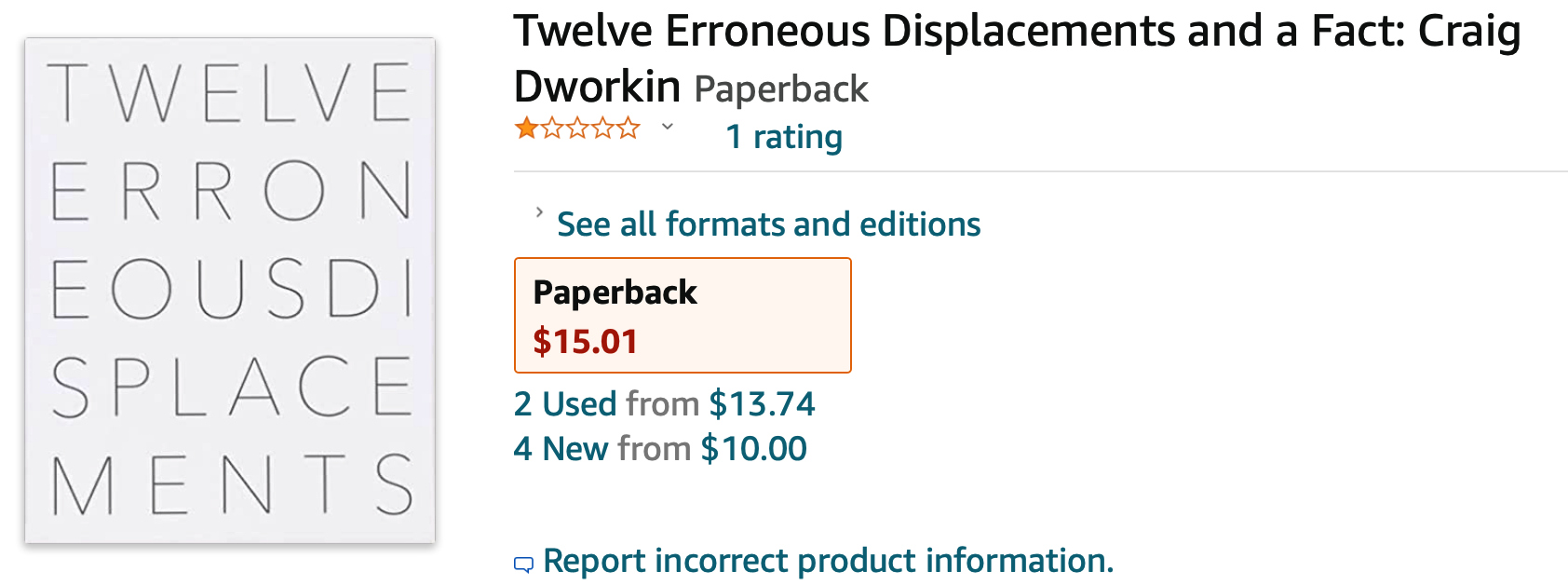
January 27
The assignment has been erased.
Recommended Reading:

Helen Vendler, The Art of Shakespeare's Sonnets
January 27
REQUIRED READING
Vladimir Nabokov, Pale Fire, pages 11-110, ends with "and while pacing about and pondering his" (p. 80 on Gutenberg). You can read the novel online here. Or you can read a pdf of the paperback here.


Recommended Reading for Ryhming Couplets:
Alexander Pope, An Essay on Man: Epistle I

January 29
REQUIRED READING
Vladimir Nabokov, Pale Fire, pages 110-210, ends with "He knew she had just come across a telltale object--a" (page 150 in the Gutenberg.)

See Also / Further Reading:
Pale Fire: A Poem in Four Cantos by John Shade (2011)
Dmitri Nabokov, Original of Laura
Yuri Leving, ed. Shades of Laura: Vladimir Nabokov's Last Novel, The Original of Laura (2013)
Gérard Genette, discussion of Pale Fire in Paratexts (p. 10; p. 84; p. 289; p. 289n.49 is on Lolita; 323; 341-43)

Jenny Sawyer, "Footnotes," in Book Parts (reading the corrected proofs)
FIRST PAPER DUE by 11:50 Feburary 7. I will give your more details, but for now know that I will ask you to nonread one of the books we have read so far. Recommended Readings are fine too.
February 1 "I have no desire to twist and batter an unambiguous apparatus criticus into the monstrous semblance of a novel" (86).
REQUIRED READING
Vladimir Nabokov, Pale Fire, pages 211-315 (read to the end of the novel, including the index).

Further Reading / Further Reading:
John Pier Style, "Between Text and Paratext: Vladimir Nabokov's Pale Fire," Studies in Fiction Vol. 26, No. 1,(Spring 1992), pp. 12-32.
Michael Seidel, "Pale Fire and the Art of the Narrative Supplement," ELH Vol. 51, No. 4 (Winter, 1984), pp. 837-855
February 3 Finding Your Place: Secular cross-references and other guides for the reader
Required Reading:
John Bunyan, The Pilgim's Progress, First Part, pp. 3-59, ending with "saying, *Nay, in all these things we are more then Conquerours"
or read a facsimile of Pilgrim's Progress "as originally published"
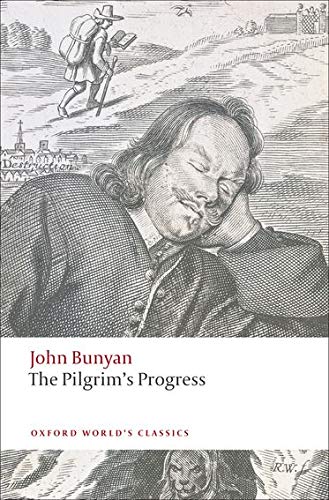
See Also / Further Reading:
Compare The Pilgim's Progress with Franz Kafka's "Before the Law"
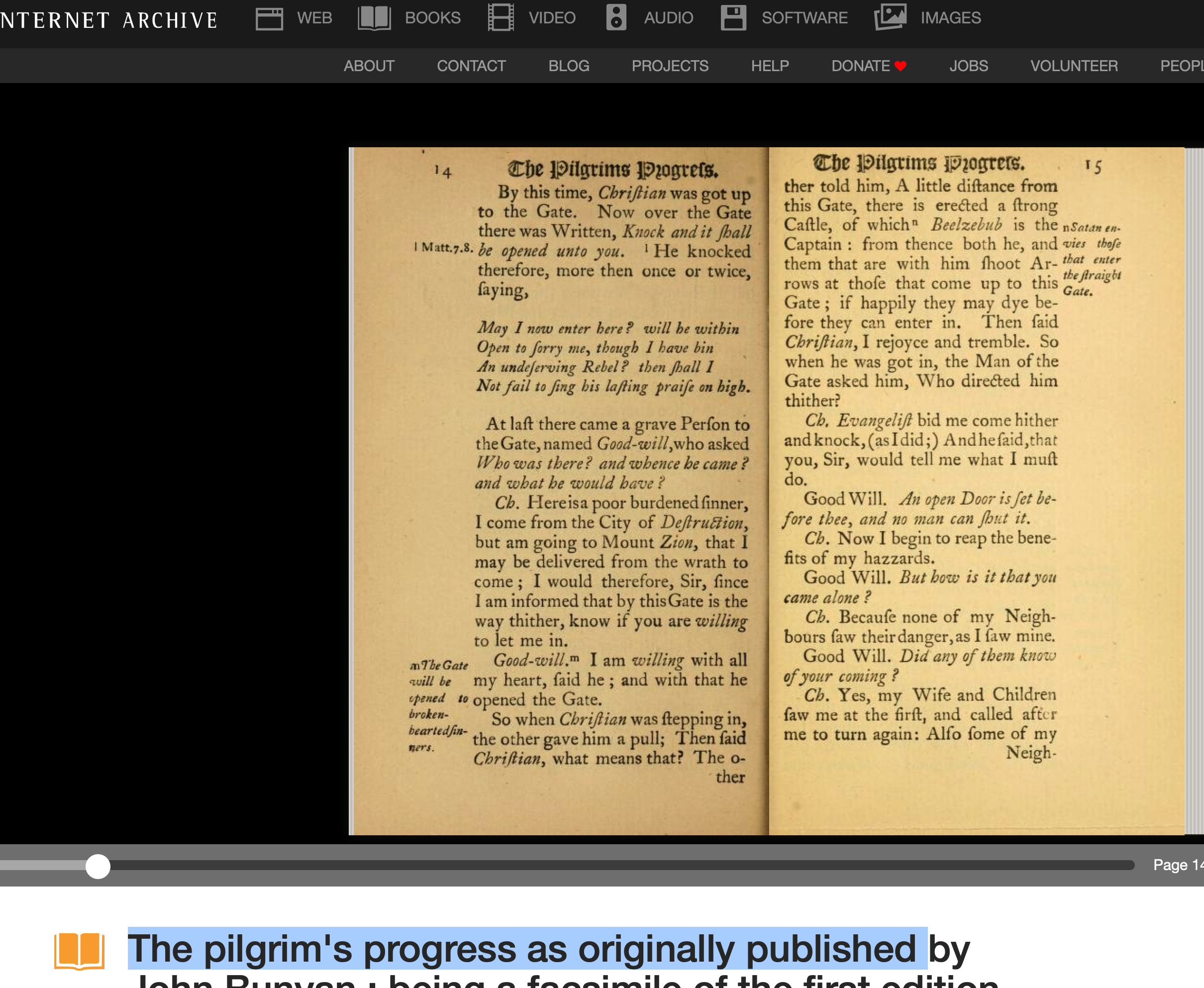
Reading by Chance: Lighting on a passage

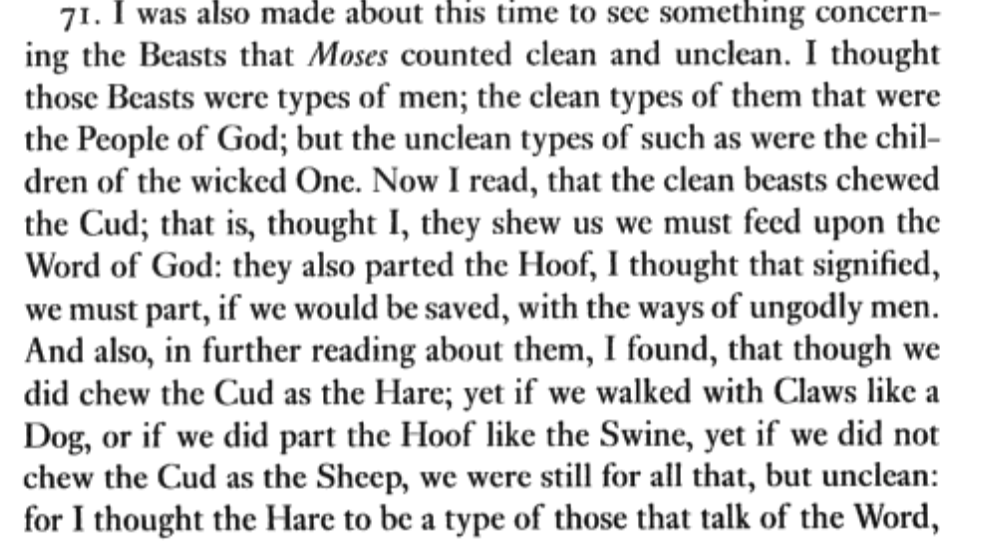
--John Bunyan, Grace Abounding: With Other Spiritual Autobiographies (Oxford World's Classics)
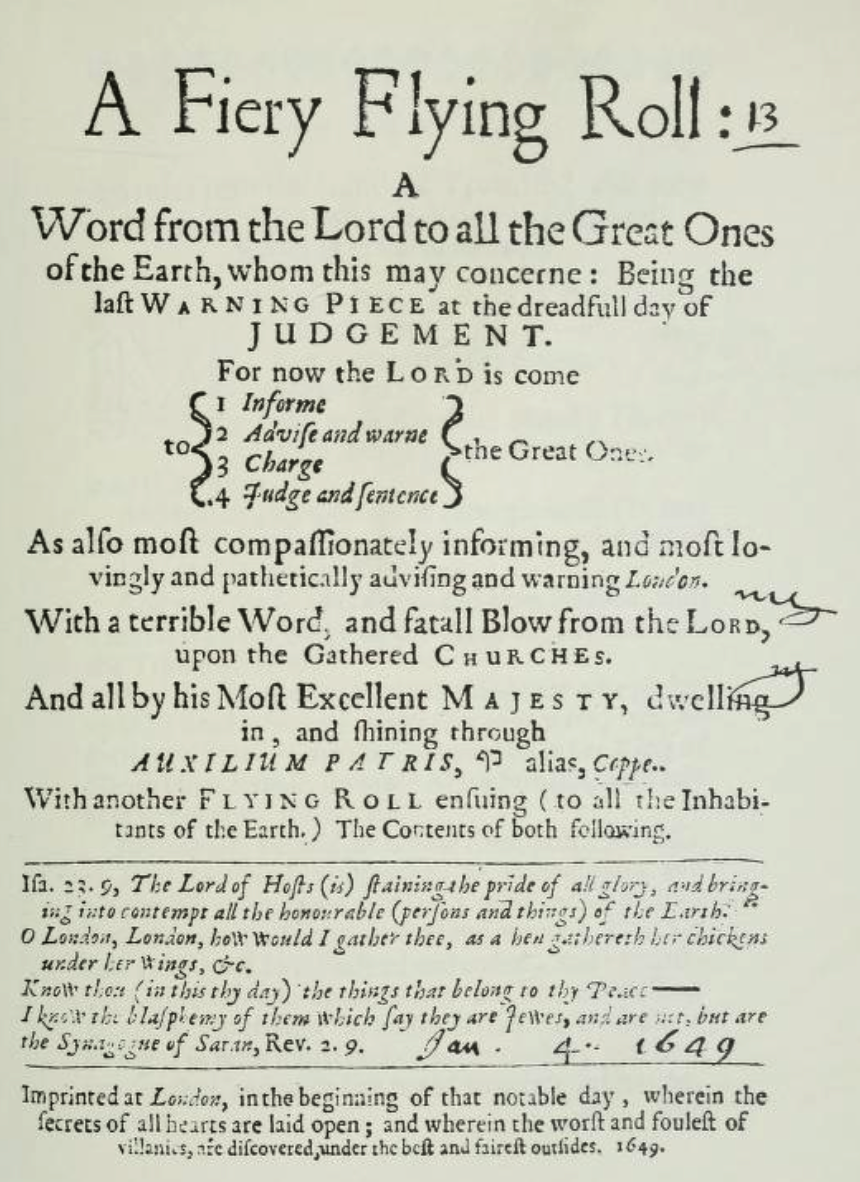
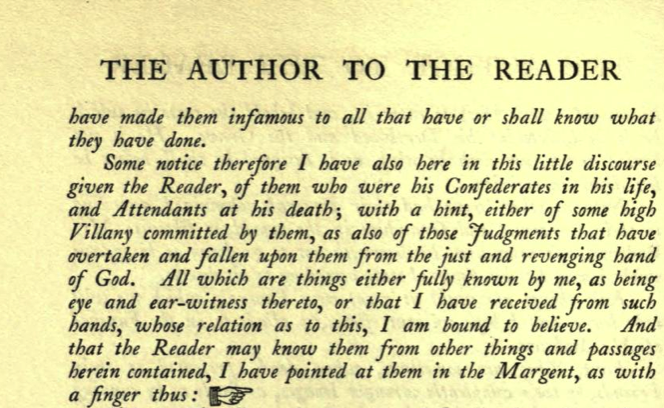
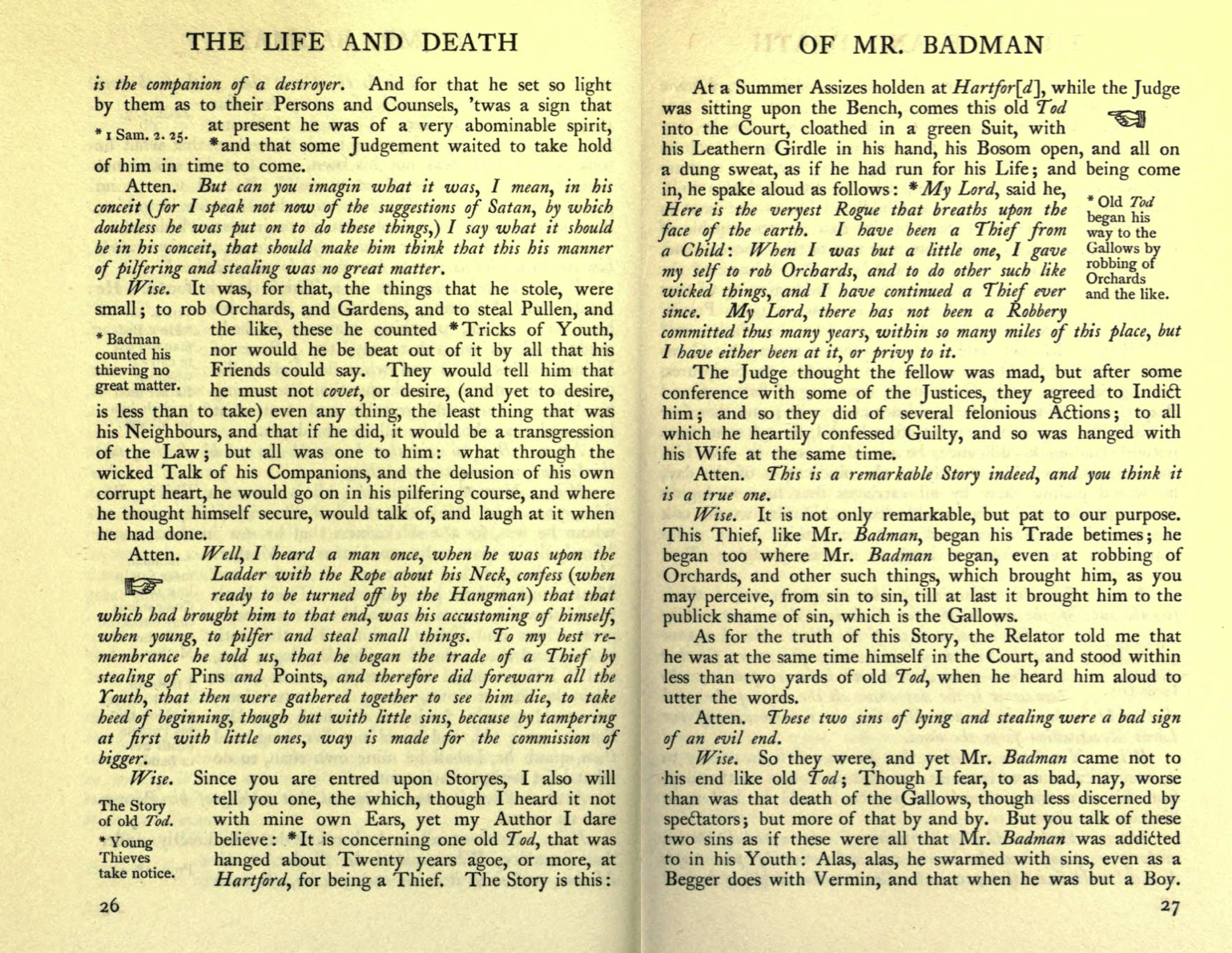
FIRST PAPER DUE by 11:50 Feburary 7. I will give your more details, but for now know that I will ask you to nonread one of the books or poems. Recommended Readings are fine too.
Required Reading
John Bunyan, The Pilgim's Progress, pp. 61-155, ending of the First Part with "Conclusion"

See Also / Further Reading
Stanley E. Fish," Progress in Pilgrim's Progress," in Self-Consuming Artifacts (1972)
The Problem of Attribution in Printed (Biblical) Marginalia: What did the author manage? What did the printer manage? These questions arise only if you expect uniformity rather than multiplicity in printing practices, only if you think you can always and easily tell why some authors provide guides to their readers and others do not and assune all guides are fully functional.
Maxine Hancock, ‘Nor do thou go to work without my Key’: Reading Bunyan Out to the Edges," The Oxford Handbook of John Bunyan
Maxine Hancock, "Chapter Two: Bunyan's Margins: The Received Convention," in The Key in the Window: Marginal Notes in Bunyan's Narratives
Wolgang Iser, "Chapter 1: Bunyan's Pilgrim's Progress: The Doctrine of Predestination and the Shape of the Novel" in The Implied Reader: Patterns Of Communication In Prose Fiction From Bunyan to Beckett
FIRST PAPER DUE by 11:50 Feburary 7. I will give your more details, but for now know that I will ask you to nonread one of the books. Recommended Readings are fine too.
February 8
Required Reading:
1. "Discontinuous Reading": Peter Stallybrass, "Books and Scrolls: Navigating the Bible"
2. "Consultative Reading": Ann M. Blair, "Reference Genres and Their Finding Devices," in Too Much to Know: Managing Scholarly Information Before the Modern Age, 117-72; and notes.
Different Assignment: Explain what you decided to not / nonread and why (150 words on each non-reading)
Read both essays below carefully enough to know what you need to read to understand them and what you can skim (not skip). Reading for what is important will involve both linear reading and discontinuous: reading one page after the next and skipping back and forth between pages. Note any subheadings dividing an article into subsections. The subheadings may help you decide what you must read or not read. (This is also an exercse in deciding when you need to know about an article, when you need to know it, and when you need (want to) read it well (possibly more than once).
Recommended Discontinuous and Consultative Reading:
The Case of Annew Askew, discussed by Peter Stallybrass, "Books and Scrolls: Navigating the Bible", pp. 69-72
Anne Askew's examinations in John Bale's edition, with blocks of Bale's commentary printed in a smaller type font preceded by Johan Bale just as her tet is preceded by her name spelled Annew Askewe, and these blocks inserted in the text and along with marginalia addded to them and to Askew's text; and Askew's examinations printed in John Foxe's Book of Martyrs, with marginalia (the text is continuus). Askew cannot remember all of what she said because her examinations could have lasted as long as five hours.
The Examinations of Anne Askew An Electronic Edition (in progress)
Edward Vaughan, preacher at St. Mary Woolnoth, Ten introductions how to read, and in reading, how to vnderstand; and in vnderstanding, how to beare in mind all the bookes, chapters, and verses, contained in the holie Bible. With an answer for lawyers. Physitions. Ministers. London: Printed by A. Islip, 1594.
Patricia Pender, "Framing the Reformation Woman Writer: John Bale's Prefaces to Anne Askew's Examinations," Parergon, Volume 29, Number 2, 2012, pp. 29-45.
Patricia Pender, "Reading Bale Reading Anne Askew: Contested Collaboration in The Examinations," Huntington Library Quarterly Vol. 73, No. 3 (September 2010), pp. 507-522.
Ephraim Chambers, CYCLOPAEDIA. VOLUME 2 [L-Z] [ 1741] entry on "memory."
"In truth I rejoice and thank God because I have finally gotten out of the labyrinth in which I was trapped for almost three years."
--Conrad Gessner, Bibliotheca universalis (1545)
February 10
REQUIRED VIEWING
The Russian Ark (dir. Alexander Sokurov, 2002) [Recall Alain Renais' All the Memories of the World.]
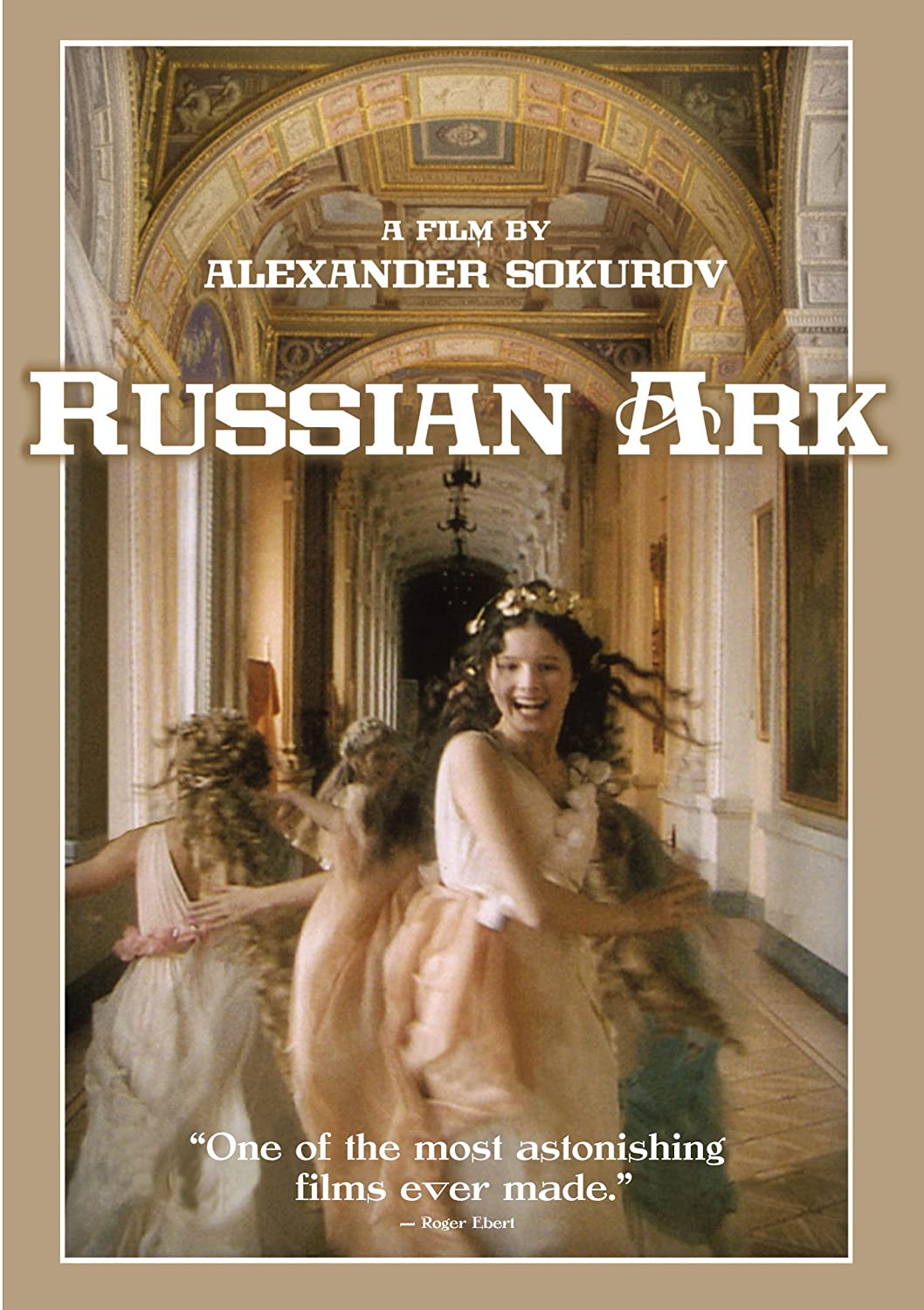
February 12
See Also / Further Reading:
Preview of the rest of the semester
William Sherman, "Introduction: How to Read a Book c. 1600," Used Books
Ann Smock, "Introduction," in What Is There to Say?
T. S. Eliot, The Wasteland (the unhelpful footnotes)
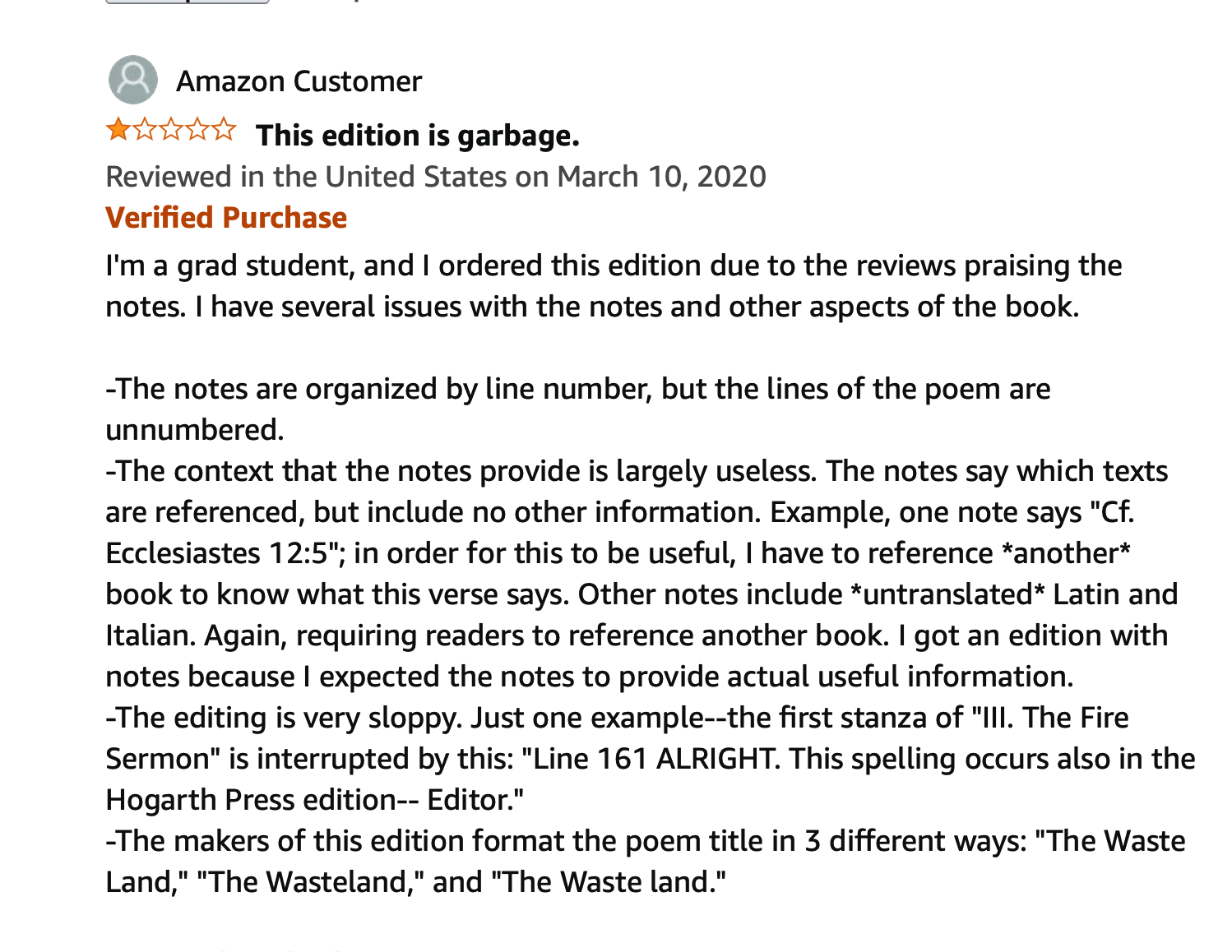
Markus Krajewski, Paper Machines: About Cards & Catalogs, 1548-1929
Lawrence Lipking, "The Marginal Gloss"
The Philosophy of the Book:
"Reading Rooms Reading Machines," in Fantasies of the Library Ed. Anne Sophie Springer (2016)
"Fantasies of the Library," in Fantasies of the Library Ed. Anne Sophie Springer (2016)
February 15 Intra-textual cross-references in the longest (British) novel in English
in the English language (nine volumes) Samuel Richardson, Clarissa Facsimile of the Third Edition Vol.1 / Vol. 5 / Vol. 6 /Vol. 8 / / Conduct Books for Young Women / Letters written to and for particular friends, on the most important occasions. Directing not only the requisite style and forms to be observed in writing familiar letters; but how to think and act justly and prudently, in the common concerns of human life, etc. [By Samuel Richardson.] // Guides to Letter Writing: Samuel Richardson and the Art of Letter-Writing / British Library: Conduct book for women // Sylvia Kasey Marks, "Clarissa as Conduct Book" South Atlantic Review, Vol. 51, No. 4 (Nov., 1986), pp. 3-16 / / Epistolary Literature Melvyn Bragg discusses the 18th Century
Downame, John, d. 1652,A guide to godlynesse or a Treatise of a Christian life shewing the duties wherein it consisteth, the helpes inabling & the reasons, parswading vnto it ye impediments hindering ye practise of it, and the best meanes to remoue them whereunto are added diuers prayers and a treatise of carnall securitie by Iohn Downame Batcheler in Diuinitie and minister of Gods Word.
Episode 1 | A Very British Romance with Lucy Worsley / A Very British Romance with Lucy Worsley Episode 1 of 3
Richardson's sometimes cross-references letters, pages, and paragraphs in earlier volumes, later volumes, the same volume; he sometimes cross-references a page in the same volume located only a few pages later and somes over 100 pages later.
How responsive does the attentive reader have to be to be considered attentive? Or does "attentive" mean simply understood the intended meaning correctly?
Annotated Books Digitized edition of Clarissa (Princeton University) Online Books by Samuel Richardson
Recommended Viewing (for the plot): Clarissa (1991) BBC
REQUIRED READING:
2. The Mad Papers, Vol V, Letter 36, pp. 303-08.




:

SEE ALSO / FURTHER READING
Clarissa Burt notes on Angus Ross edition (2019)
Clarissa Angus Ross, ed. first edition random cross-references
A discussion of the Manicule Letter:
Christopher Flint, "Chapter 3_Dark Matters Printer's Ornaments and the Substitution of Text," in The Appearance of Print in Eighteenth-Century Fiction (2011)
Janine Barchas, "Introduction: Prose Fiction and Print Culture in Eighteenth-century Britain," in Graphic Design, Print Culture, and the Eighteenth-century Novel
"The Typographical Ego-Trip from ‘Dryden’ to Prufrock"
"Typographical Travels Through Tristram Shandy"
Anne Toner, Ellipsis in English Literature: Signs of Omission (2015)
February 17 Samuel Richardson, Clarissa
REQUIRED READING:
Lovelace's Letters to Belford in Vol 3, pp. 71-89 and all letters cross-referenced in that letter.
See Also / See Further
Clarissa Vol 2 Let 30, 31 added marriage proposal
Clarissa Vol 2 Biblical references (as in The Pilgim's Progress and early other early modern books)
Richardson's paratexts / Richardson as writer vs. Richardson as critic (echoes a similar distinction Samuel Taylor Coleridge makes between Bunyan as Parnassus and Bunyan as the Conventicle; see also, William Blake on John Milton (being of the devil's party without knowing it).
The First Edition Versus the Third Edition (it's much longer and nearly all contemporary critics hate on it.)
Terry Castle, "Bibliographic Postcript," Clarrissa's Ciphers "The Voyage Out"
You may consult Warner's response, "Redeeming Interpretation"
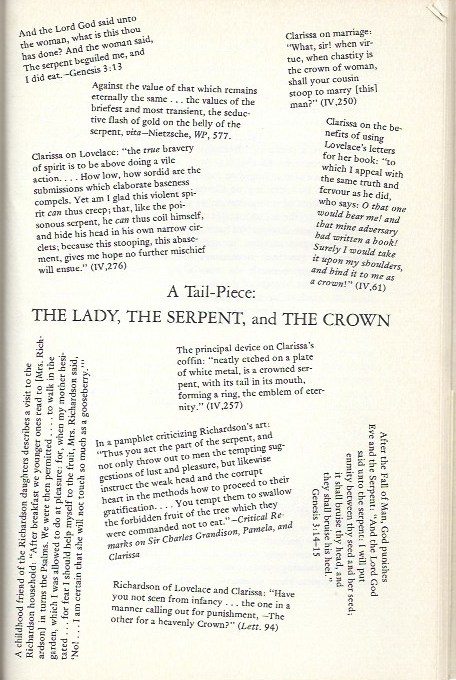
February 22
REQUIRED READING: (Write one DQ on your continuous reading experience and one DQ on your discontinuous reading experience and six BIG words)
Directions: Open a second browser with this same page open. In this browser, open and read Clarissa Manicule Letter Vol V, Let 4 continuous pages and tofc to Vol 5 continuously: focus on Lovelace's manicules printed next to Anna Howe's letter. Then read Vol V, Let 14 again opened in this browser,and this time read the letter discontinuously. Each time you come to a cross-reference in Vol V Let 4, click on the link in the second browser under "3" below. Read the cross-referenced letter, close out the page after you've read it, then return to Vol V, Let 4 in this browser and pick up where you left off. Keep reading until you come to the next reference. Repeat as required. After reading Vol V, Let 4 both continuously and discontinuously with the cross-referenced letters and pages, read Vol V, Let 4 pp. 29-50 in this browser (see "4" below). Also, consult the cfs to Vol V Let 4 as you read Vol V Let 14.
1. The Manicule Letter Vol, Letter 4 pp. 29-50, enclosing a letter written by Anna Howe to her friend Clarissa Harlowe intercepted by Robert Lovelace, marked up by him with manicules and then sent, along with his cover letter, to his friend John (Jack) Belford:
Clarissa Manicule Letter Vol V, Let 4 continuous pages and tofc to Vol V pp. 29-50
2. Reread the Manicule Letters but read each cross-referenced letter when it appears at the bottom of the page. I have indicated the page number in Vol V Let 4. After reading the cross-referenced letter or letters, return to Clarissa Manicule Letter Vol V, Let 4 continuous pages.
Clarissa Manicule Letter Vol V, Let 4 continuous pages and tofc to Vol V pp. 29-50 (you may have to skip over the tofc to get to pages 47-50)
p. 30 (a) Manicule cf to Vol IV Letter 34 (pp. 188-99; Clarissa to Anna; then the editor shifts the writer to Lovelace (writing to Belford), omitting Clarissa's letter; then the editor again shifts the writer back to Clarissa, closing with the end of Clarissa's omitted letter).
Clarissa Manicule Letter Vol V, Let 14 continuous pages and tofc to Vol 5 pp. 29-50
p. 32 (a) Manicule cf to Vol III Letter 34 and Letter 35 (pp. 177-86; Clarissa to Anna; Lovelace to Belford)
Clarissa Manicule Letter Vol V, Let 4 continuous pages and Contents (tofc) (pp. 355-58) to Vol 5 pp. 29-50
p. 32 (b) Manicule cf to Vol 3 Let 52 (pp. 260-64; Anna to Clarissa)
Clarissa Manicule Letter Vol V, Let 4 continuous pages and tofc to Vol 5 pp. 29-50
p. 41 (a) Manicule cf to Vol IV P. 64 (Let 11 Anna Howe to Clarissa; Let 12, Clarissa to Anna)
Clarissa Manicule Letter Vol V, Let 4 continuous pages and tofc to Vol 5 pp. 29-50
p. 43 (a) and (b) Manicule: both (a) and (b) cf the same letter, namely, Vol 4 Letter 54 (pp. 330-34; Lovelace to Belford)
Clarissa Manicule Letter Vol V, Let 1 continuous pages and tofc to Vol 5 pp. 29-50
p. 44 (a) Manicule cf to Vol V, P. 70 Let 14, Mrs. Norton to Anna Howe; visible, even memorable but not cross-refereced: Anna's response to Mrs. Norton in Let 15 on pp. 70-71)
3. After you have finished reading Vol V Let 4 discontinuously, read Vol 5 Let 14 pp.151-61 continuously. You will see that all eighteen of the cross-references are to page numbers and will discover that those page numbers are all in Vol V Let 4.
Lovelace's Letter Vol 5 Let 14 enclosing another intercepted letter from Anna Howe with italicized passages Lovelace added to indicate his additions to Anna Howe's letter, complete with cross-references to her previously intercepted letter enclosed in the Manicule Letter, Vol V Let 4. Vol 5 Let 14 is almost a rewrite or at least a redo of Vol V Let 4.
Vol 5 Let 14 cfs to the Manicule Letter, pp. 151-61
Recommended: Further Experiments in Discontinuous Reading
Clarissa Vol 4 Contents pp. 377-83
Clarissa Vol 1 Letters referenced in Vol 2 Letter 1
Ann Blair and Peter Stallybrass, "Mediating Information- 1450-1800," in This Is Enlightenment, Ed. Clifford Siskin, William Warner



February 24 Clarissa as source text for concrete / conceptual poetry
Professor Nicholas Nace will be joining us on Zoom to discuss his book Catch-words and his review of Book Parts, edited by Dennis Duncan and Adam Smyth.
REQUIRED READINGS
1. Bill Sherman, "Toward a History of the Manicule" in Used Books (2006)
2. Daniel Sawyer, "Chapter 11. Page Numbers, Signatures, and Catchwords," in Book Parts, edited by Dennis Duncan and Adam Smyth.
3. Nicholas Nace, Catch-words Directions sample (Notice the clever layout of the title on the book cover, using all lower case letters breaking the word in two and putting "catch" just to lower left of "words". You may momentarily read the words backwards, first "words" first and then immediately correct yourself as you get to "catch-" and "catch-on" on that the title is catch-words)
Notes:
The word "catch" resonates--as in "caught," but a "catch" is a kind of polyphonic musical composition that Nace uses at the end of his poem, and "catch up" (read the words from right to left, using the hyphen).
The insert "Directions for Reading" are printed on one sheet of paper and not bound with the book. You have to unfold the paper and turn it around in order to read the page numbers in order. The first and last pages appear on the same fold in reverse order. Compare editions of Pilgrim's Progress that deleted the marginalia (considered as "religious static") with editions of Clarissa that dropped the catch-words. Nace's use of one sheet for the directions is called an "imposition," in his case for an "octavos" (referring the number of times the sheet was to be folded; there were also quartos [folded twices], folios [folded once], and duodecimos [twelve pages]). It was used in early modern books. Here are examples of how the page was printed with the pages out of order but assigned signatures (letters and numbers) so they could then be cut apart, reassembled in their intended order, and bound (sewn) by the printer: "Deciphering signature marks" August 7, 2012 | By Sarah Werner


See Also / Further Reading:
In Brief Gatherings By Gill Partington May 10, 2019 IN THIS REVIEW CATCH-WORDS 148pp. Information as Material. Paperback, £14. Nicholas D. Nace
Clarissa Vol VI let 73 Lovelace discussing the post-office bullet before another intercepted letter by Anna Howe, including the two cross-reference pages in Vol VI and the cross-referenced page in Vol V Let 27; including all of the letter Vol V let 27 and the relevant pages from the tables of contents in Vol VI and Vol V.
Nicholas Nace, "Samuel Richardson's 'Post-Office Bullet'"
Nicholas Nace, "Clarissa Self-Abridgment Instuctions"


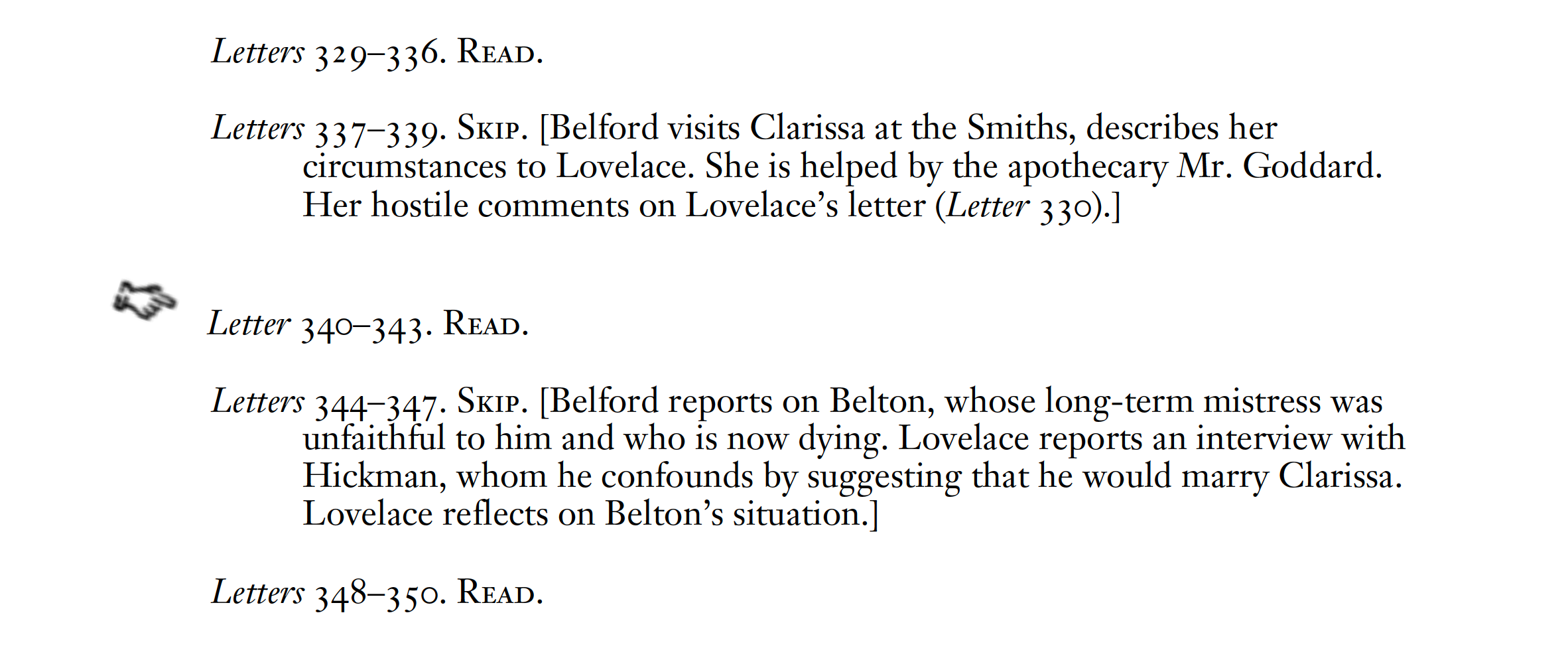

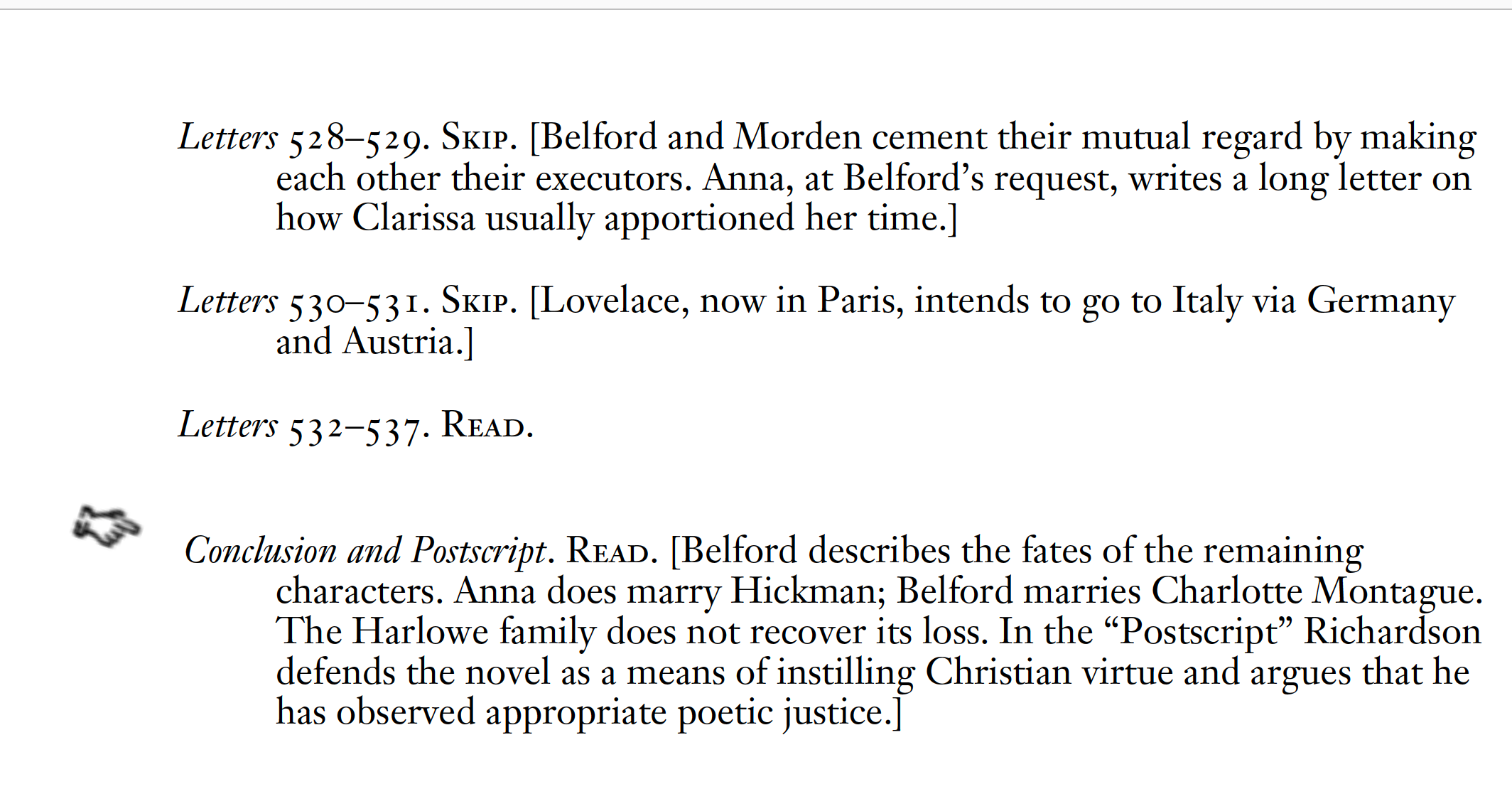
A Rake's Progress, with commentary here: June 25, 1735 William Hogarth British
February 26
See Also / Further Reading
But First FINDING the book. Bookmarking
What did you find?
"Found Object" / The Readymade / Dog-eared pages
What Richardson asked readers of the first and second editions of Clarissa to do if they didn't want to buy the third edition: The reader as printer.
"Vol. iii. Edit. i. p. 141. l. 8. and Edit. ii. p. 140. l. 24. "after 'what I did,' dele [sic] the two following lines, and insert,"
Letters and passages restored from the original manuscripts of the history of Clarissa. To which is subjoined, a collection of such of the moral and instructive sentiments . . . Digested under Proper HEADS. Published for the Sake of doing Justice to the Purchasers of the TWO FIRST EDITIONS of that Work.
Shirley Van Marter, "Richardson's Revisions of Clarissa in the Third and Fourth Editions"
Shirley Van Marter, "Richardson's Revisions of Clarissa in the Second Edition"
Florian Stuber, "On Original and Final Intentions, or Can There Be an Authoritative Clarissa?"
Breaking News: Even a punctuation mark can make a huge difference in meaning. For example, UF's required course "What is the Good Life?" does not include the question mark. The admin running this course, which they force everyone teaching it, including professors, the same way can't even see that Socrates was asking a philoosphical question! They are so deeply anti-inteelctual they the question into an answer "What is the Good Life" equals "This is the Good Life." The lack of just one punctuation mark speaks volumes about what UF "thinks" of the Humanities. No wonder students hate the course. We return you now to the previous program.
March 1
REQUIRED READINGS:
Reading Clarissa's Rape Third Edition, 1758, Vol 5, p. 291: Continuously or Discontinuously?
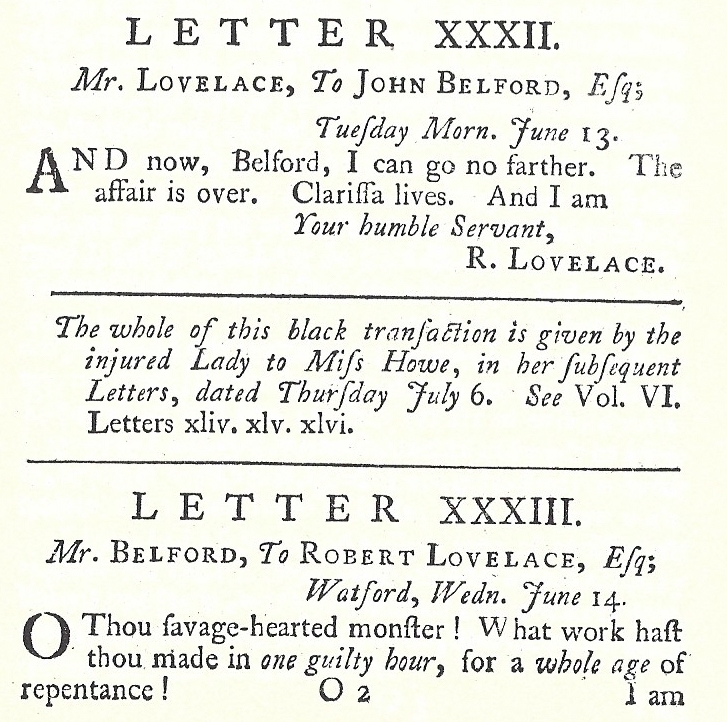
Continuous Reading
1. Clarissa Vol V (includes Belford's Letter to Lovelace (XXXIII) and Lovelace's letter to Belford (XXXIV), skipping the cross-reference to Vol 3, p. 187; Contents are also included.)
Discontinuous Reading
2. Clarissa Vol VI Letters 44, 45, and 46 and returning to Vol 5, p. 291 to pick up where you left off at Belford's Letter (XXXIII) to Lovelace and Lovelace's letter to Belford (XXXIV), skipping the cross-reference to Vol 3, p. 187; Contents are also included.
Continuous Discontinuous Reading
3. Clarissa Vol V and Vol III, p187.pdf (includes Belford's Letter to Lovelace (XXXIII); the cross-reference to Vol III, p. 187; Lovelace's letter to Belford (XXXIV); Detailed Contents.)
There is a diplomatic transcription of the first edition [C1] online at the Eighteenth-Century Fiction Database through UF.
Critical Debate over Clarissa's Rape
March 3
REQUIRED READING:
Read the letters you did not read for Monday, March 1. Read either 1. Clarissa Vol V or 2. Clarissa Vol VI Letters 44, 45, and 46.
Continuous Reading
1. Clarissa Vol V (includes Belford's Letter to Lovelace (XXXIII) and Lovelace's letter to Belford (XXXIV), skipping the cross-reference to Vol 3, p. 187; Contents are also included.)
Discontinuous Reading
2. Clarissa Vol VI Letters 44, 45, and 46 and returning to Vol 5, p. 291 to pick up where you left off at Belford's Letter (XXXIII) to Lovelace and Lovelace's letter to Belford (XXXIV), skipping the cross-reference to Vol 3, p. 187; Contents are also included.
March 5
See Also / Further Reading
Two cfs to Vol 1 at the bottom of the first page of the first letter of Vol II.
Clarissa Vol 1 referenced letters from Vol 2 Let 1
Just When I Thought I Was Out, They Pull Me Back In! SCENE - The Godfather: Part 3 MOVIE (1990)
The Erotics of Reading Letters in Clarissa: (not breaking seals); the manicule as fist and finger; hand-writing; fondling; forgery of letters written by members of the opposite sex (trans-gender imagination?) [see Vol VI, p. 158 (a) cf to Vol V. p. 154, & seq., Vol. VI, 178-79]; "impress" as metaphor for kiss (on the lips) and for writing; "placations."
LETTER XXIII
MR. LOVELACE, TO JOHN BELFORD, ESQ. [IN ANSWER TO LETTER XXI. OF THIS VOLUME.] M. HALL, WED. NIGHT, JULY 19.
I long to know what Miss Howe wrote to her friend, in order to induce her to marry the despicable plotter; the man whose friendship is no credit to any body; the wicked, wicked man. Thou hadst the two letters in thy hand. Had they been in mine, the seal would have yielded to the touch of my warm finger, (perhaps without the help of the post-office bullet;) and the folds, as other placations have done, opened of themselves to oblige my curiosity. A wicked omission, Jack, not to contrive to send them down to me by man and horse! It might have passed, that the messenger who brought the second letter, took them both back. I could have returned them by another, when copied, as from Miss Howe, and nobody but myself and thee the wiser.
Nicholas Nace, "The Post-Office Bullet"
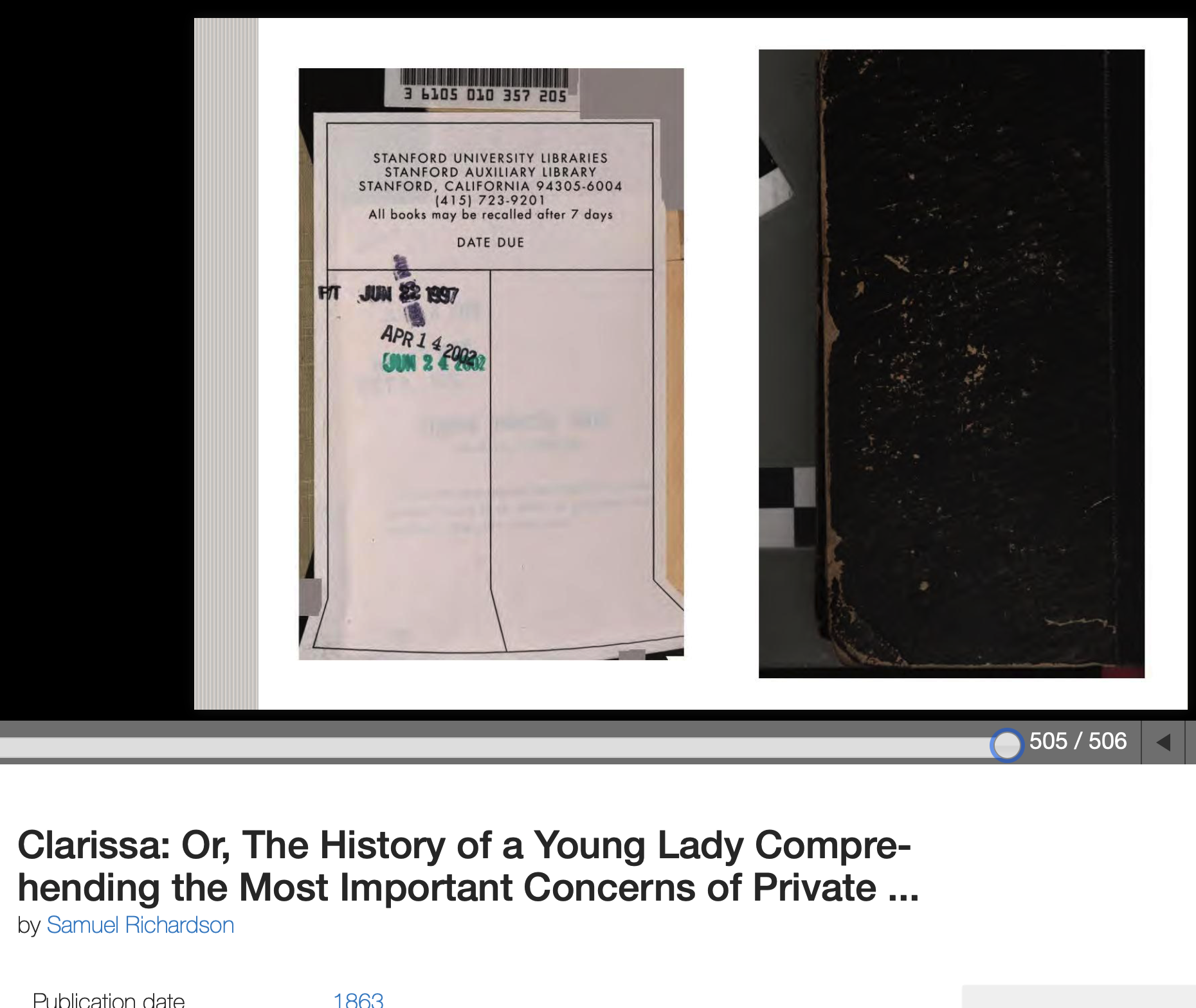
The revisions Shirley van Marter did not catalog because she thought they were not significant. What were her critieria for deciding to something was to smalll too care about (or think readers wouldn't care about)?
March 8 The Integrated Cross-Reference ("As I have mentioned above"; "As I shall have frequent occasion to mention")
REQUIRED READING
Daniel Defoe, A Journal of the Plague Year (Oxford World's Classics), pp. 3-55 (begins at "It was at the Beginning of September 1664 . . . . ") [1722]
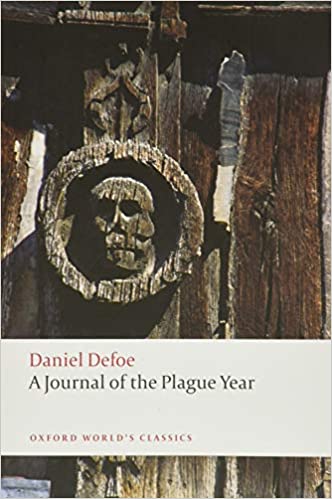
Psalm 91 KJV (the narrator reads verses 2-7, then the 10th; Oxford ed. pp. 12-13
John Bender, "The City and the Rise of the Penitentiary: A Journal of the Plague Year"
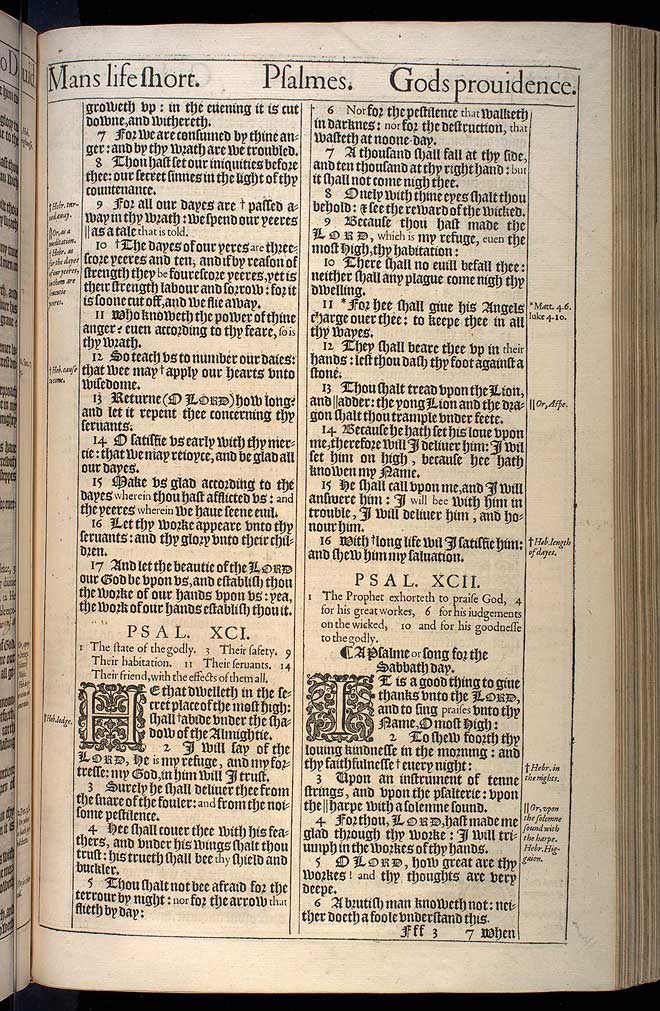
Daniel Defoe, An Essay upon Literature (1726)
Daniel Defoe, Due Preparations for the Plague, as Well for Soul as Body (1722)
"The Plague at Marseilles Consider'd" by Richard Bradley.1721 Facsimile
The plague at Marseilles consider'd by Richard Bradley (Transcription)
March 10
Daniel Defoe, A Journal of the Plague Year (Oxford World's Classics), pp. 56-109 (begins at "Harrow -Alley, in the Butcher-Row, on the other Side of the Way . . . .)

March 12
The Diary of Samuel Pepys January 1660-May 1669 (Search for "plague.")
Cynthia Wall, "Introduction" to A Journal of the Plague Year
Louis Landa, "Introduction" to A Journal of the Plague Year
Ann Carson, "Lecture on the History of Sky Writing"
Samuel Pepys and the Plague / Tokenhouse Yard, the Royal Society, and the Great Plague / TOKENHOUSE YARD
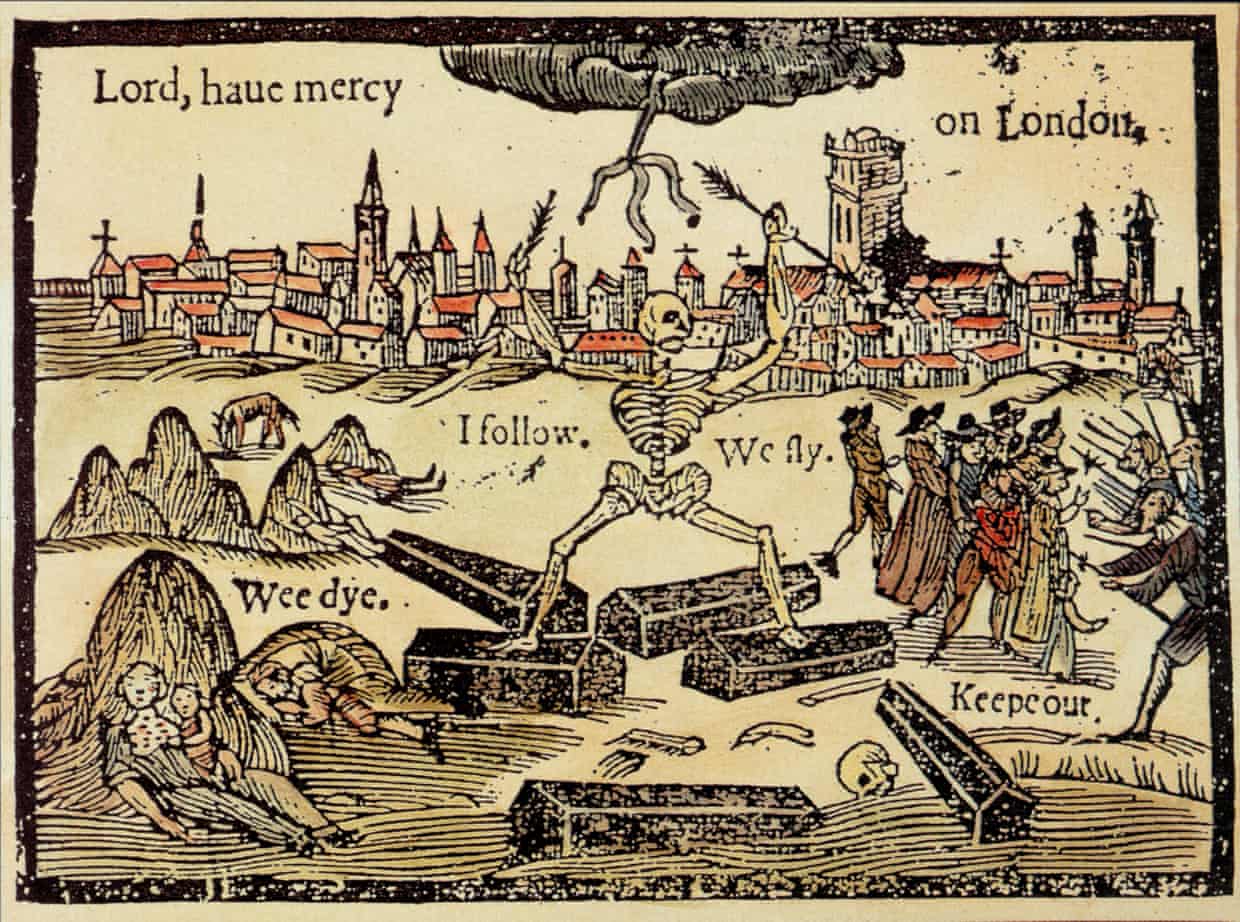
March 15
Daniel Defoe, A Journal of the Plague Year (Oxford World's Classics), pp. 110-169 (begins at "down, and a Fig for all the Inns in England;)

Judith Wilson, Fleet (2021)

March 17
REQUIRED READING:
Daniel Defoe, A Journal of the Plague Year (Oxford World's Classics), pp. 170-212; begins at "opinion, and I would leave it at a Prescription, that the best Physic . . . )

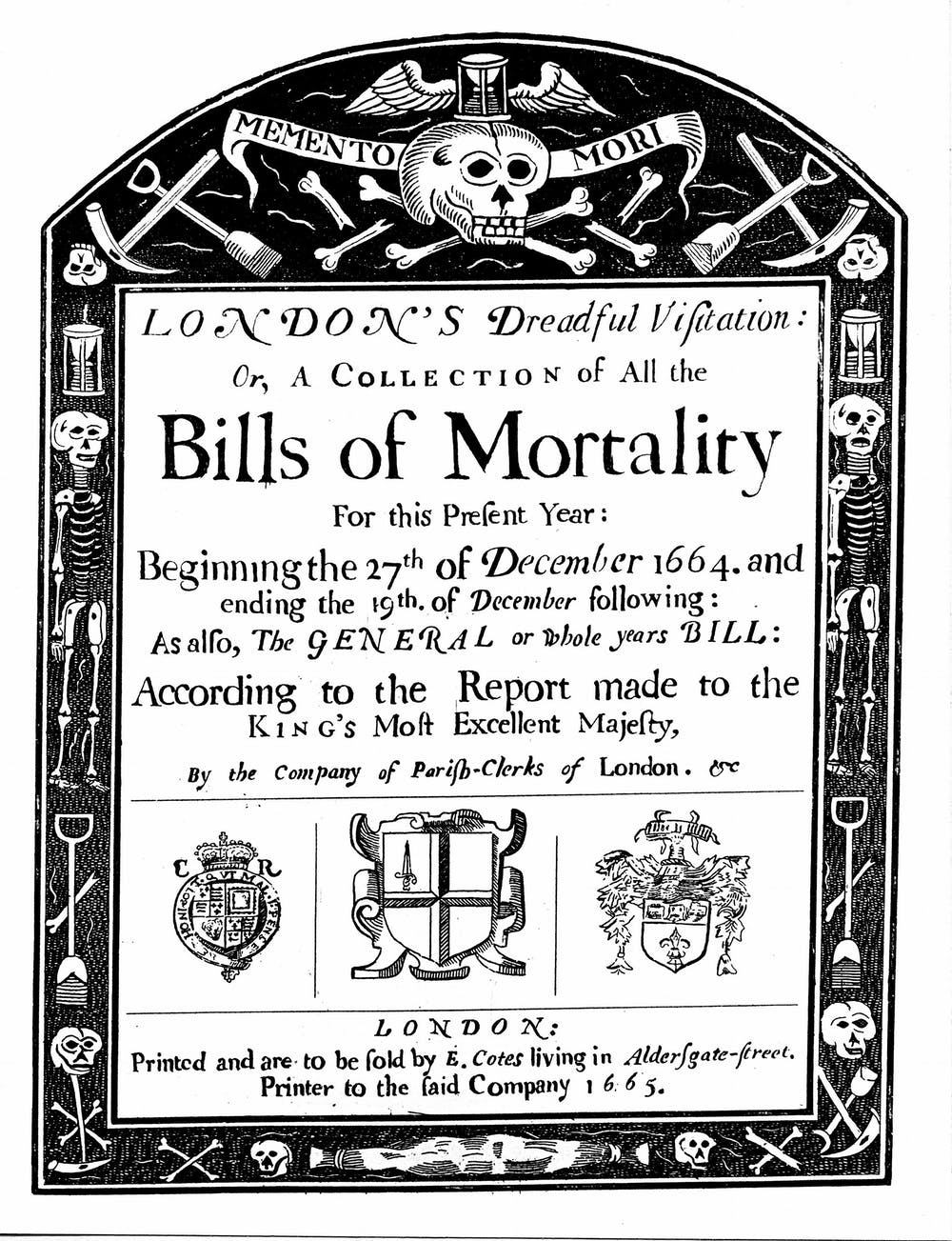
Solomon Eagle / Solomon Eccles (1618–1683) " I suppose the world has heard of the famous Solomon Eagle, an enthusiast. He, though not infected at all but in his head, went about denouncing of judgement upon the city in a frightful manner, sometimes quite naked, and with a pan of burning charcoal on his head. What he said, or pretended, indeed I could not learn. . . . I should have mentioned that the Quakers had at that time also a burying-ground set apart to their use, and which they still make use of; and they had also a particular dead-cart to fetch their dead from their houses; and the famous Solomon Eagle, who, as I mentioned before, had predicted the plague as a judgement, and ran naked through the streets, telling the people that it was come upon them to punish them for their sins, had his own wife died the very next day of the plague, and was carried, one of the first in the Quakers’ dead-cart, to their new burying-ground. . . . There were, indeed, several little hurries which happened after the decrease of the plague, and which, whether they were contrived to fright and disorder the people, as some imagined, I cannot say, but sometimes we were told the plague would return by such a time; and the famous Solomon Eagle, the naked Quaker I have mentioned, prophesied evil tidings every day; and several others telling us that London had not been sufficiently scourged, and that sorer and severer strokes were yet behind."
March 19
REQUIRED VIEWING:
The Saragossa Manuscript (Wojciech Has, dir.1965), Part Two
No DQs are required. Nothing is due on Thursday March 18.
To access this film, you will have to log into Ares and find this course LIT 4390 Section 06A5 / M193. An Introduction to the Saragosssa Manuscript

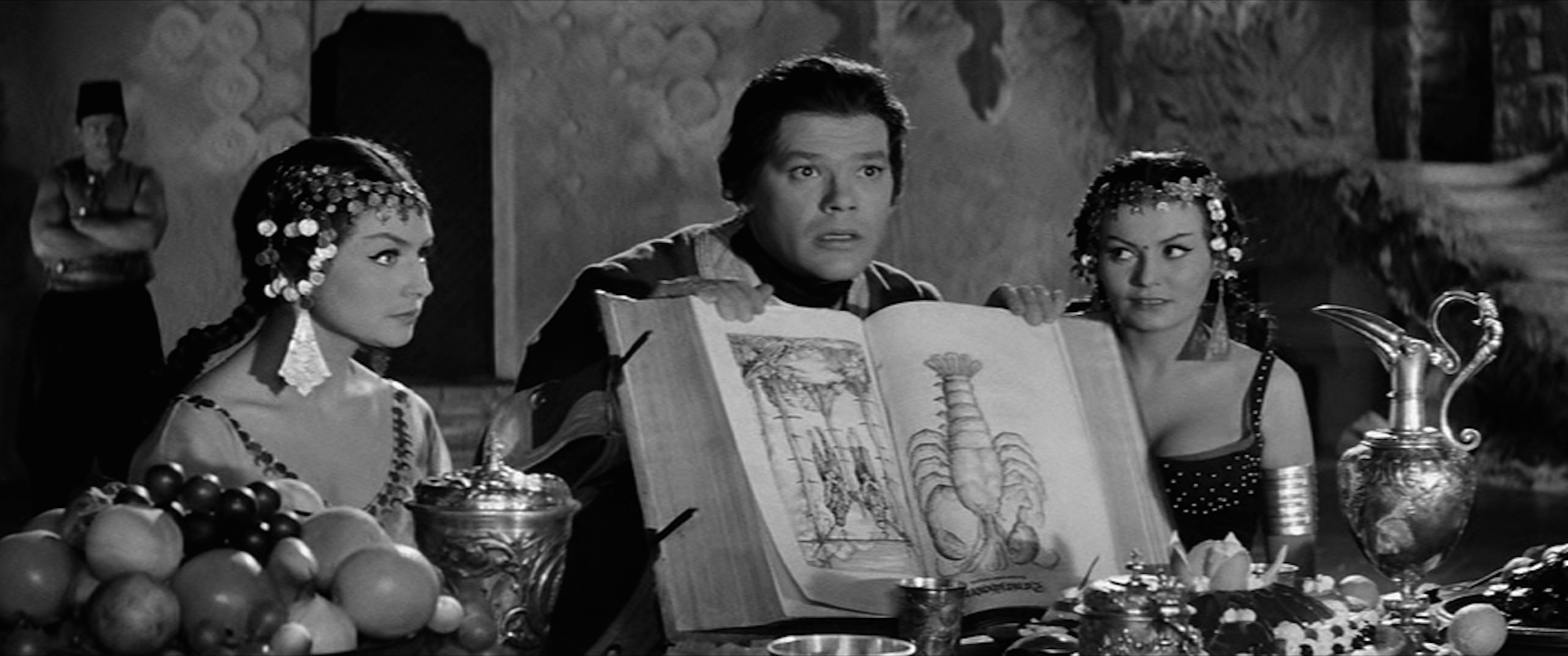
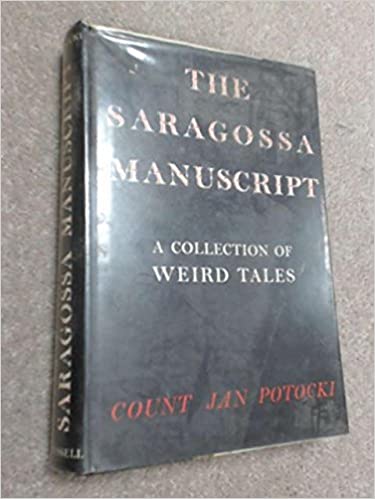
To access this film, you will have to log into Ares and find this course LIT 4390 Section 06A5 / M193.
See Also / Further Reading
Circling Back to Borges's labyrinth; the Library of Babel
Return to Ann Blair (on encyclopedias as reference books); return to Genette's spatial metaphors for the paratext (zone; threhold; vestibule)
William N. West, "Table of Contents", Excerpt from the "Introduction: Circles of Learning," and "The Space of the Encyclopedia," in Theatres and Encyclopedias in Early Modern Europe
Return to a book we skipped: Markus Krajewski, "In Praise of the Cross Reference," in Paper Machines: About Cards & Catalogs, 1548-1929, pp. 63-64; see also pp. 1-45; 50-56; 1232-42.
Guillame Appolinaire, Calligrammes
March 22
RECHARGE DAY
March 24
REQUIRED READING The Life and Opinions of Tristram Shandy (Oxford World's Classics) as an experiment in random access reading (its lack of plot means reading it page by page, from the first page to the last page, may not be the best way to read it).FYI There is a very good discussion of the look "Laurence Sterne's comic novel Tristram Shandy (April 24, 2014)" BBC In Our here at Time stamp 7:00-9:30
You may read the novel for free either in digital facsimile form here:
Laurence Sterne, The Life and Opinions of Tristram Shandy, Gentleman, Vol I
or in a diplomatic transcription here full of html errors here:
The Life and Opinions of Tristram Shandy
or in pdf form here:
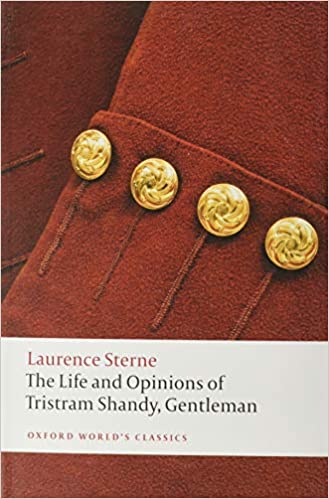
See Also / Further Reading:

The Life & Opinions of Tristram Shandy, Gentleman Vol. 1 Fourth Edition (black page)
Laurence Sterne, The Life and Opinions of Tristram Shandy, Gentleman, Vol III
Digital reproductions of the first edition of Tristram Shandy.
The cross-referenced encyclopedia Sterne consulted and from which Walter Shandy's idea of a Tristrapaedia derives:
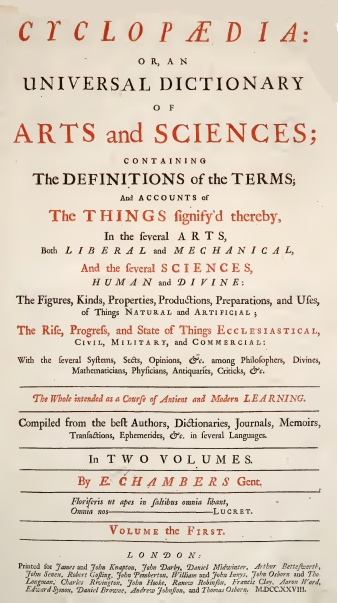

Ephraim Chambers, Cyclopædia, or an Universal Dictionary of Arts and Sciences (1728)
Cyclopædia, or an Universal Dictionary of Arts and Sciences SUPPLEMENT

The typeface Sterne used: Caslon Pica
Viktor Shklovsky, "The Art of Technique" aka "Art as Device" (Scroll down to chapter one of the pdf linked to the left)
A Playful Reader's Guide:
Reading Tristram Shandy The Tristrapedia Project.pdf
Tristrapedia Project Website
Anne Bandry-Scubbi, "Point Blank – or Fulfilling Tristram’s Command of ‘Painting’ on the Blank Page" The Shandean
John Baldessari, The Life and Opinions of Tristram Shandy, 1988 novel by Laurence Sterne in three parts with essay by Melvyn New & photocollage by the artist 6 3/4 x 10 1/4 in. / 17.2 x 26 cm
Orhan Pamuk, "Foreword to Tristram Shandy: Everyone Should Have an Uncle Like This," in Other Colors: Essays and a Story (2008), pp. 123-33.
Legibility and illegibility. What is the point of The Life and Opinions of Tristram Shandy? Is there a point? Is pointlessness the point? Productive or abortive boredom.
March 26 Reading the original page versus the modernized page: How to Read It (Aloud)? When the text becomes an image, as Voogd maintains, can You Read aloud or (silently--) Sound (out the) Irregular Punctuation--------- such as long dashes, --short dashes, -------paragraphs that begin with dashes, ---******************. parentheses, period marks, random series of numerous asterisks, catch-words, and italics? Does the cheap-looking printing of Voogd's article complicate his opposition between the original edition and modernized editions?
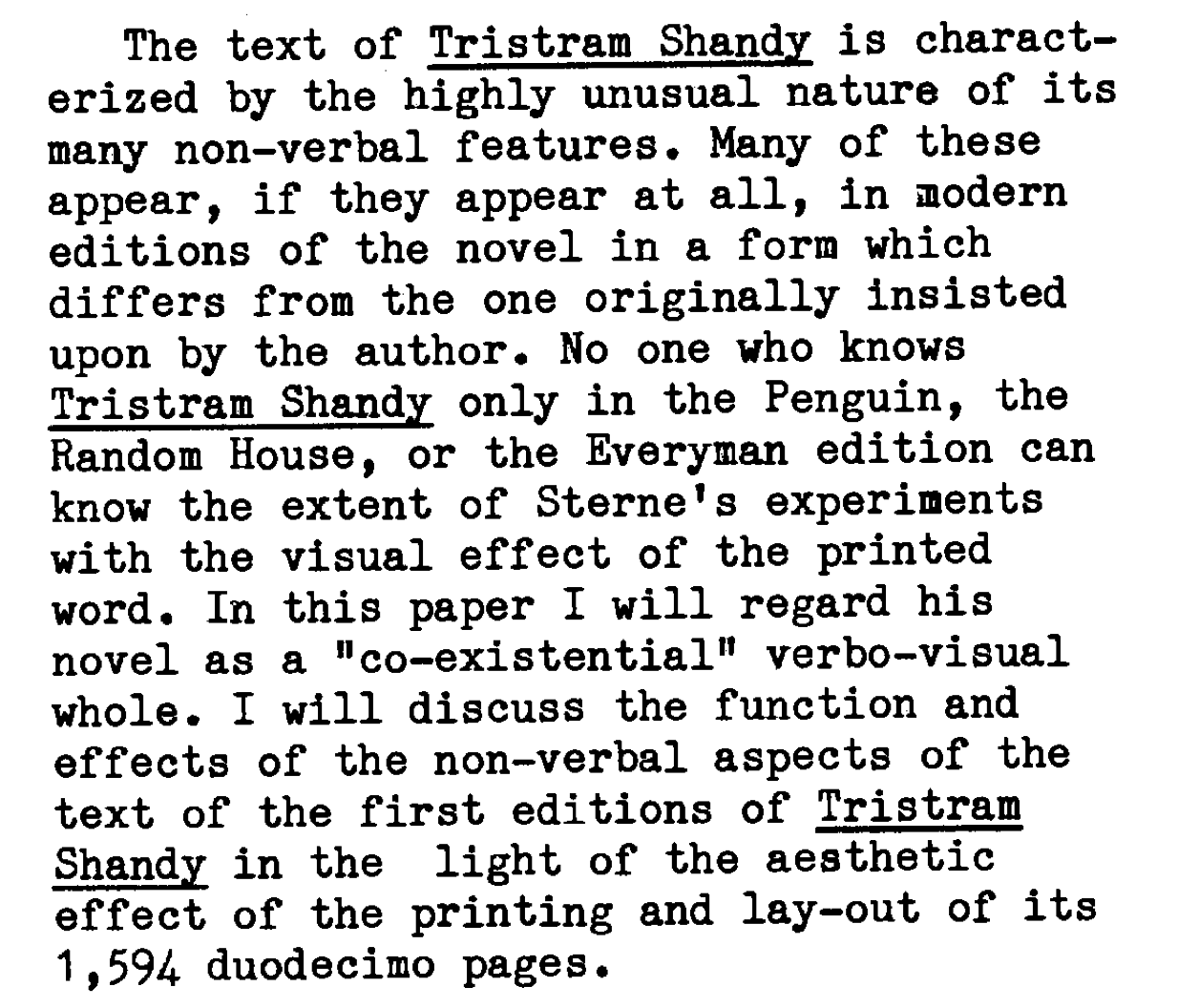
--PETER DE VOOGD, "Tristram Shandy as Aesthetic Object"
Required Readings:
There are two readings due tomorrow. Write one DQ on each reading.
Be sure to read the digital facsimile of rgw original version of Tristram Shandy Vol II
I want you to read this version so that you can see pay attention to the features that make this book an art book, namely, the page layout, chapter divisions, the black page, typography, and so on.
I recommend that you read the second reading first:
PETER DE VOOGD, "Tristram Shandy as Aesthetic Object"
I recommend reading de Voogd's essay first because it focuses on "visual look" of the page, giving you a kind of "heads up" before you read the facsimile of Volume.
2. PETER DE VOOGD, "Tristram Shandy as Aesthetic Object"
1. Read the original version of Tristram Shandy Vol II with De Voogd's essay on the novel's "visual effects" in mind.


See Also / Further Reading
(Note: De Voogd provides images at the end of his article to illustrate his points, but you may find a volume-by-volume facsimile edition of the book's famously eccentric and idiosyncratic pages here and more information about the page and punctuation, chiefly asterisks and dashes, here: Tristram Shandy 18th-century page and punctuation.)
The Sermon on Conscience in Tristram Shandy Volume 2 with comments made by the listeners in brackets.
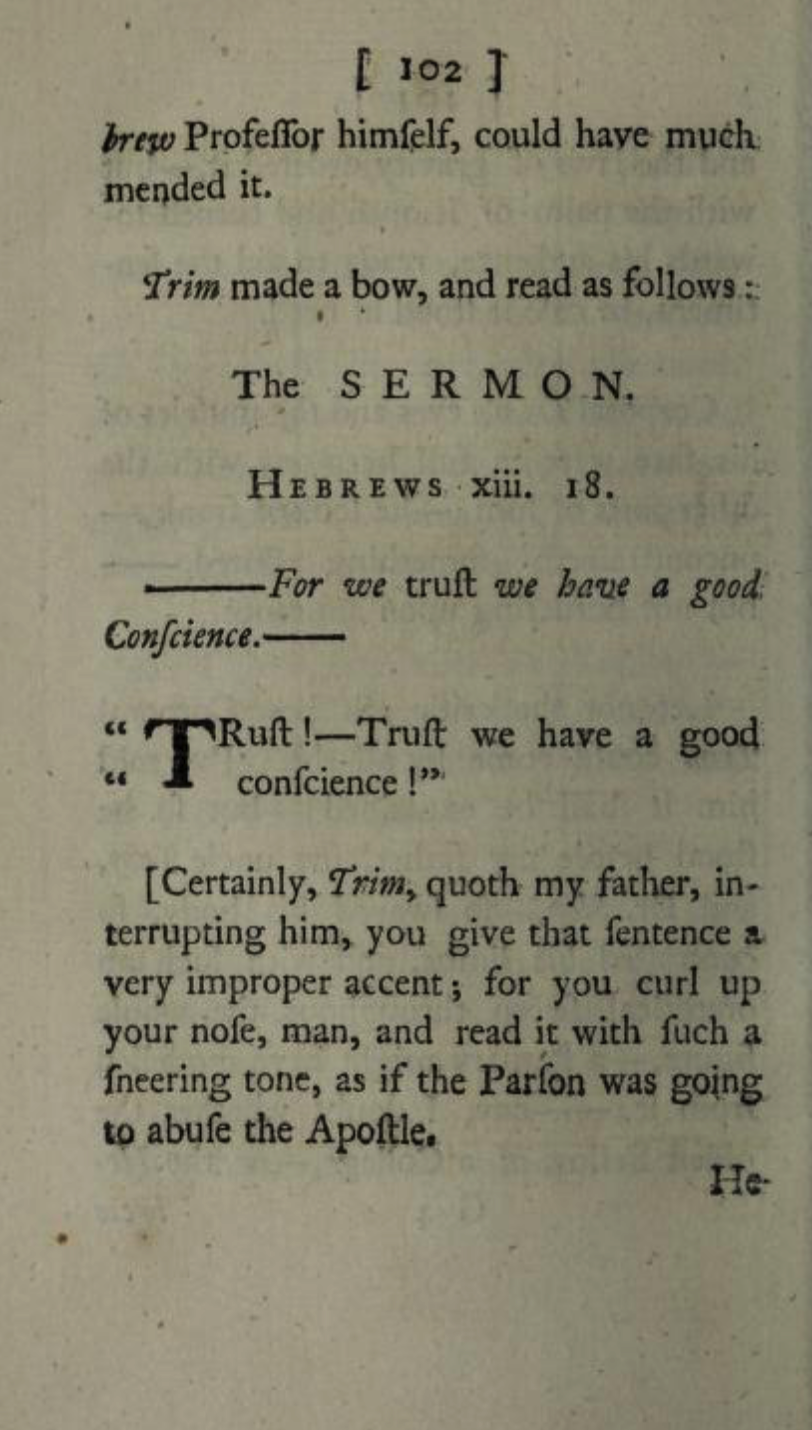
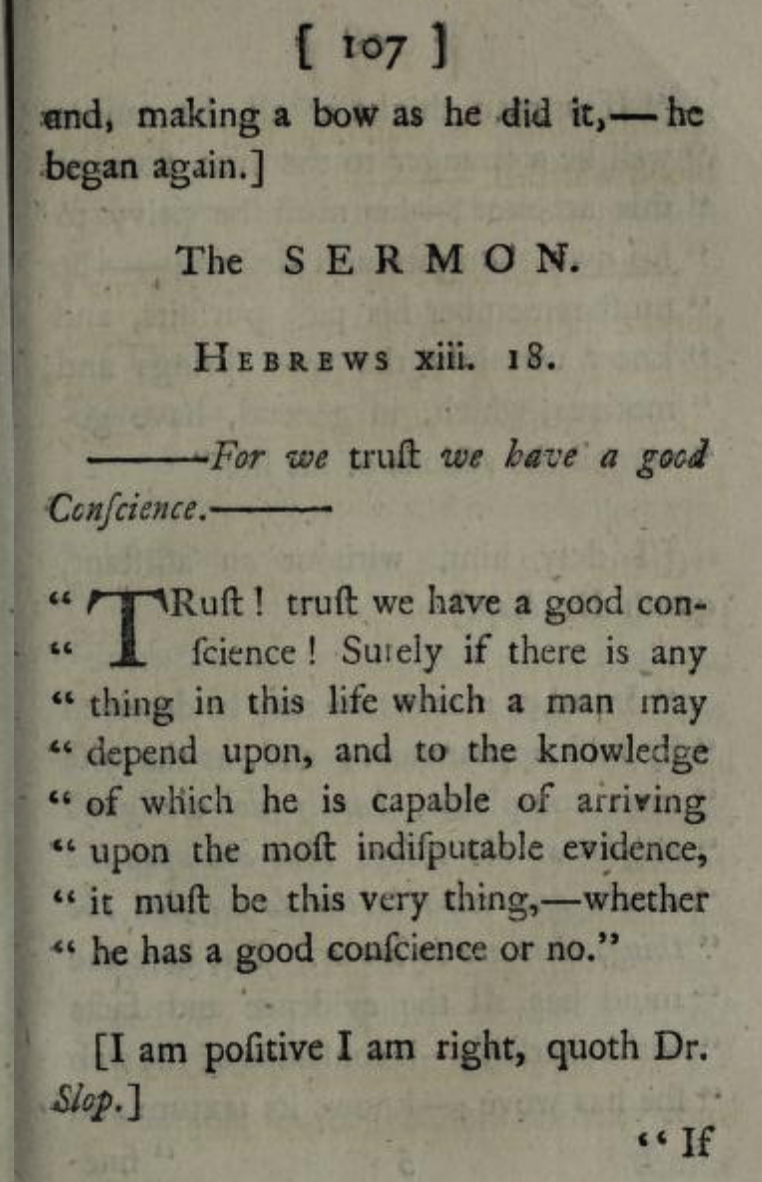
Sermons of Laurence Sterne (wiki) The early editions of The Sermons of Mr. Yorick (1760, 66) and Sermons by the Late Rev. Mr. Sterne (1769) available as digital books
Sermon 18 on "The Abuses of Conscience"
Tristram Shandy Vol 2, 102; 107
FYI, There is a very good discussion of the look of "Laurence Sterne's comic novel Tristram Shandy" in the April 24, 2014 episode of BBC In Our Time at Timestamp 26:35
"Lillibulero" for 2 flutes and piano
March 27: SECOND PAPER DUE March 27 by 11:59 p.m.
March 29
Tristram starts "a chapter in volume 3 by going ‘back to the ******----- in the last chapter’ (TS, 3. 14. 217). "
– No doubt, Sir – there is a whole chapter wanting here – and a chasm of ten pages made in the book by it’ (TS, 4. 25. 372).
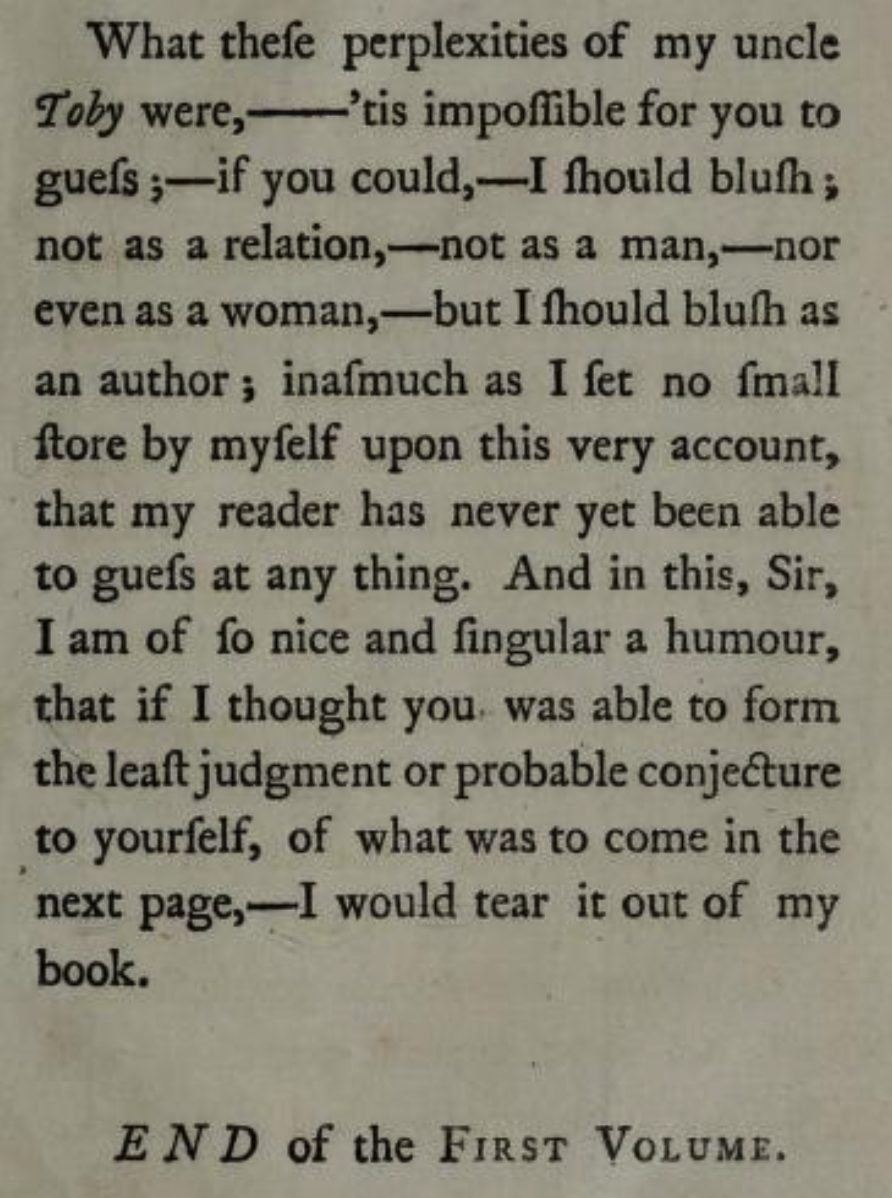
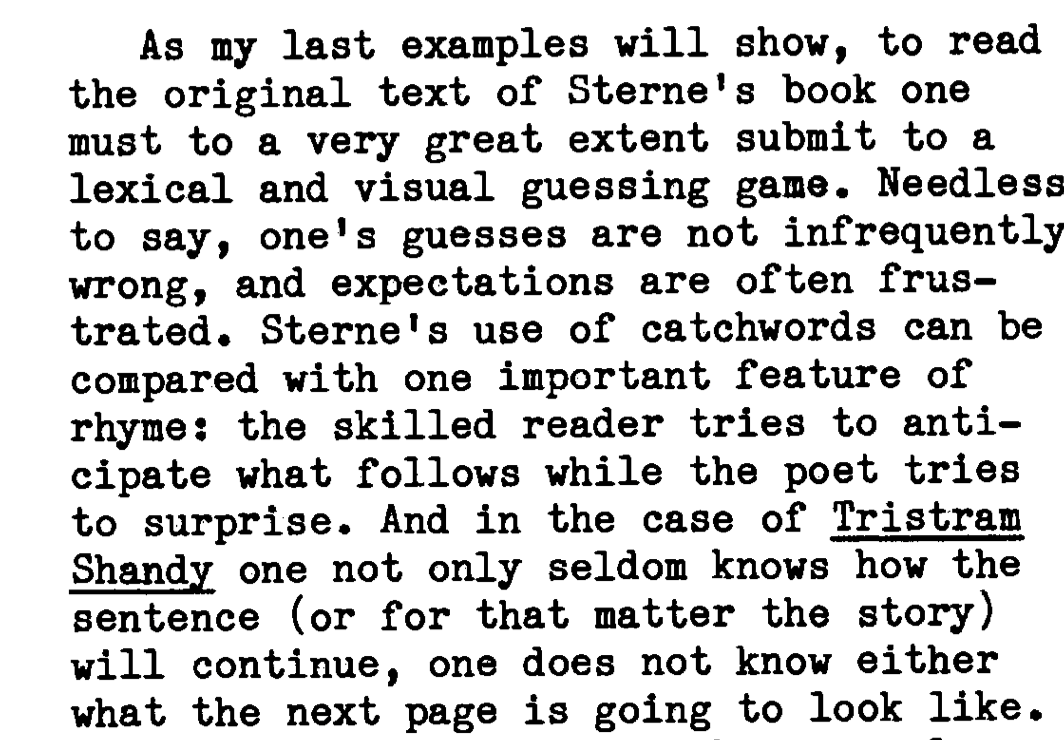
Two Required Readings (write one DQ on each reading):
1. Tristram Shandy: Vol 3, XIV ("go back to the last chapter"); Vol 4, Chapter X (the chapter on chapters); Vol 4, XXV (on the omitted chapter); Vol 9, The Blank Chapters (XVIII and XIX) and the Printed Chapters XXV and XXVI; and Vol 9, Letter XXI (lots of asterisks as the Widow Wadman asks Sir Toby where he was wounded--where on his body or where on the map of the siege of Namur) [Vauban Fortresses]

(FYI, you may wish consult this Diplomatic Transcription, volume by volume and chapter by chapter, of Laurence Sterne, The Life and Opinions of Tristram Shandy, Gentleman. Or you may not.)
2. Nicholas Nace, "Unprinted Matter," Shandean (Note: In addition to Sterne, Nace discusses some contemporary conceptual writers, some of whose works I have linked below, fyi.)
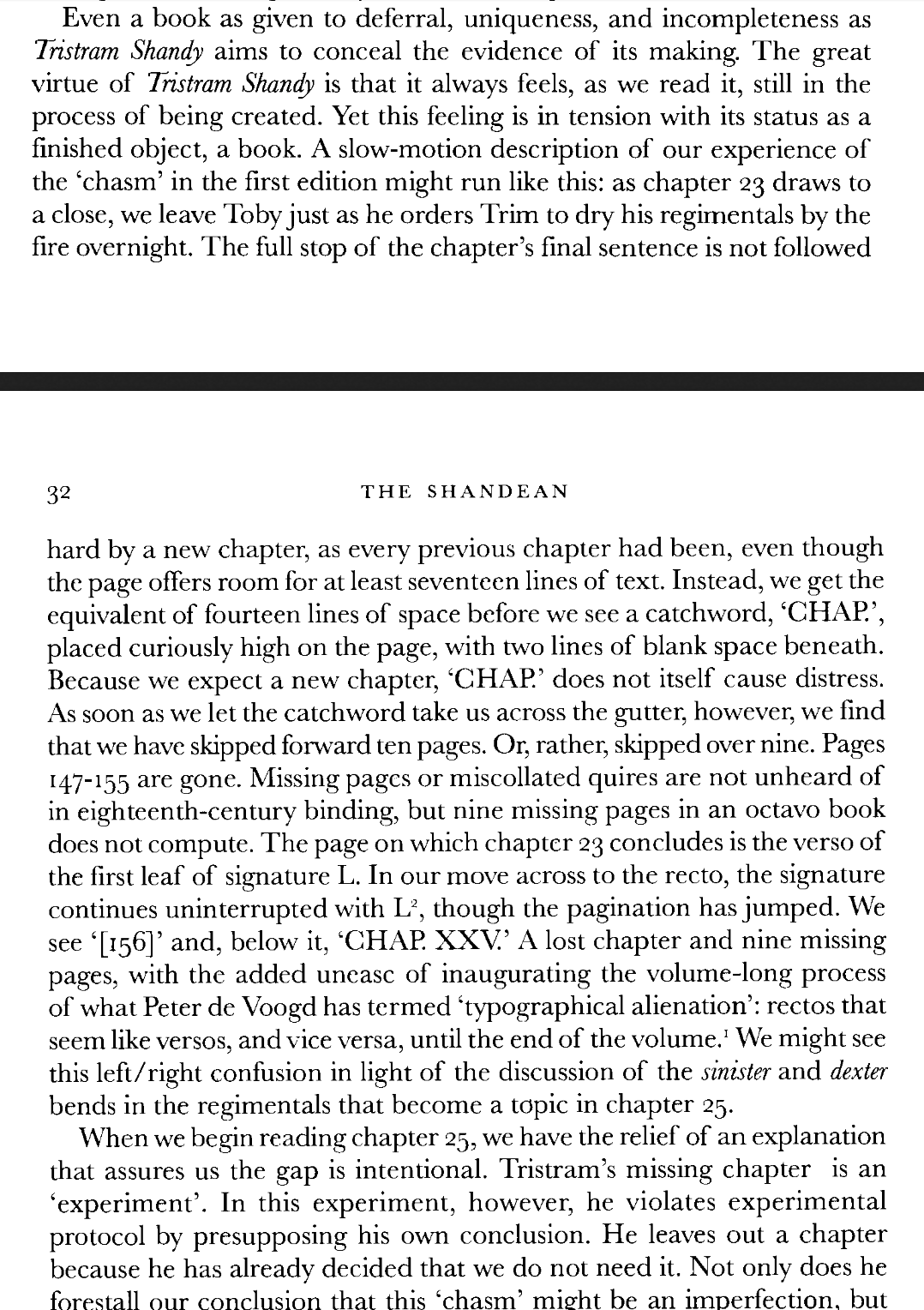
See Also / Further Reading:
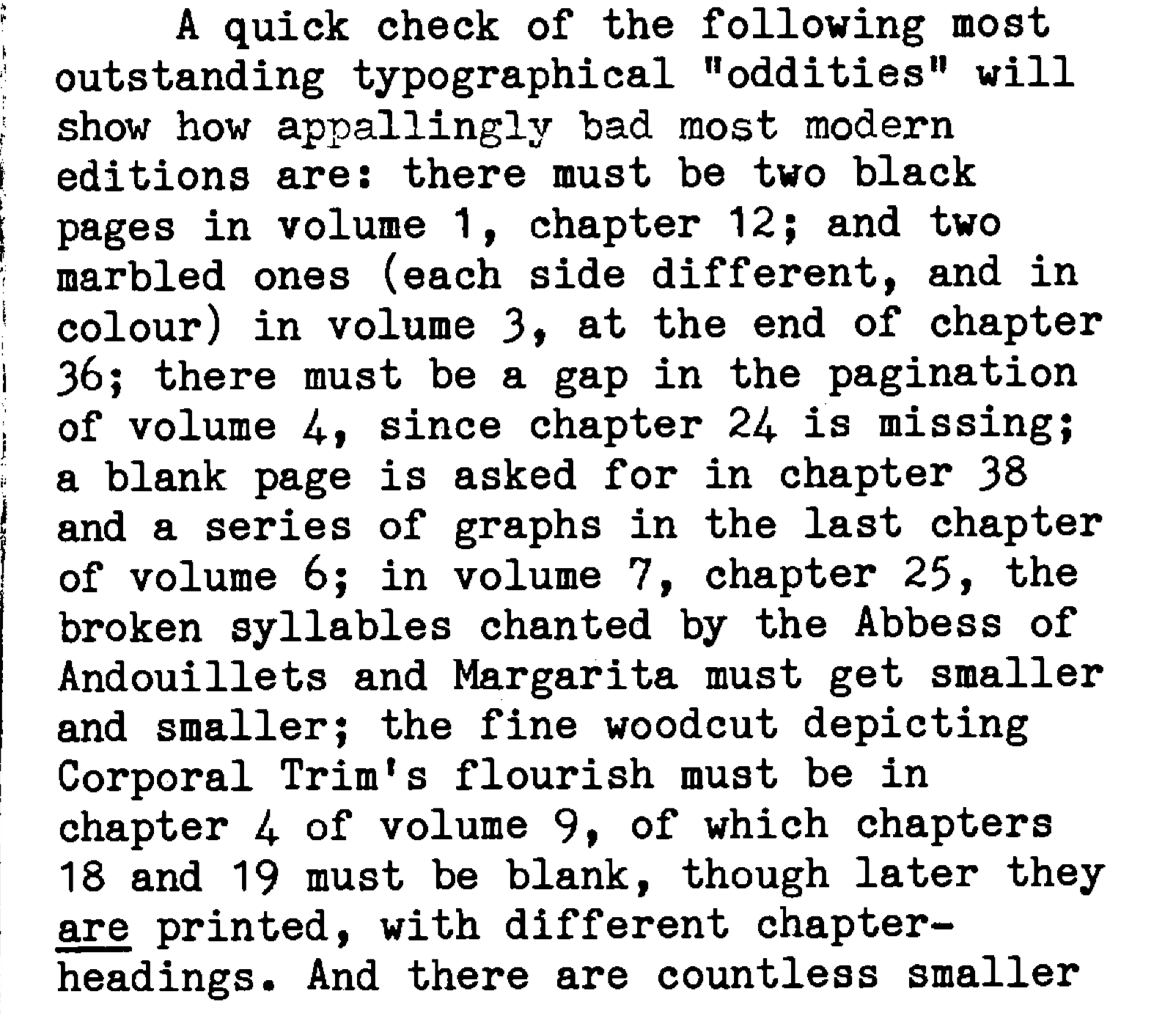
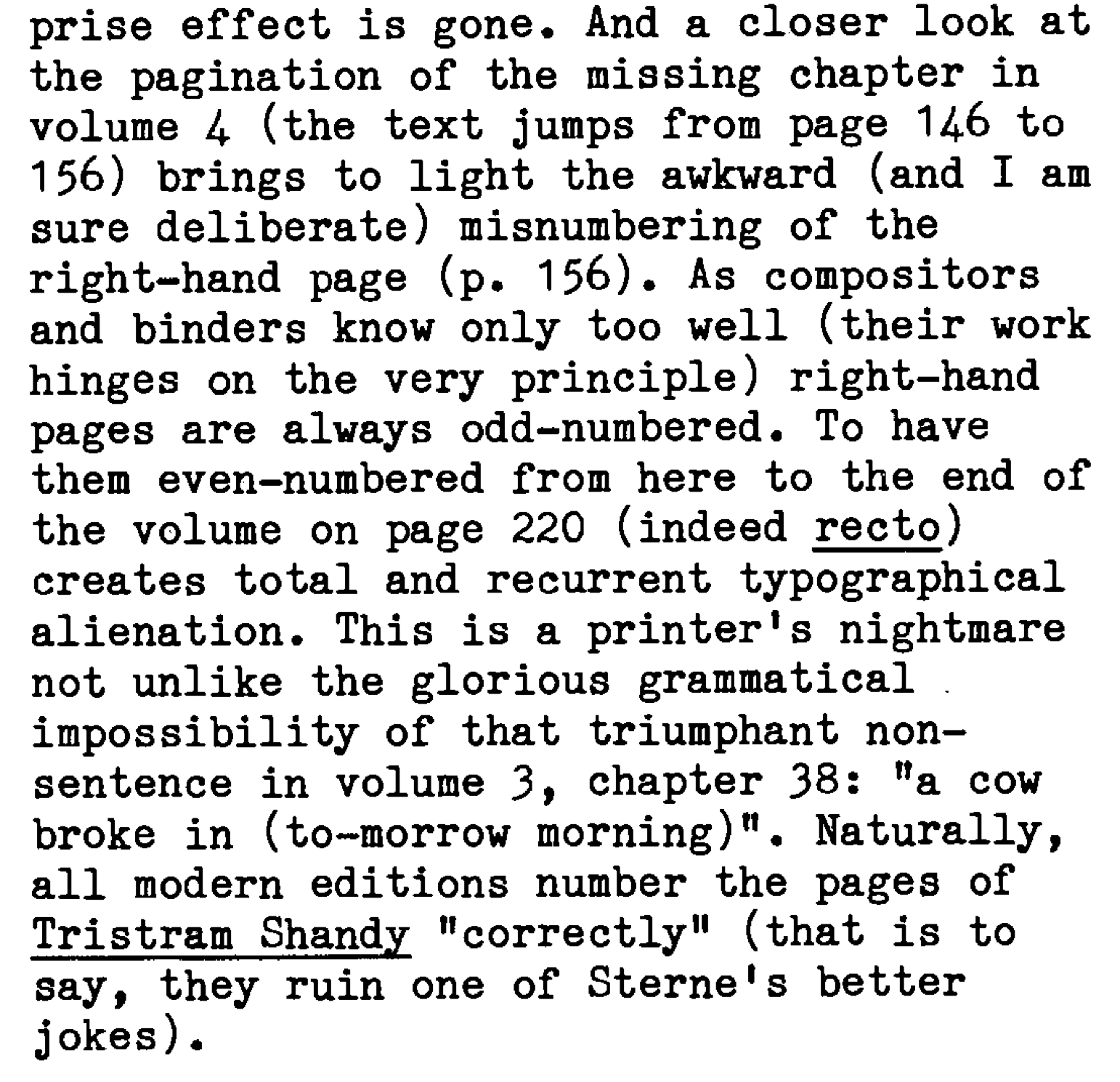
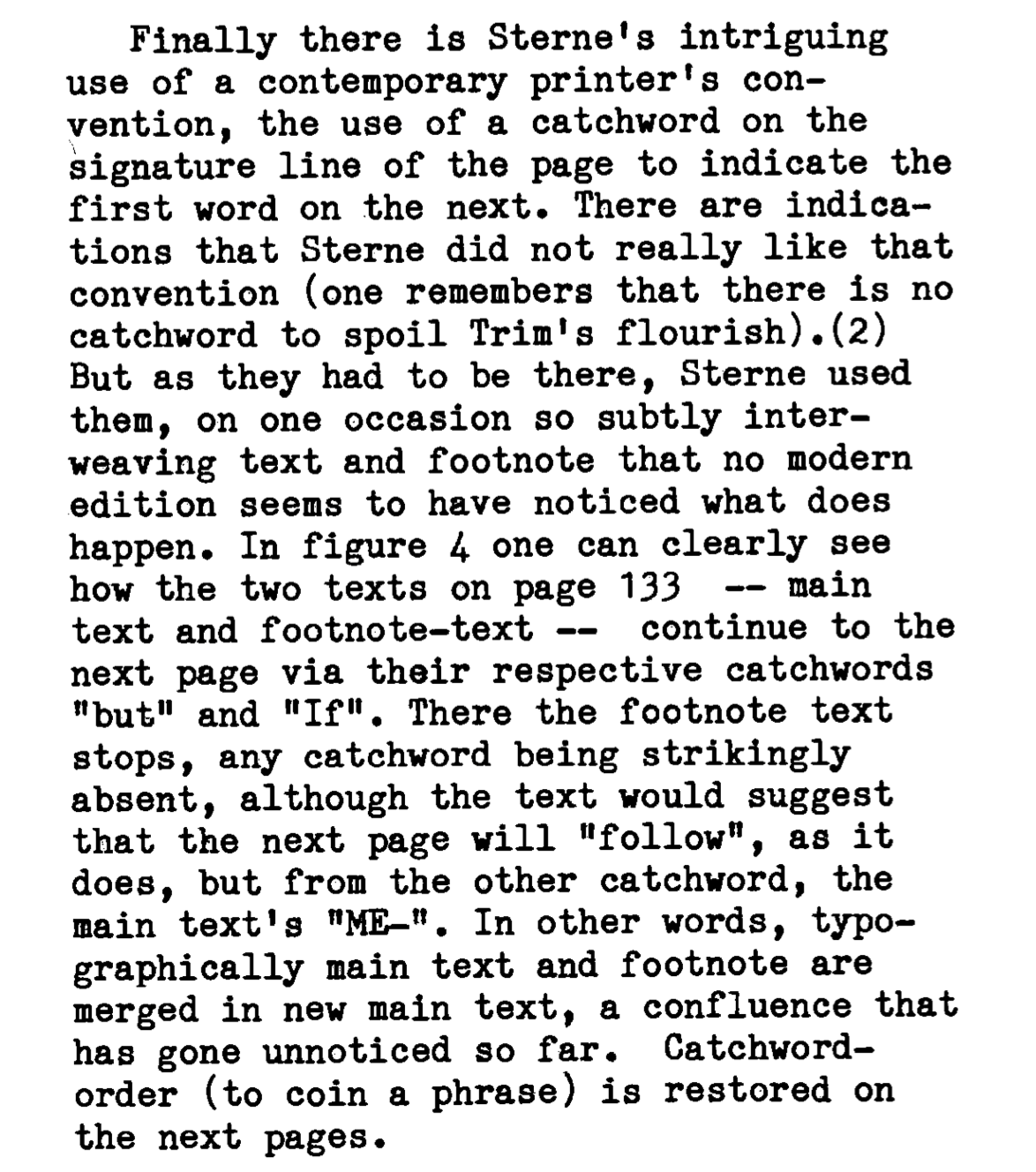
Sign Up to report April 2 in class on a volume ofTristram Shandy
March 31 Tristram Shandy Re-edited as a Contemporary Art Book
Two Required Readings (write one DQ on each reading)
1.Visual Editions Tristram Shandy as Art Book (So that you may better understand this re-edition of Sterne's novel, I have scanned pages from the Visual edition and the corresponding pages in the novel or cut and pasted them from this Diplomatic Transcription, volume by volume and chapter by chapter, of Laurence Sterne, The Life and Opinions of Tristram Shandy, Gentleman.)
2. Do or DIY / Craig Dworkin, Simon Morris, and Nick Thurston, Do or DIY


See Also / Further Reading:
--PETER DE VOOGD, "Tristram Shandy as Aesthetic Object"
More resources related to Tristram Shandy
(Images from the Visual Editions website) Introduction by Will Self / Tristram Shandy, Visual Editions
"Jonathan Swift, A Tale of a Tub, and the Mock Book"
"Jonathan Swift and the Idea of the Book"
Typographical Travels Through Tristram Shandy"
Peter Szendy on Tristram Shandy, in Stigmatology

April 2
Sign Up to report April 2 in class on a volume of Tristram Shandy
DIfFERnENt ASSIGNMENT
Reqired Readings:
1. I will assign one of the remaining seven volumes of Tristram Shandy to small groups of you. Your group can report on the volume you read in class. (The seventh volume, often regarded as the weakest of the novel, is about disease and Death. It resonates with Defoe's Journal.)
2. Non-read the rest of the novel by reading the table of contents to all nine volumes here:
Pick three chapters in three different volumes you'd like the presenters to cover and briefly explain why you chose each of those three chapter.

See Also / Further Readings:

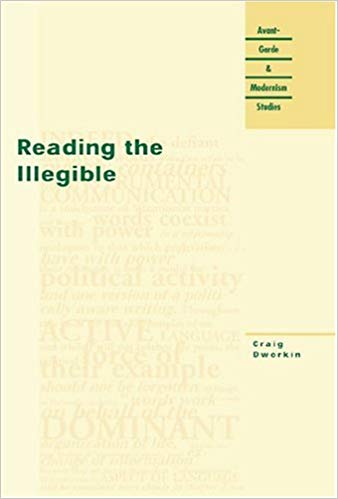
Craig Dworkin, "Introduction" and "Chapter 4 The Inhumaness of Language,' in Reading the Illegible (Avant-Garde & Modernism Studies) 2003, pp. xiii-xxiv and 72-8.
Craig Dworkin, "The Aesthetics of Censorship," in Reading the Illegible
Craig Dworkin, "Introduction," in Reading the Illegible
Craig Dworkin, "Chapter Three: Textual Prostheses," in No Medium
Craig Dworkin, The Perverse Library
April 5
Required Reading: Comparative (non)Reading (You may of course ignore the French original and read the English translation.)
Stéphane Mallarmé, "Un Coup de Des n'abolira le hasard" / "A Throw of the Dice Will Never Abolish Chance" (in French and English) A. M. Blackmore , Elizabeth McCombie
See Also / Further Reading
The Manuscript of Mallarmé's poem.
Caroline Bergvall & Nick Thurston, The Die Is Cast (2009). Only the last word of the title appears on the front cover, and the book is bound with one staple, just to the left of "CAST." You can't see it in the digitzed image below.
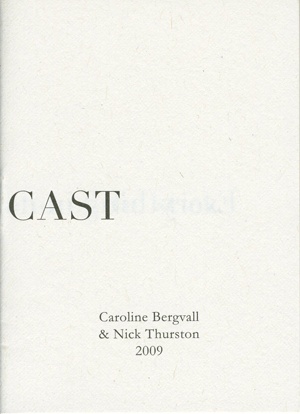
Robert Walser, Microscripts
REQ - - - -#$%@@@ IRED RE . . . DING---------------
World-Reknowned Pnildopher and Literary Theorist Professor Avital Ronell will be joining us for class on Zoom to discuss the User's Manual, the extrordinary, singular graphic design of the book, and the index as classifieds, to her landmark book, The Telephone Book (1989).
Dailing up The Telephone Book (1989) through the classifieds (yellow pages)
Avital Ronell, The Telephone Book: Technology, Schizophrenia, Electric Speech
See Also / Further Reading:
Georges Perec, Life: A User's Manual
Dworkin Craig, Nothing: A User's Manual (2015)
Found in Translations and Book History
See Also Avital Ronell's hilarious last endnote to her first translation of Jacques Derrida's first version of"Devant la loi" (Before the Law ) in Kafka and the Contemporary Critical Performance: Centenary Readings, ed. Alan Udoff (Bloomington: Indiana University Press, 1987
The first version, complete version of Derrida's "Devant la loi" (note the unexplained ellipses)
Ronell's second translation of the then complete version of Derrida's essay.
Note by the editors of JACQUES DERRIDA, Before the Law The Complete Text of ‘Pr´ejug´es’.
"Before the Law" was first given as a lecture to the Royal Philosoph-ical Society in London in 1982. Part of the French text was publishedas "Devant la loi" in Philosophy and Literature, ed. Phillips Griffiths (Cambridge: Cambridge University Press, 1984). This lecture was then combined with additional material on the work of J.-F Lyotard and presented at the 1981 Colloque de Cerisy on lyotard; the extended text was published as "Prejuges: Devant la loi" in the conference volume (Derrida et al., La faculte de juger [Paris: Minuit, 1985], 87-139). An English translation by Avital Ronell of most of the original version was published as "Devant la loi" in Kafka and the Contemporary Critical Performance: Centenary Readings, ed. Alan Udoff (Bloomington: Indiana University Press, 1987). The following text, based on Ronell's translation, is that of the complete original version, which has not hitherto been published in French or in English. Additional material has been translated by Christine Roulston, who also assisted in the editing of the entire piece and provided the translator's footnotes."
Jacques Derrida, Glas, English translation by John P. Leavey
Jacques Derrida, Glas, trans John P. Leavey (online)
John P. Leavey Jr., Glassary, Gregory L. Ulmer, Jacques Derrida

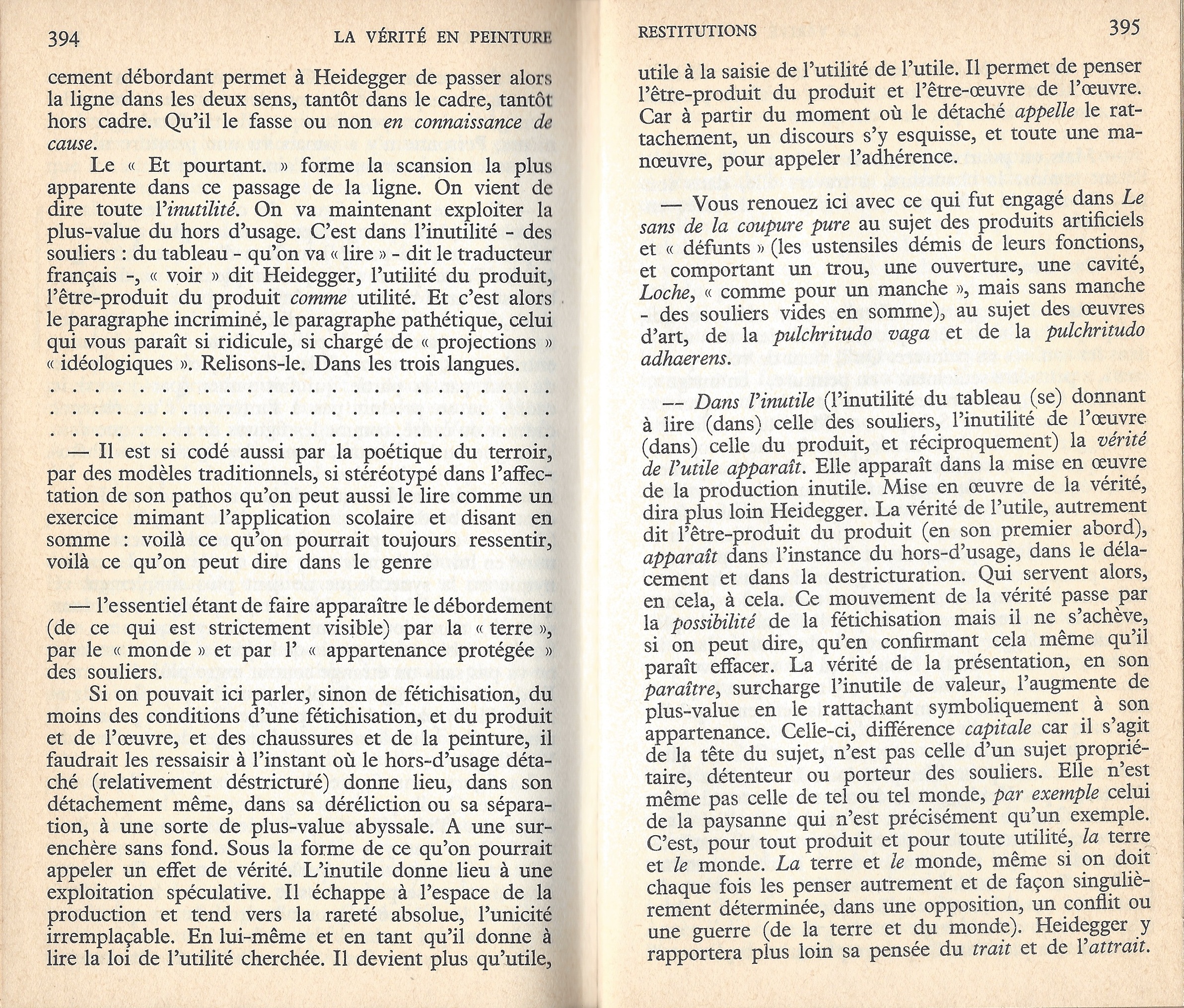
See Also / Further Reading:
William Blake, The Marriage of Heaven and Hell (dimensions of the original printed edition [with engravings] that has been digitized here.)
William Blake, Songs of Innocence and Experience

Will Hogan, Ed. The Book The Thing / Index
Garett Stewart, "Anarchives," in Bookwork: Medium to Object to Concept to Art (2011)
Resources on Conceptual Art / the Art Book
Lucy Lippard, Six Years- The Dematerialization of the Art Object
"Reading as Art," Curated Exhibition 2016
"Miss Read" KW Institute for Contemporary Art
"Transforming Artist Books" Tate Museum
Craig Dworkin and Kenneth Goldsmith, Against Expression- An Anthology of Conceptual Writing

Maurice Blanchot and Ann Smock, "Reading," in The Space of Literature: A Translation of "L'Espace littéraire" (1989)
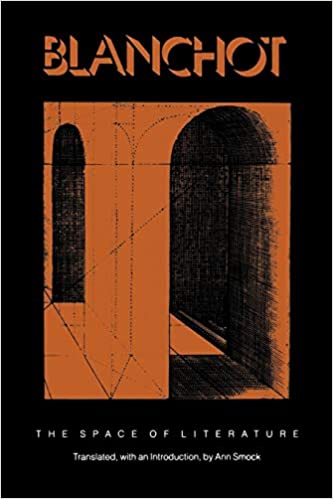
See Also / Further Reading:
Maurice Blanchot "The Book to Come" in The Book to Come, pp. 224-43
Blanchot, "Noli me legere," Vicious Circles
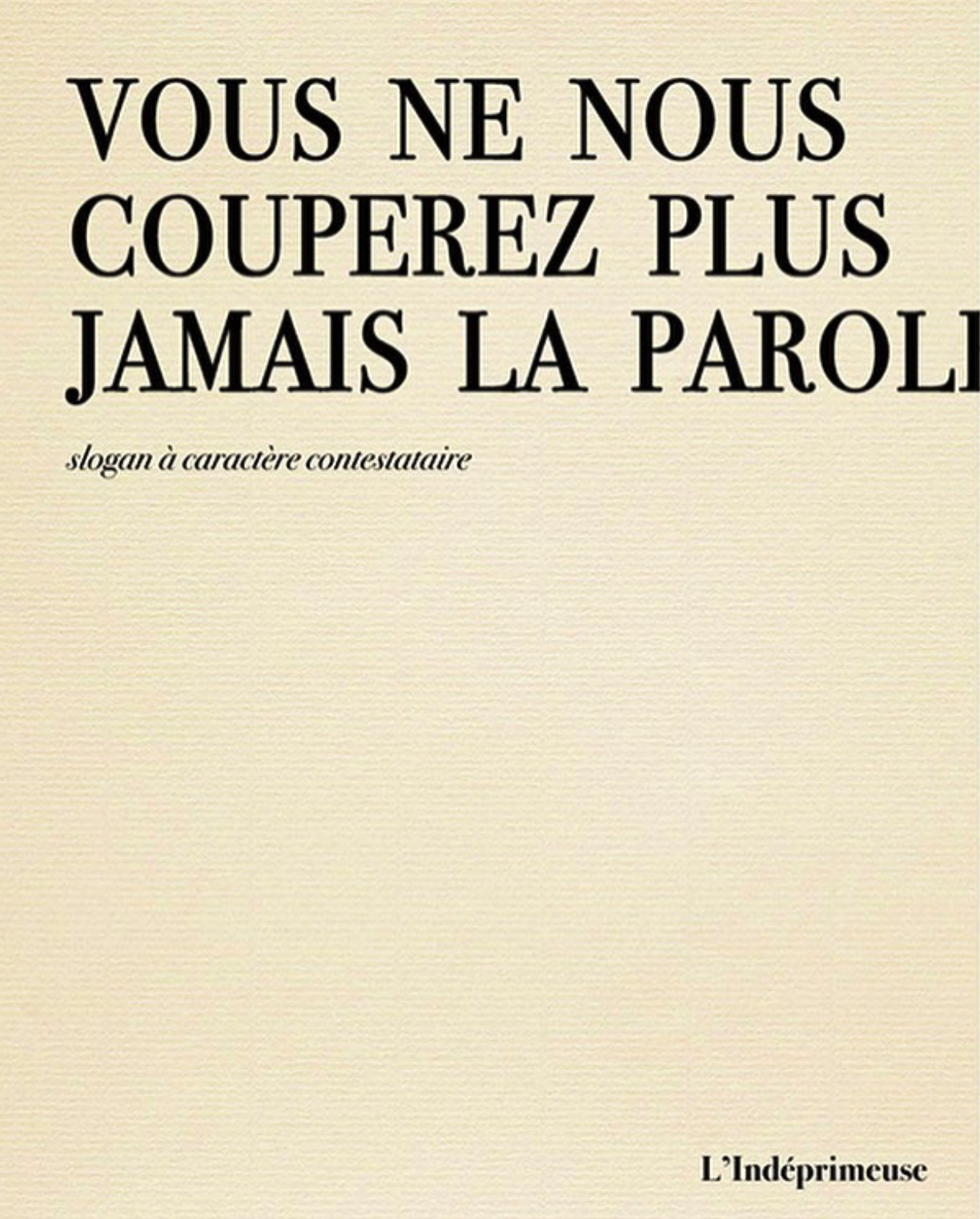
Required Reading:
Nick Thurston,"Mallarmé's Experience," 38-44 and "Reading" pp. 191-98, in READING THE REMOVE OF LITERATURE
APRIL 16
APRIL 16 “I never heard so musical a discord, such sweet thunder.”
Required Listening and Reading. But No DQs are due: Think about the questions I have raised below as you think of your own. I am assuming your are coming to Howe's poetry cold.
1. Concordance: An Evening with Susan Howe 39 minutes. (She is reading from "Since.")
2. Susan Howe, Concordance (pdf)
Notice that Howe's book has three poems but notes only for two of them on page 105. The title of the poem that is also the title of the book, namely, Concordance, does not have a note. The anonymous copy on the back cover does, however, supply some information about "Concordance" and gives its publication history as a stand-alone book.
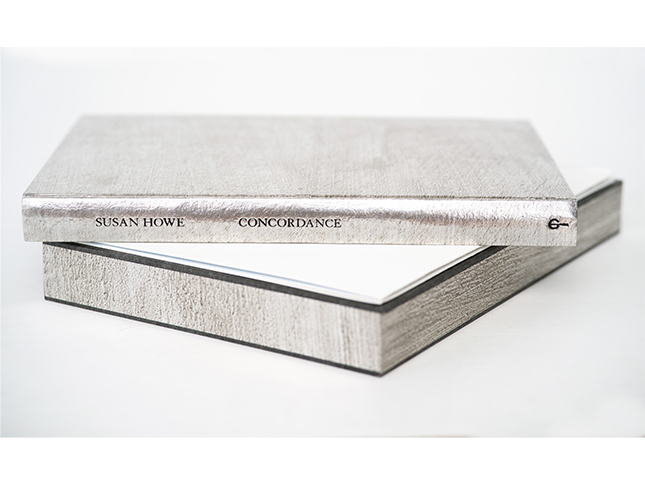
If you google "Concordance" with "Grenfel Press," you will find more information about it at the webpage devoted to Howe's book. In April 2021, it sells for $950.
Shards of the word "concordance" also appear in the poem. Is the a discord between the title of the poem and the idiosyncratic author's note? Are we connect the reference to the words "an envious sliver broke" in Gertrude's famous description of Ophelia's drowning in Hamlet in the epigraph meant to be echoed in the bits of A Midsummer's Night Dream in "Concordance?" Are we to connect Ophelia's drowning to Margaret Fuller's? Are we just supposed to know that the "undiscovered country" is taken from Hamlet's "To be or not to be" soliloquy?
What is a concordance? Howe gives some "Concordance can also mean a state of harmony between persons.
Or a musical chord with satisfying musical effect."
--Susan Howe, "Since" in Concordance. The title, "Since," is recalled in the poem in a comment on the word "since" in Anthony's line "Since Cleopatra died."
How much help does Howe give the reader of "Space Permitting?" How should we read that title? Is it ironic? In "Since," the narrator says there are two narratives, one linear, and the other cut up. Is there a narrative in her collage of drafts and notes by Thoreau? Notice in her scholarly "Author's note."
Observe how she advises her reader, in her last sentence, enclosed in parentheses, to read her source text, "Thoreau's Account of the Wreck of the Elizabeth and the Aftermath" at http://thoreau.library.ucsb.edu/resources_essays.html "Including Steve Grice, "A New Leaf fom Thoreau's Fire Island Manuscript," Thoreau Society Bulletin 258 (s[sic]pring 2007):1-4. I have retrieved both of them, though now reading the Thoreau webpage I see that Grice's essay is linked. Will reading them help us understand Howe's poem? Is the necessity of retrieving the texts she advises us (or tells us?) to read part of the poem? Does she mean to lose us? Make us feel lost? Is her note a kind of lifesaver for readers drowning in her poem? Is she lost? Do we need to read Howe's source text as a prequisite to understanding her poem? Is the intertextual reference part of the poem, not a text but an intertext? Her author's note is placed on the inside leaf of the back cover, unconnected to her poem by a footnote or some other typographical means of indicating to the reader of the poem that there is a note to be found somewhere about the poem written by Howe. Does it help to read the NY Times review Concordance?
The backcover is not available on the publisher's website for Concordance. Should we read the paratexts, even the copyright, as part of the text, variations of fragmentation and dispersion?
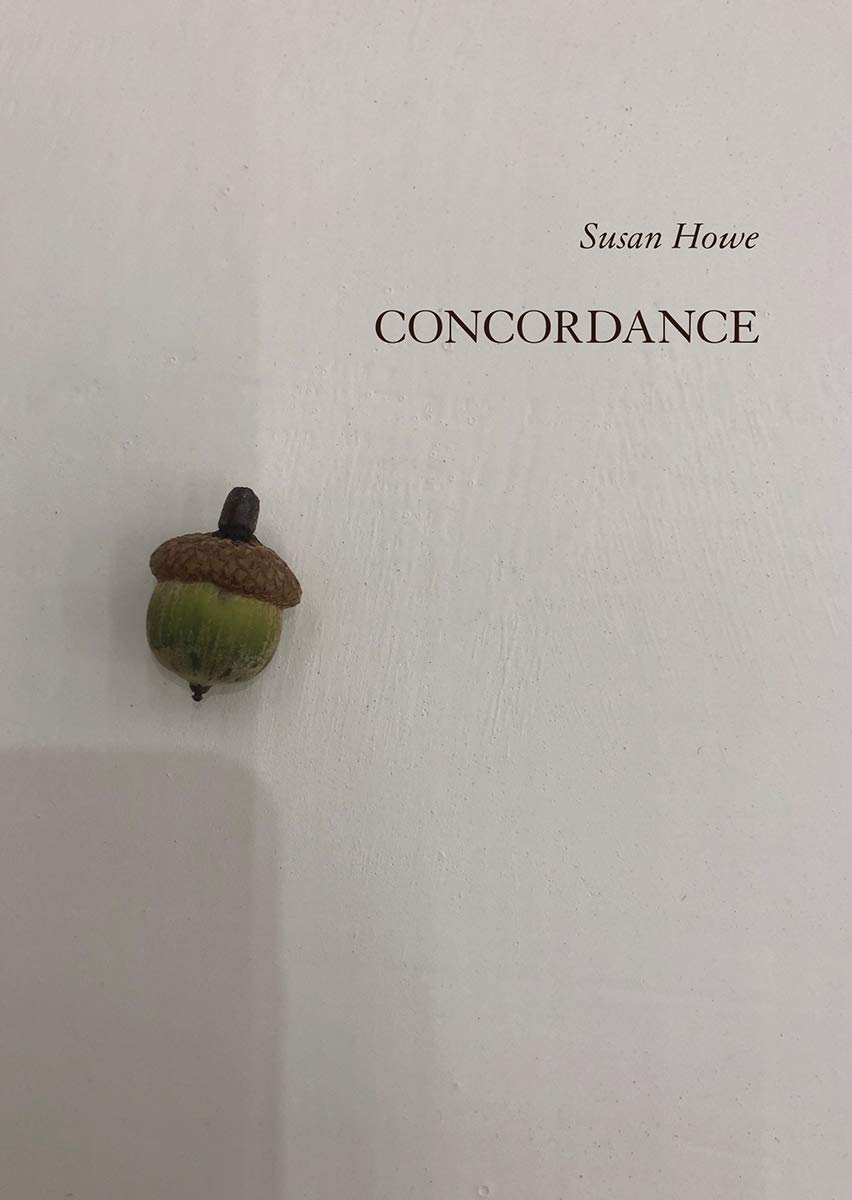
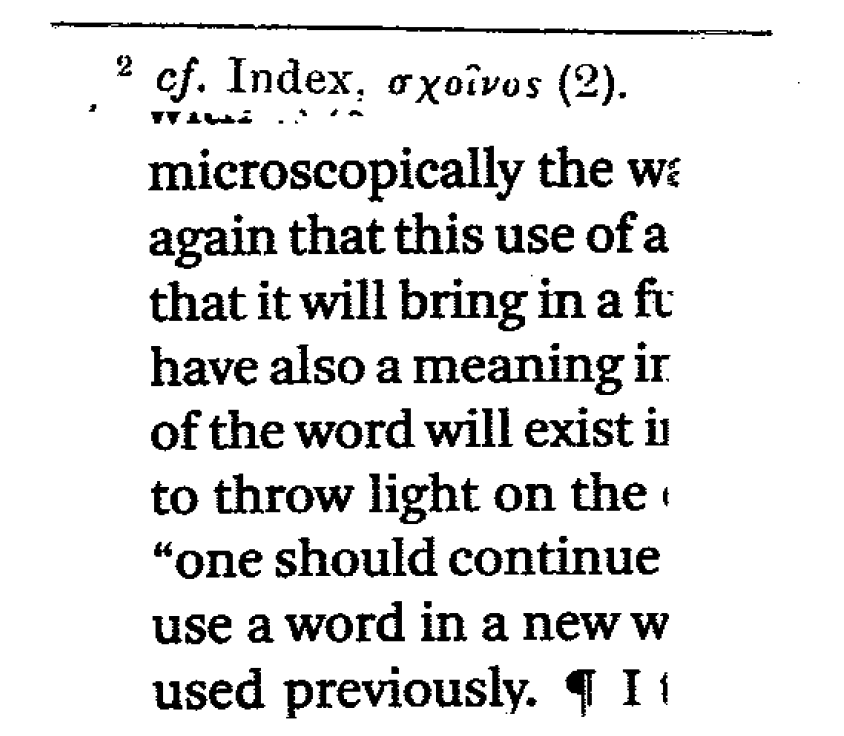
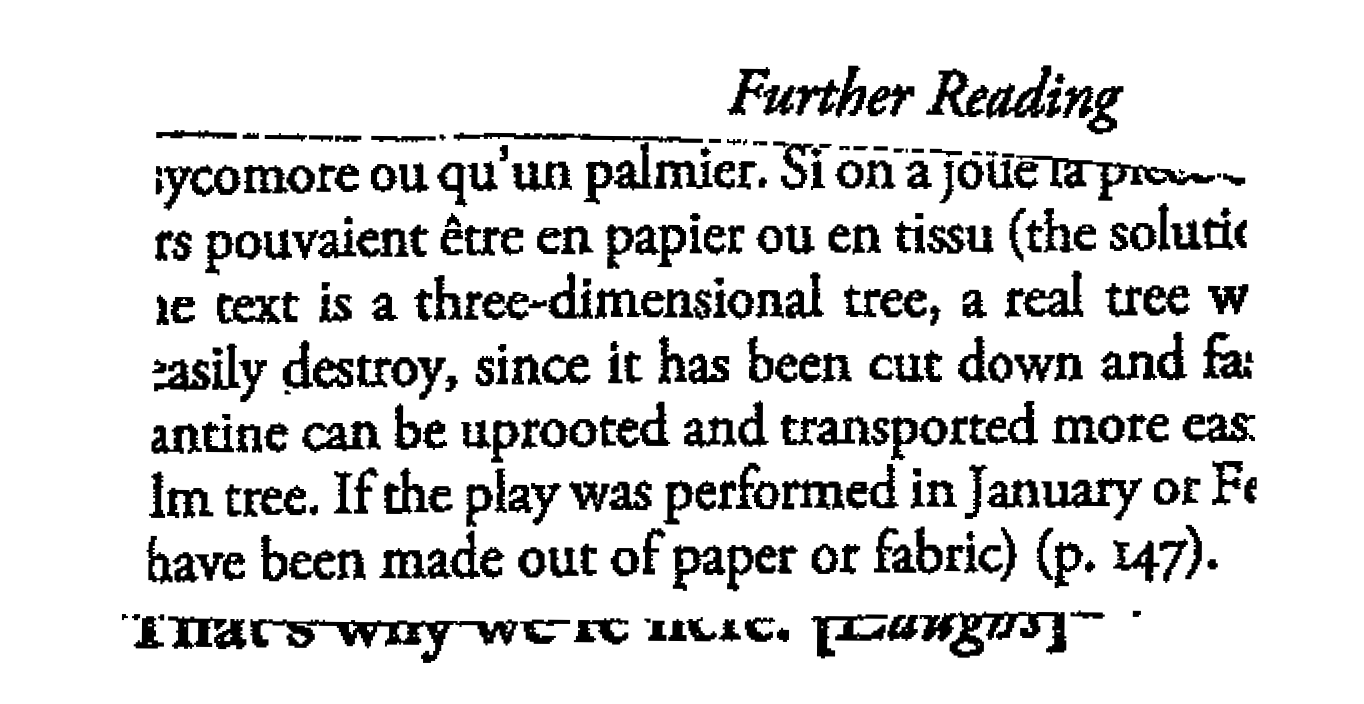
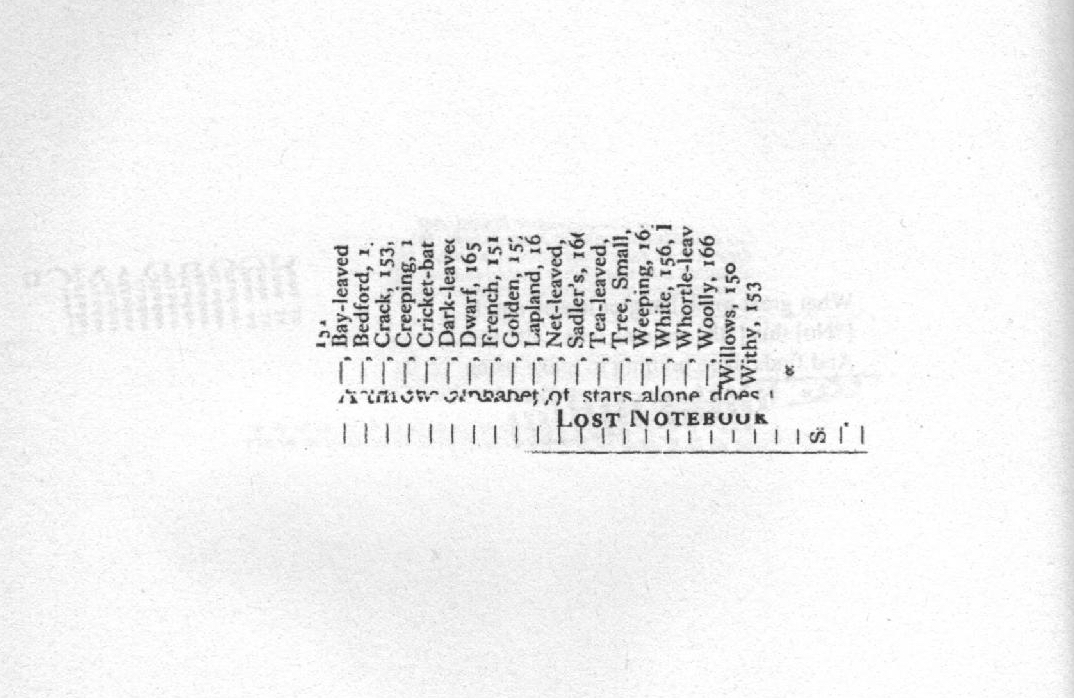
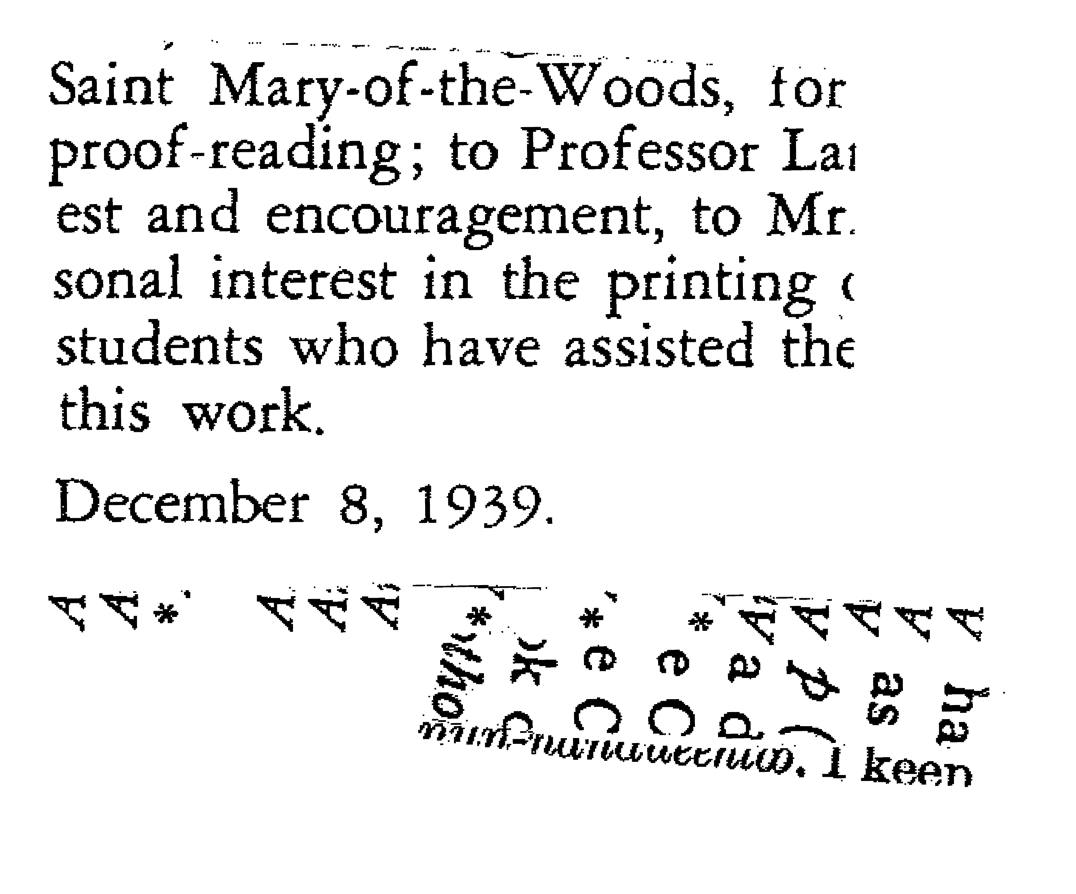
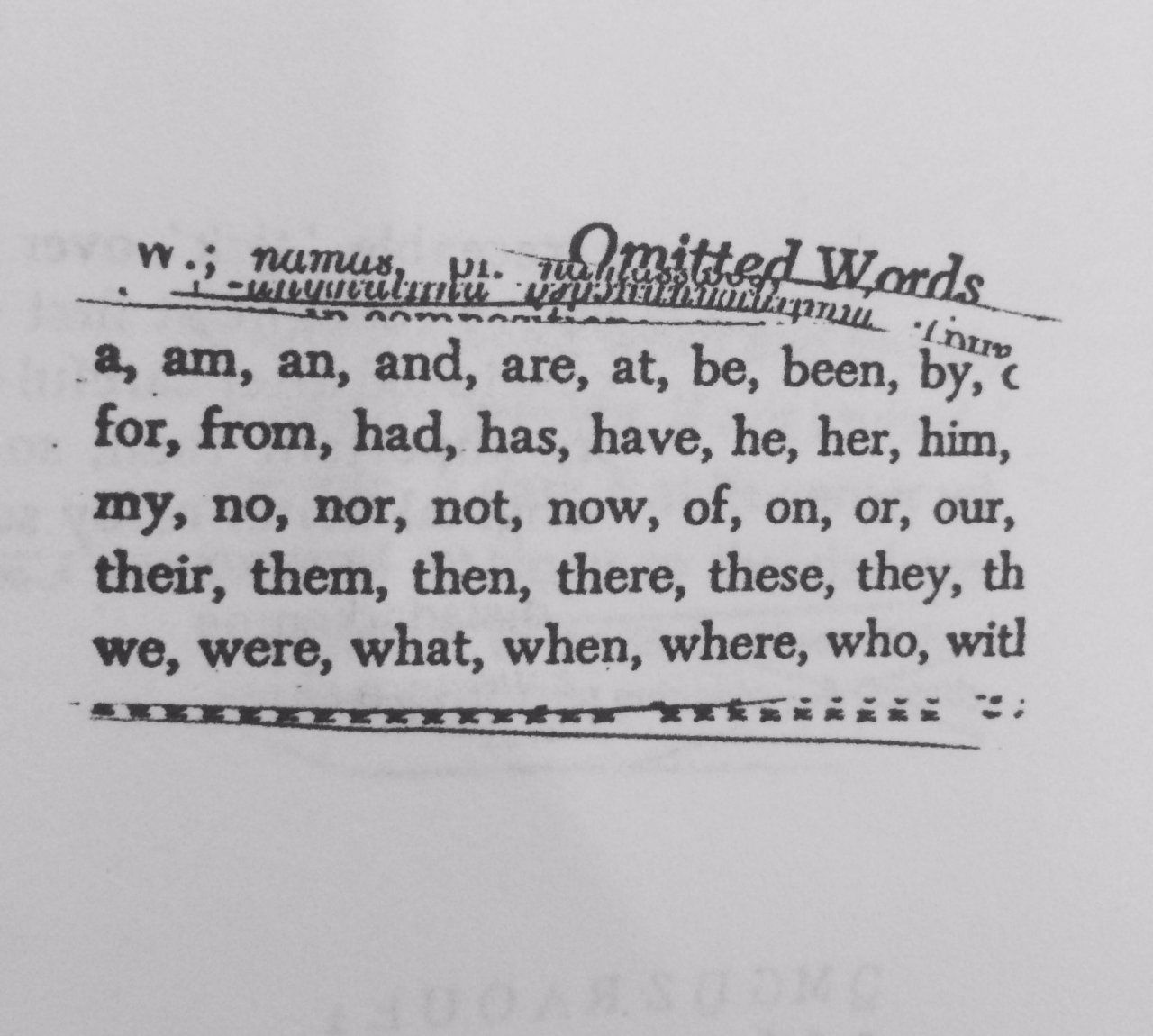
See Also / Further Reading:
Langdon Hammer, "Inside & Underneath Words," September 28, 2017 NYRB
"Susan Howe’s Feminist Poetics"
CANCELLING CONCEPTUAL WRITING:
Alec Wilkinson, "Something Borrowed: Kenneth Goldsmith’s poetry
elevates copying to an art, but did he go too far?" The New Yorker,
September 28, 2015
https://www.newyorker.com/magazine/2015/10/05/something-borrowed-wilkinson
https://www.dazeddigital.com/artsandculture/article/24127/1/kenneth-goldsmith-talks-about-reading-mike-browns-autopsy
The Denunciation of Vanessa Place June 14, 2015 • By Kim Calder
Vanessa Place and Robert Fitterman, Notes on Conceptualisms [2009]
Vanessa Place, “Notes on Conceptualism”
REQUIRED READING
COMPARE these dramatic readings of poems by trained actors; poems selected by writers):
The Power of Poetry, with Helena Bonham Carter and Jason Isaacs with this dramatic reading of a poem by its author and a Danish translator:
Anne Carson: Reading from Nox What do you need to research (learn) in order to understand Carson's poem?
Ben Ratliff, Lamentation NY Times June 11, 2010
FINAL ART ESSAY / CRITICAL ESSAY ASSIGNMENT Due April 23 by 11:59 p.m.
HOW TO TALK ABOUT COURSES YOU DIDN'T TAKE:
Reimagine at least six weeks of the course schedule as the table of contents of a book entitled See Also. Create a word document and save it after you put your last name in title followed by "See Also Table of Contents." The content of your document is a table of contents. You may design your table of contents (toc) by using as your template the standard, uniform looking format for tables of contents using modern punctuation, putting the chapter titles flush to the left and the (imaginary) page numbers on the right (See the example entitled "Contents" below). Or you may create your own more literary format, punctuation, and analogy (like "Directory Assistance" for Ronell's The Telephone Book). Remember that the table of contents is designed to help a reader. It has a pragmatic function, unlike the copyright page, the page readers almost always skip. So, be sure that your reader can follow your document easily. Recall the chapter on Robert Musil's fictional librarian in the first chapter of Pierre Bayard's How to Talk About Books You Haven't Read. Reading the table of contents is one productive way of non-reading a book. (You might want to take this opportunity to select assigned readings you didn't read.)
Within these limits, however, you may still find ways to be very creative, if you wish. Here is a truly brilliant and exceptionally imaginative example: this book of philosophy, Counterpath, has two tables of contents, one near the beginning, as one would expect, and the other near the end of the book (Surprise!). Each table of contents has a different order. The first one is in "(random order)", but the chapter numbers and page numbers are in the customary linear sequence. The second one is in "(logical order)", but the chapter numbers and page numbers are not in sequence. The title of the book, Counterpath, we are left to understand, is conceptualized in the tables of contents themselves. Both the logical and the random contents are in conflict with each other and with themselves (they are each in order and out of order). In a sense, the two, spaced out remotely connected tables of contents in Counterpath are a work of conceptual poetry. The same might be said of the table of contents of Ronell's The Telephone Book. The more literary the table of contents, the more philosophical and psychoanalytical it becomes. (There is a lot of philosophizing in Tristram Shandy.) In any case, your own table of contents need only be pragmatic, such as the example "Contents" below. No pressure!
You may select your contents from any six weeks of the semester, limited to Mondays and Wednesdays, but those weeks have to be at lest three weeks apart. That means you will have twelve chapters. Create chapter titles of your own based on the assigned readings (M's and W's). You may order or reorder the sequence of readings into the sequence of your chapter titles as you wish. You may add descriptive subtitles under the headings of each chapter. They may look kind of like entries found in the index at the end of a book. The chapter titles should be in bold. The subtitles should be in a smaller font than the font used for chapter titles (See the cascading, waterfall effect in the example below the word count). You may, you but need not include recommended readings (found under "See Also / Further Reading" on M's, W's, and F's) in your descriptive subtitles. You may, but you need not include (imaginary) page numbers. Publishers generally require authors to make chapters of their books about the same number of pages.
Word Count: 150 minimum to 1k maximum.
Email your word doxc to me at [email protected] by 11:59 p.m. April 23, 2021.
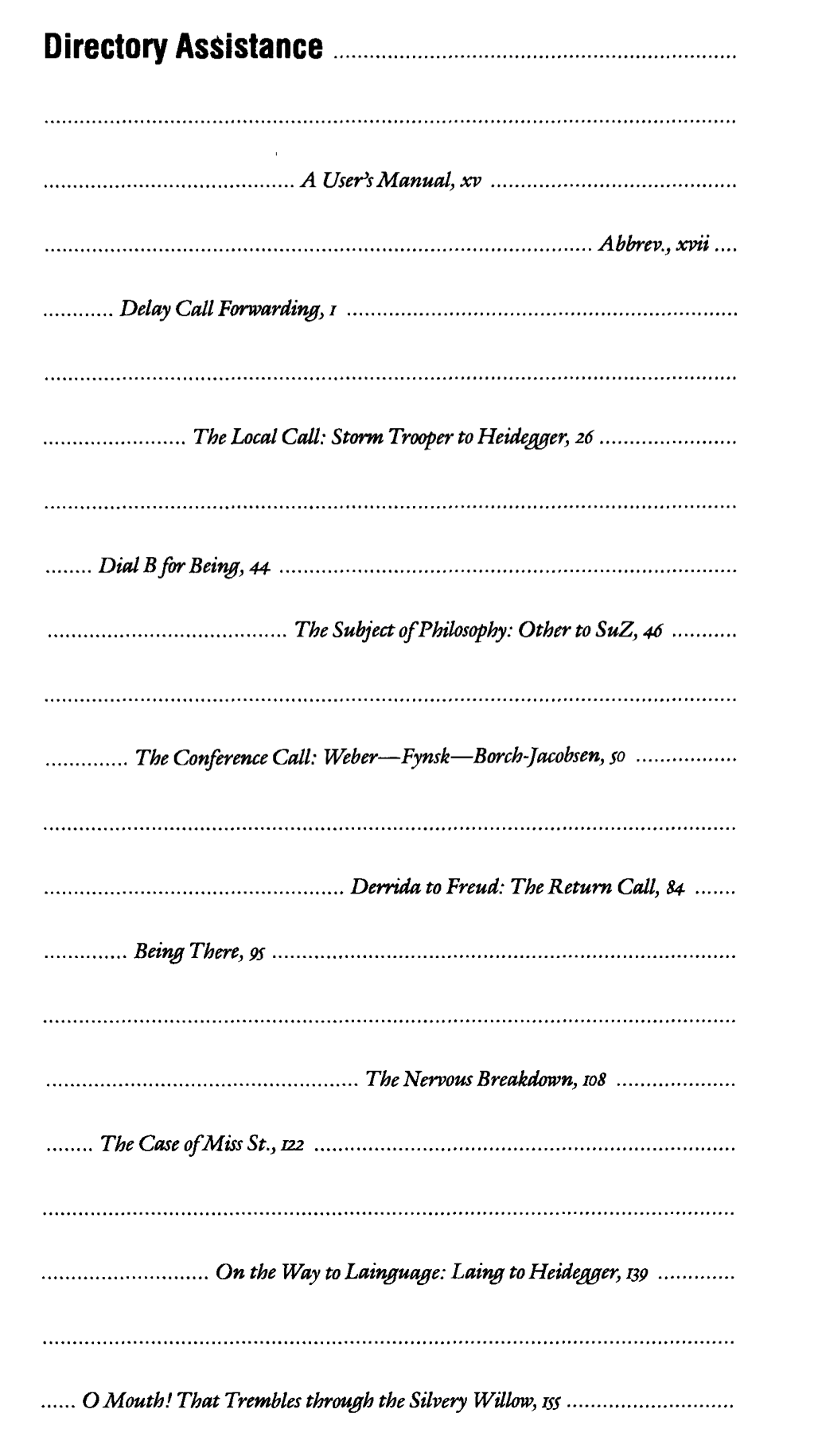
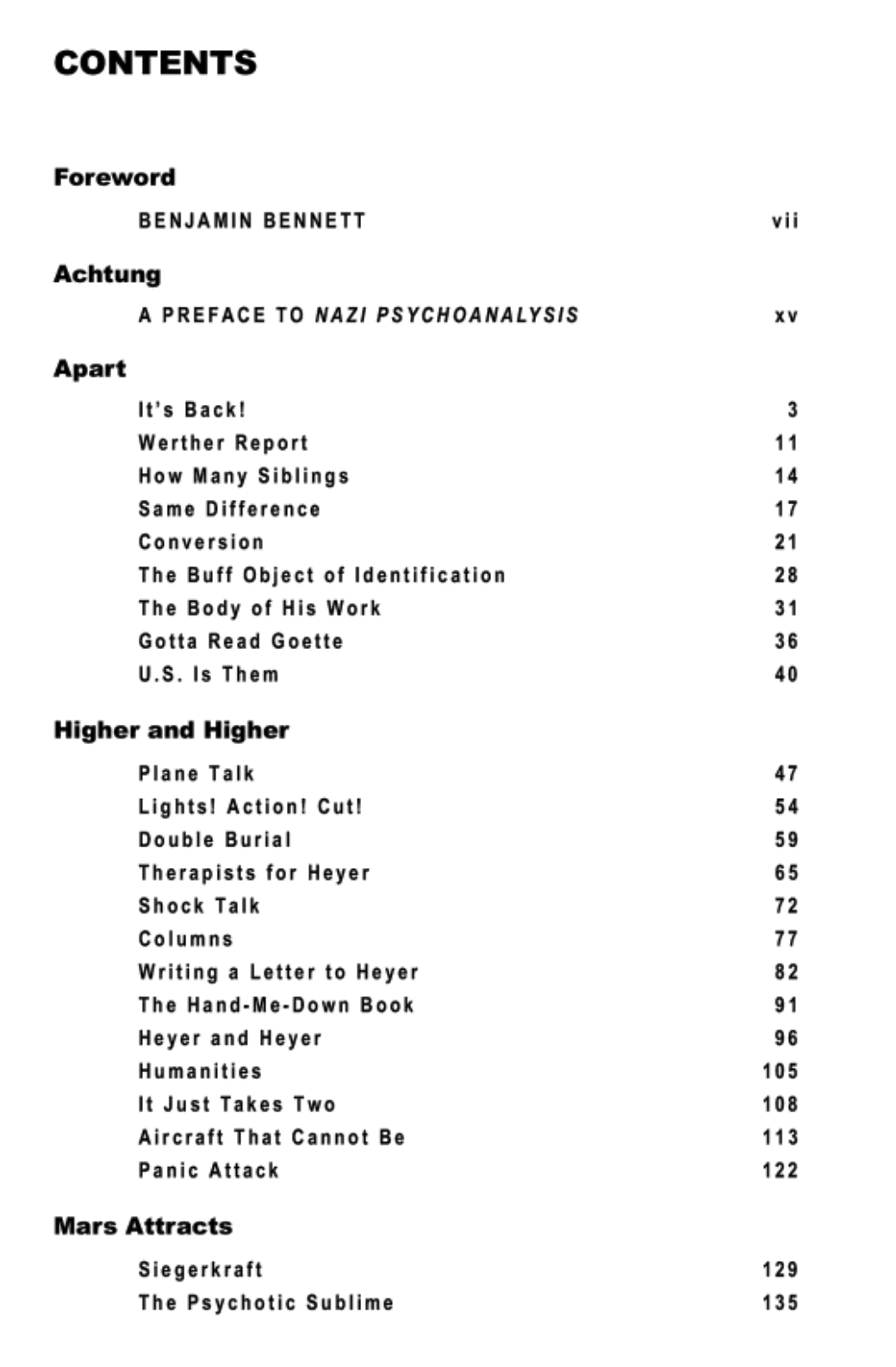
(See Also: Further Reading)
The table of contents of Bayard's book
REQUIRED READING
Anne Carson's dramatic reading of her "essay" 'The Albertine Workout' (Aug 2, 2014 in the LRB; published by 2014 by New Directions)
What do you need to research (learn) in order to understand Carson's poem?
The Albertine Workout Pamphlet (2014) includes numerous appendices placed after the poem, appendices that Carson does not include in her reading and that is is not included nor mentioned in the LRB publication of 2014.
See Also / Further, Reader
Undelivered Puns / Avoided Words / Text as Image:
George Herbert, "The Collar" ("choke"); "Love (3)" ("host"); and "Easter Wings"

Jeremy Adler and Ulrich Ernst, Ed. Text als Figur: Visuelle Poesie von der Antike bis zur Moderne (1987)
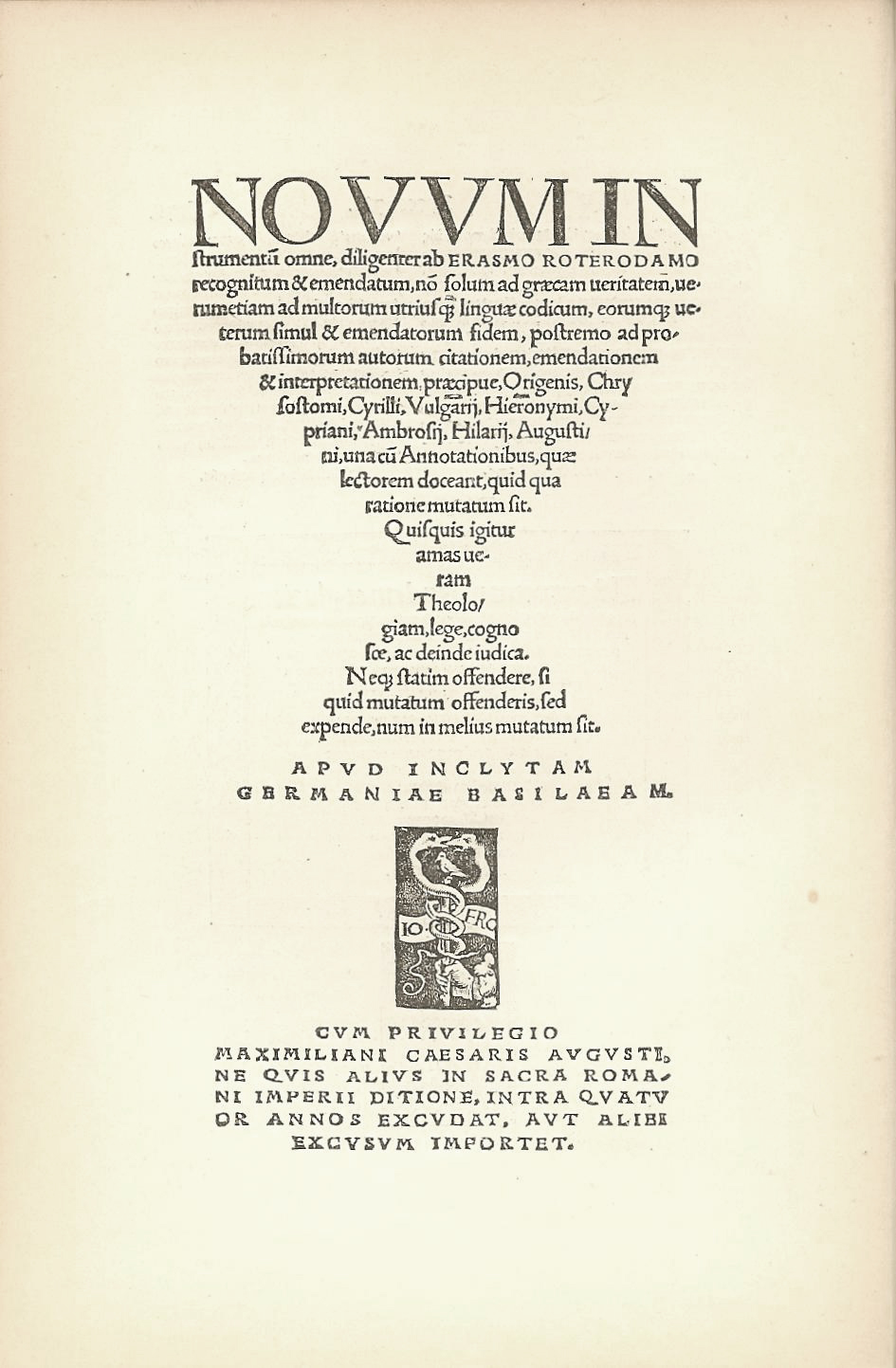
Erasmus Novum Instrumentum
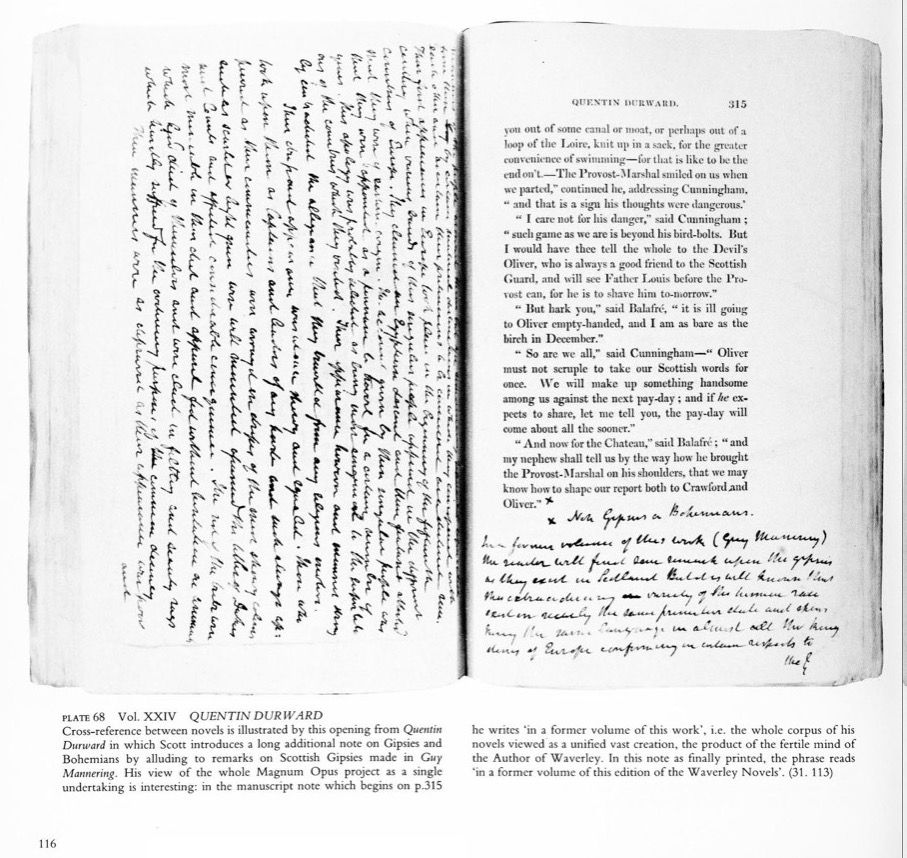
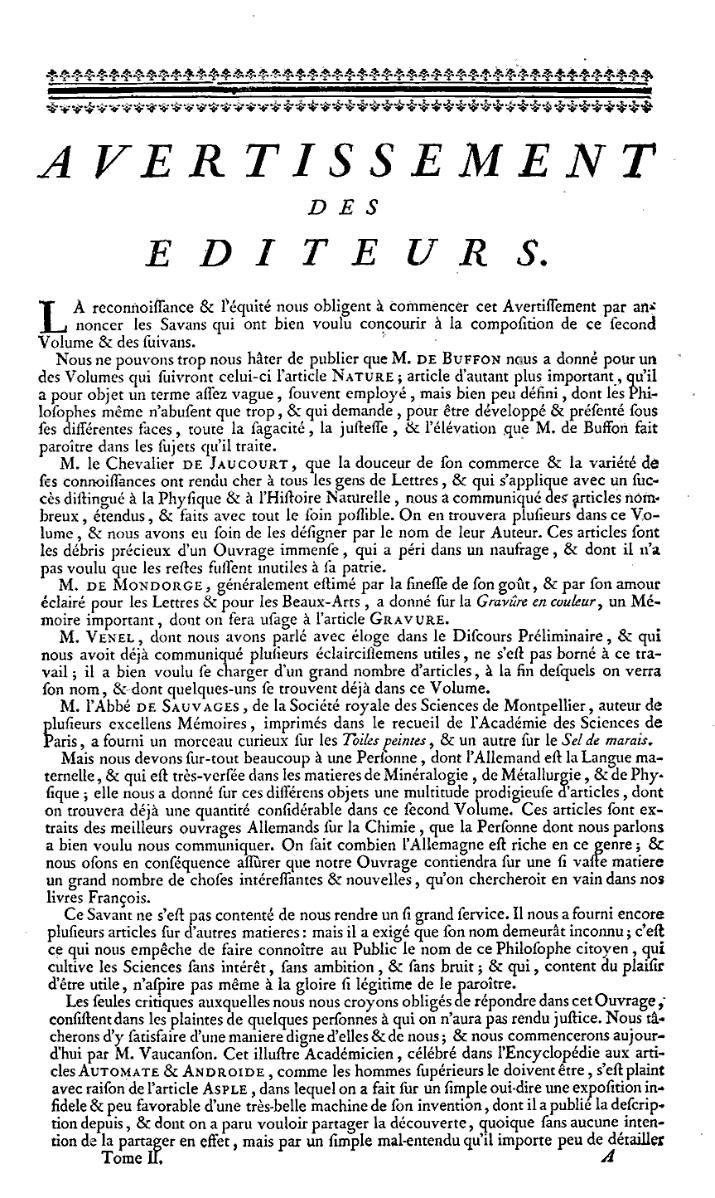
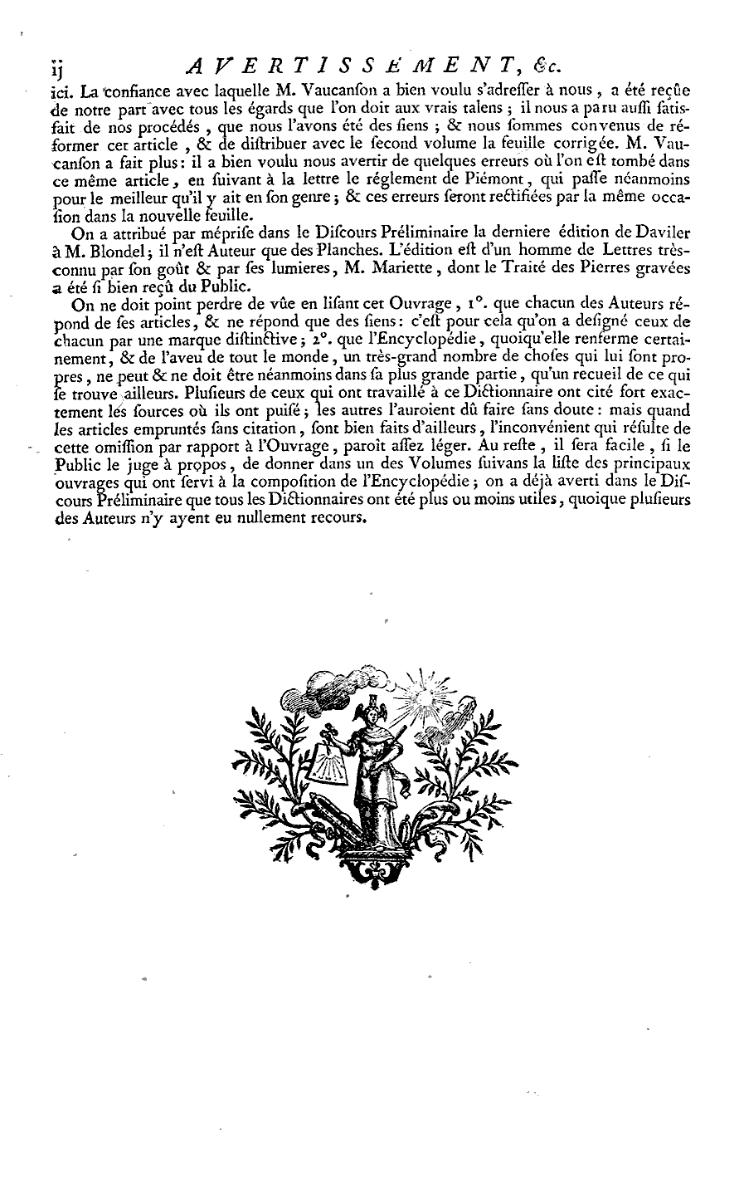
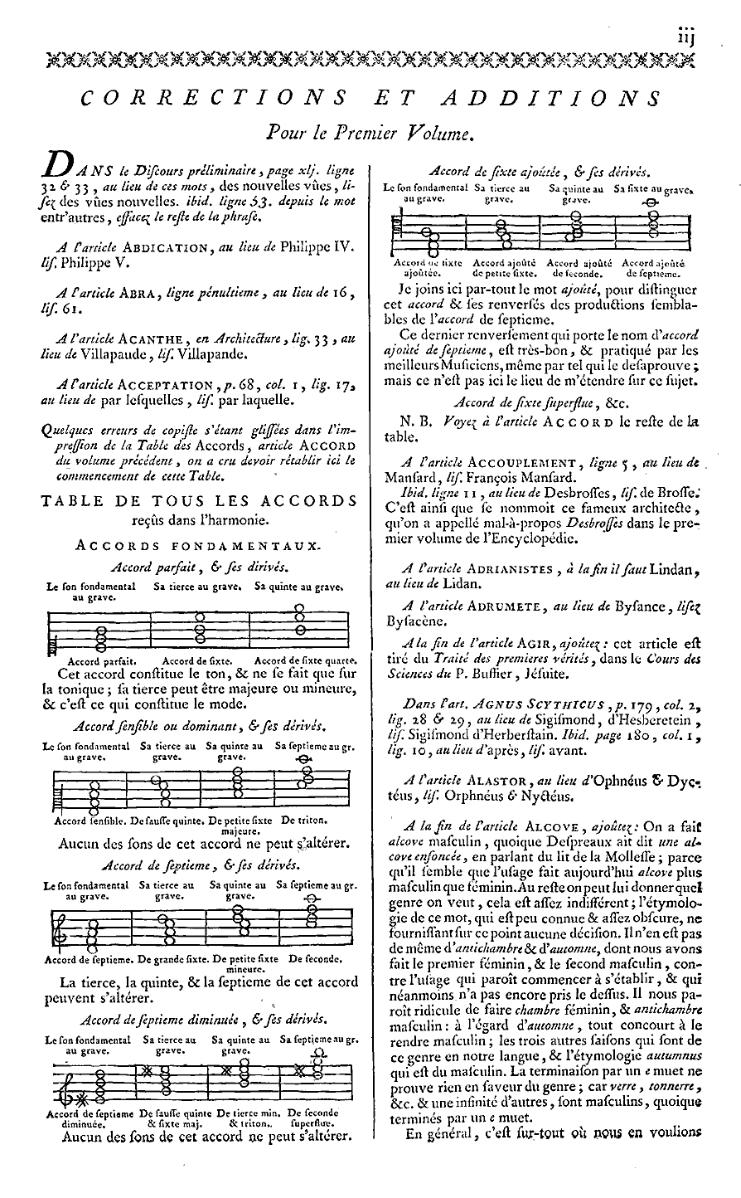
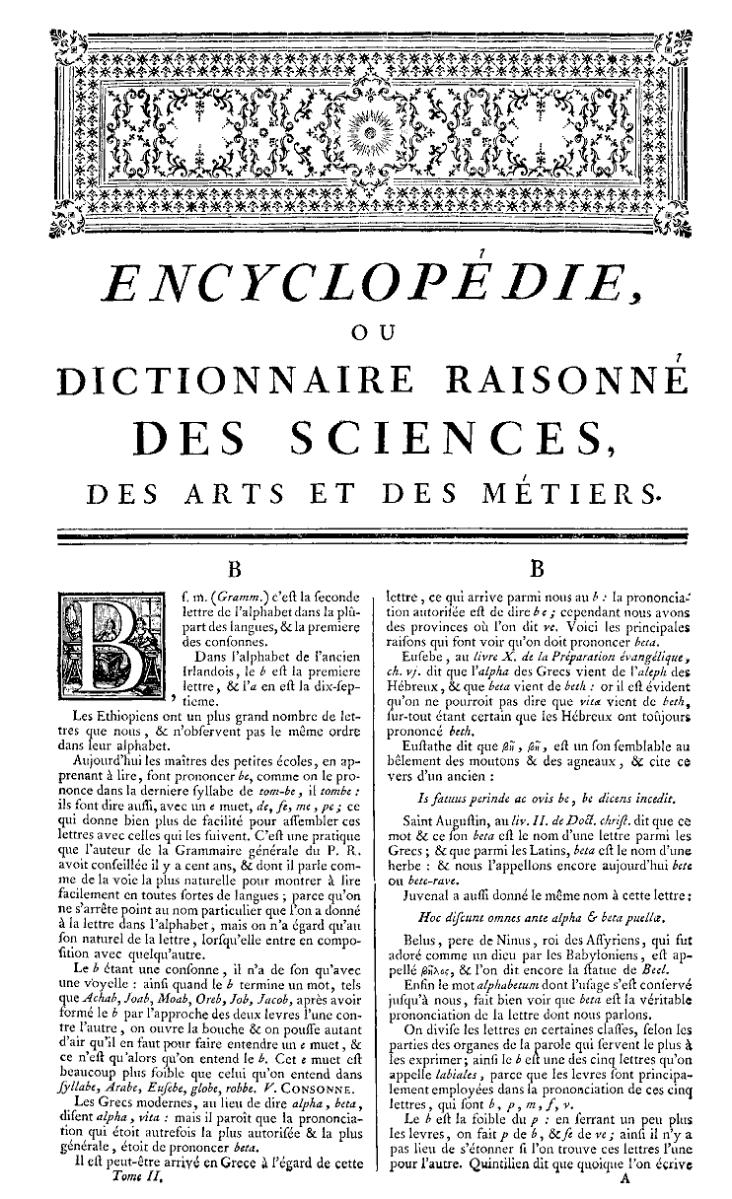
"All Readers . . . Should"
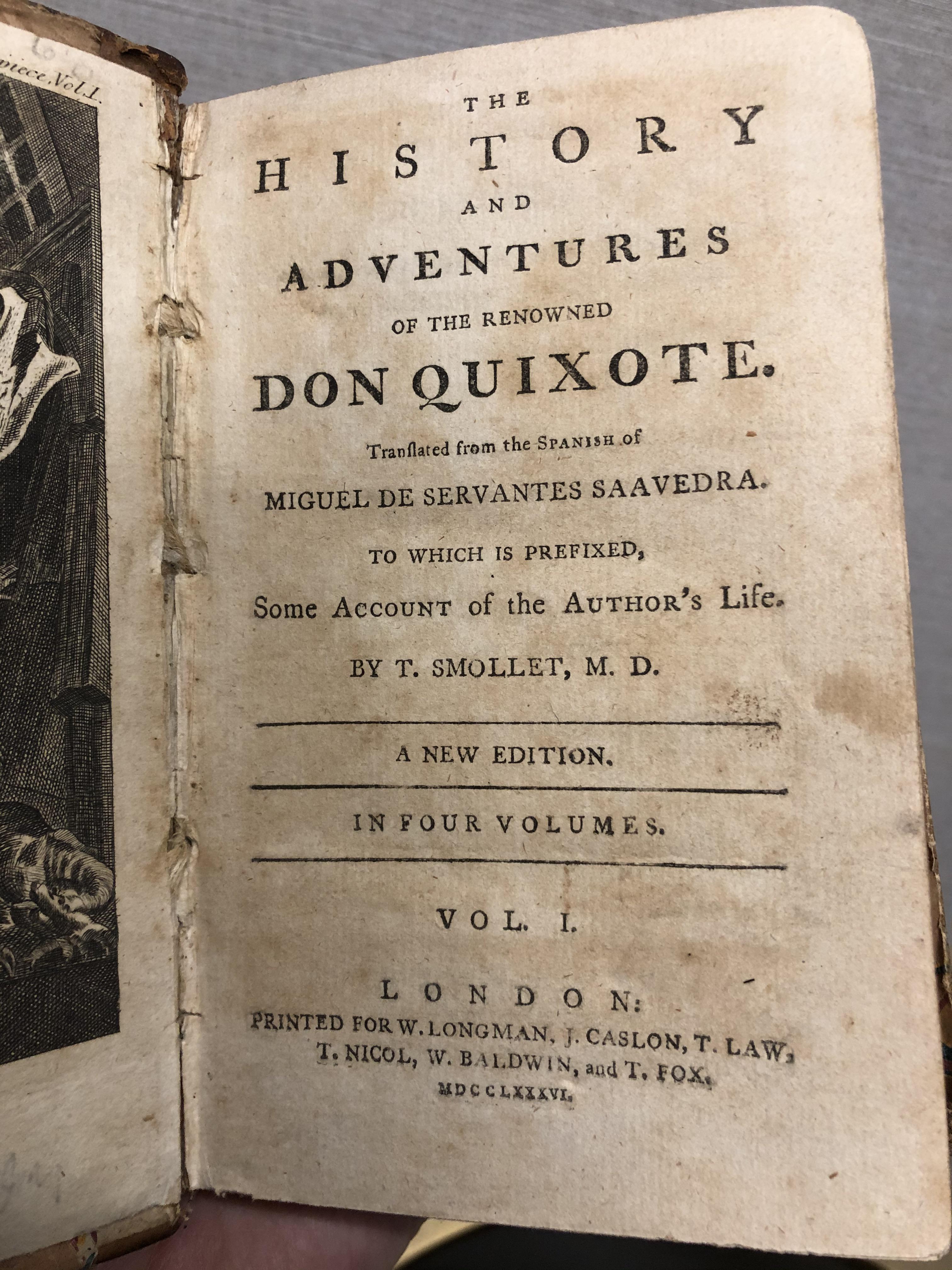
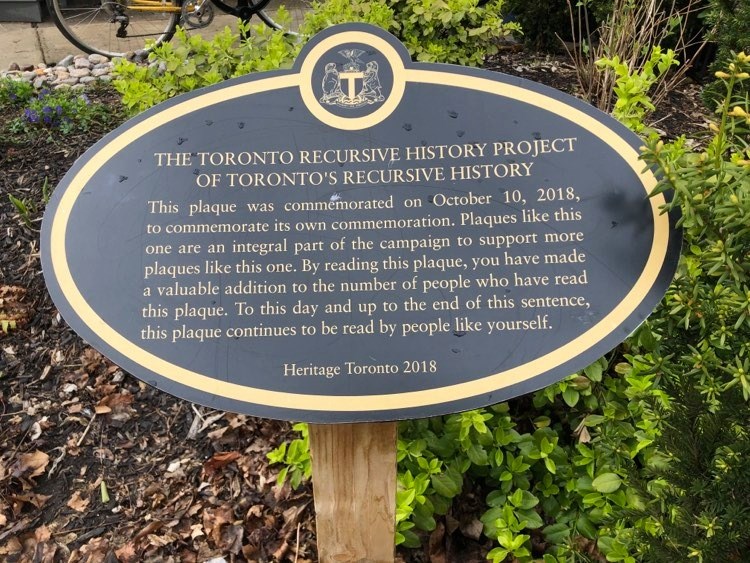
Nothing below is required for this course:
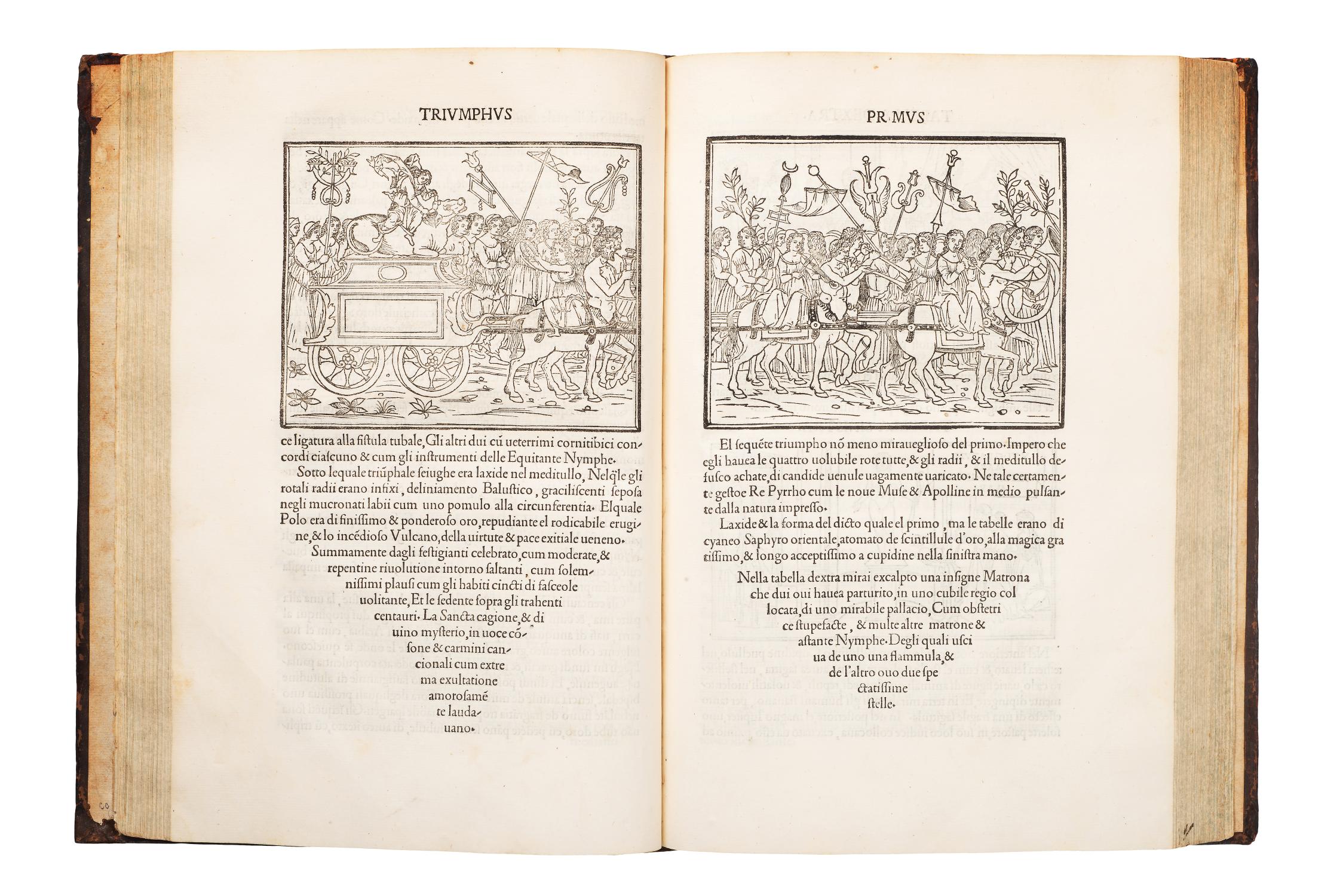
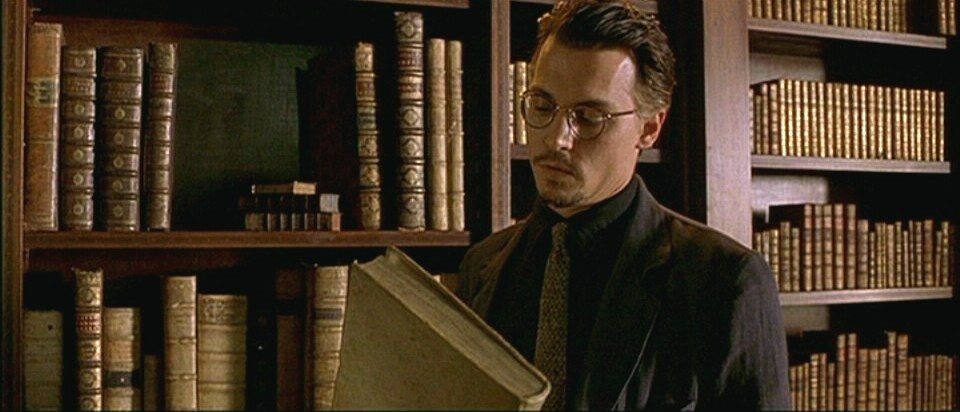


Anton Chekhov's short story, "The Exclamation Mark."
Martin Heidegger, What Is Called Thinking?
The Agenda with Steve Paikin, "How Much Free Speech do Canadians Want?"
The hoax: academic writing as conceptual poem without telling the reader.
Caravaggio (Michelangelo Merisi) | "The Musicians" | The Metropolitan Museum of Art.pdf
Recovering Lost Fictions / Caravaggio's Musicians | MIT List Visual Arts Center.pdf
Slavoj iek on "They Live" (The Pervert's Guide to Ideology)
Vance Packard, The Hidden Persuaders (the paranoid close reading)
100 Examples of "Pareidolia" - Seeing Faces in Everyday Objects

Text and paratext in Mark Z. Danielewski's House of Leaves
Vol 3. Letter XIV; Vol. 6 Chapter XXXVIIIVol 4. XXIV and XXV
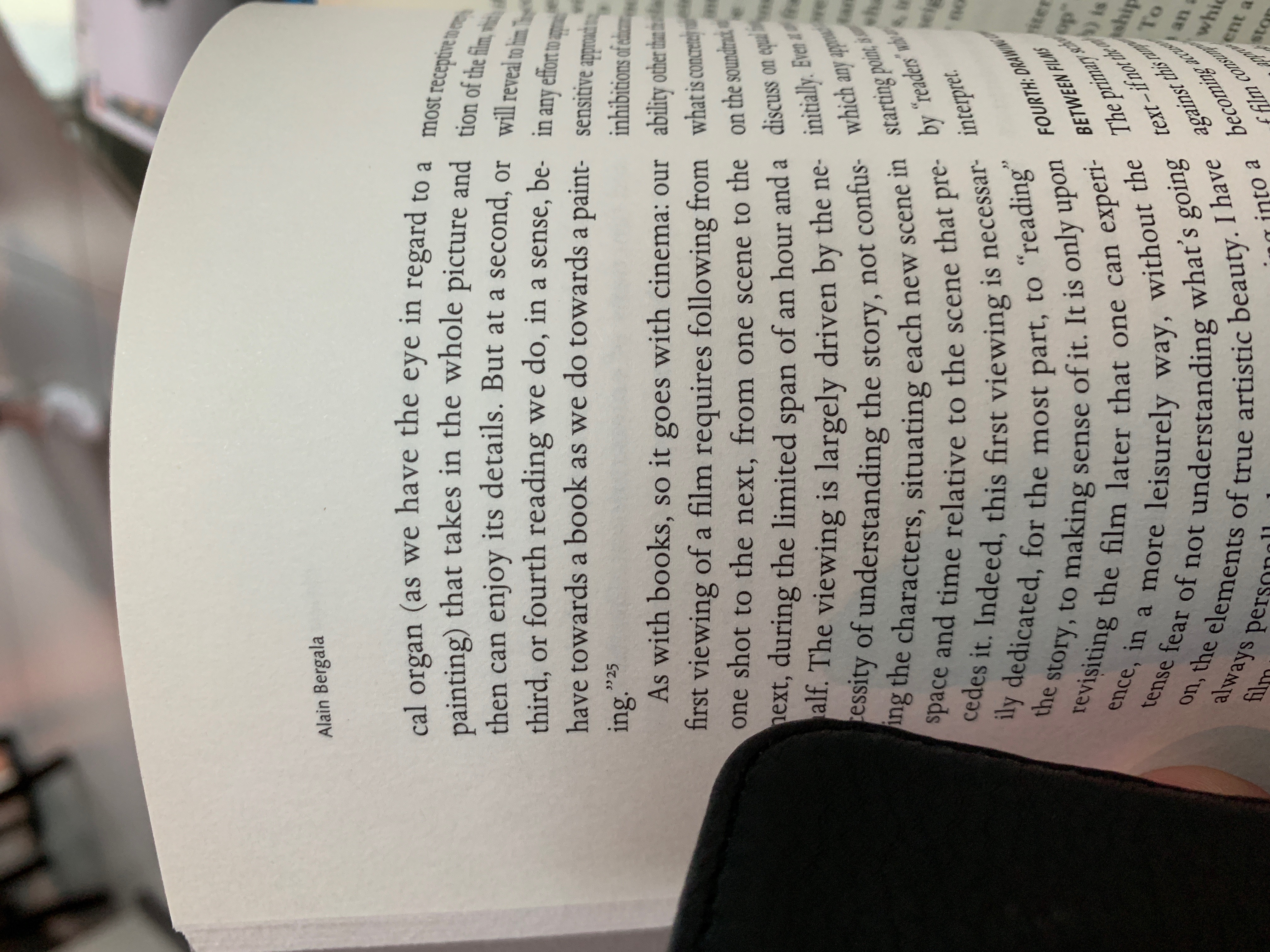
Martin Heidegger, What is Called Thinking? (selections)
"Crochets" in Clarissa; See also "hooks."




Adam Smyth, Pronting errors
Alternate title: Chirologia.; Naturall language of the hand.; Chironomia.; Art of manuall rhetoricke.
Bibliographic name/number: Wing / B5462; Wing / B5466.
J. B. fl. 1648-1654.2 v. ([29], 187, [23], 146, [1] p.) :. London: Printed by Tho. Harper, and are to be sold by Henry Twyford .., 1644.

Diderot, Denis, The Nun (Oxford World's Classics)
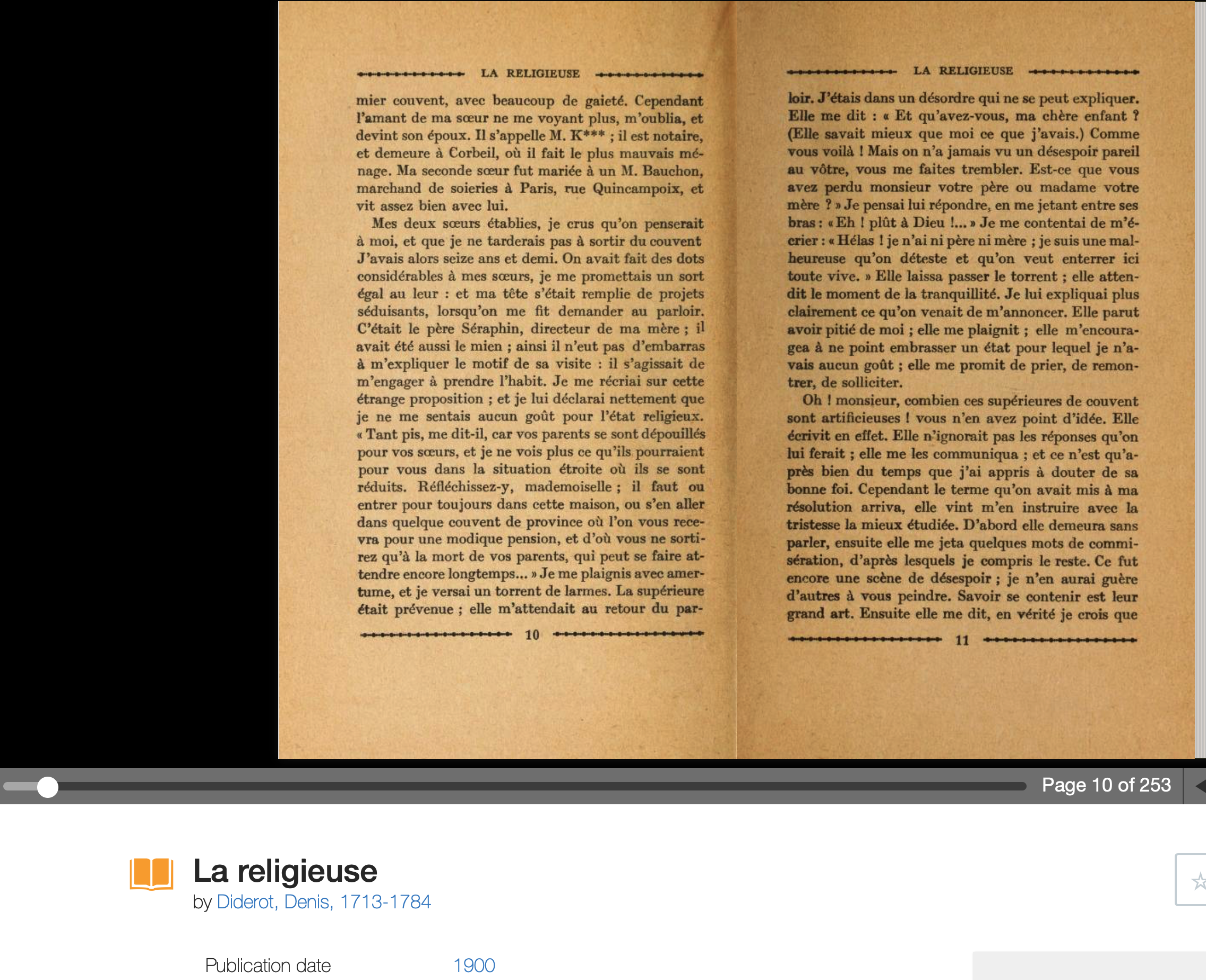
Visual editions
sets up Blanchot and Thurston
Derrida day. Hartman "Monsieur Texte" Mallarme with blanks and and space
The Post Card



Rene Descartes, "Preface" to the French Edition
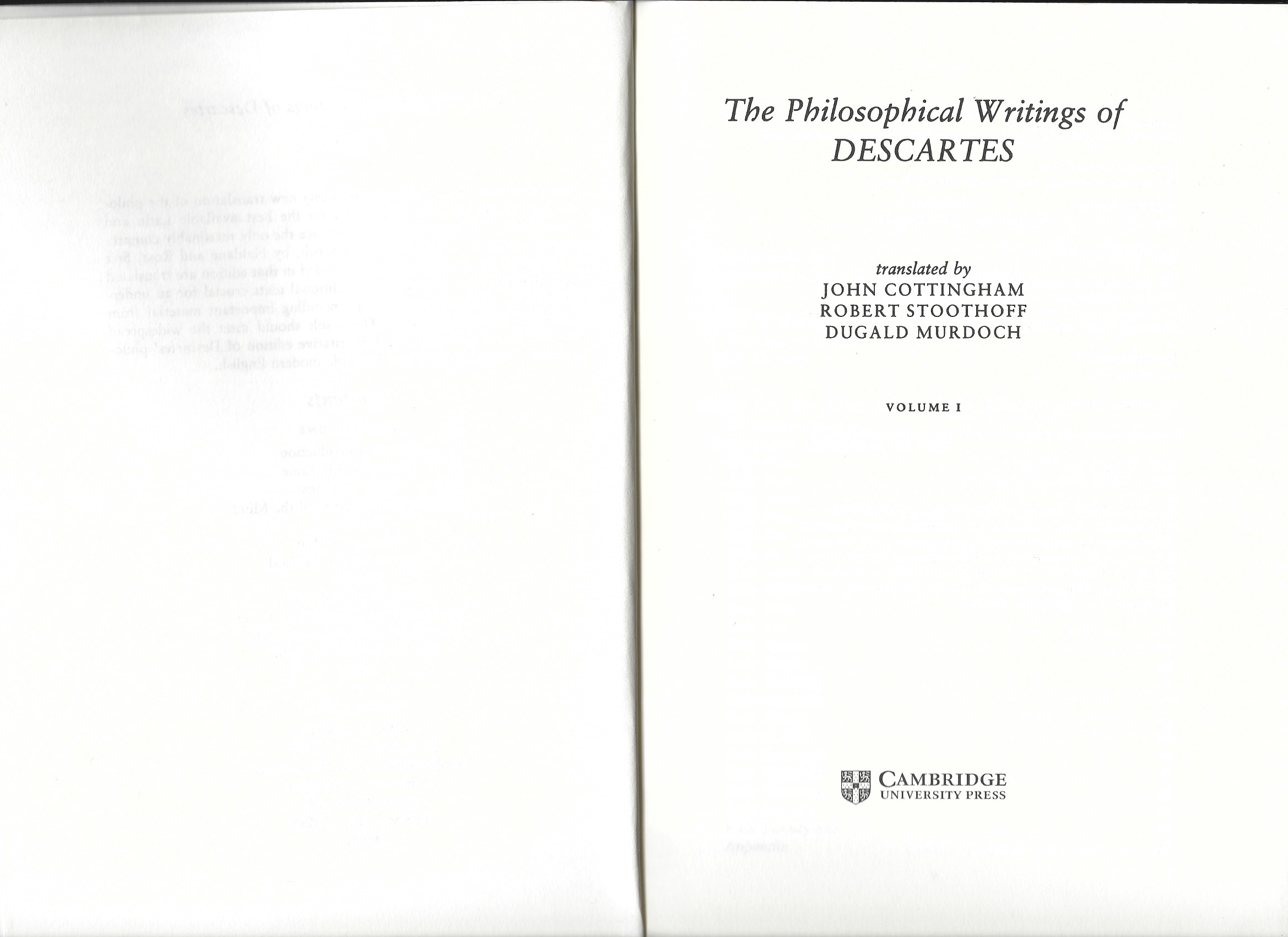
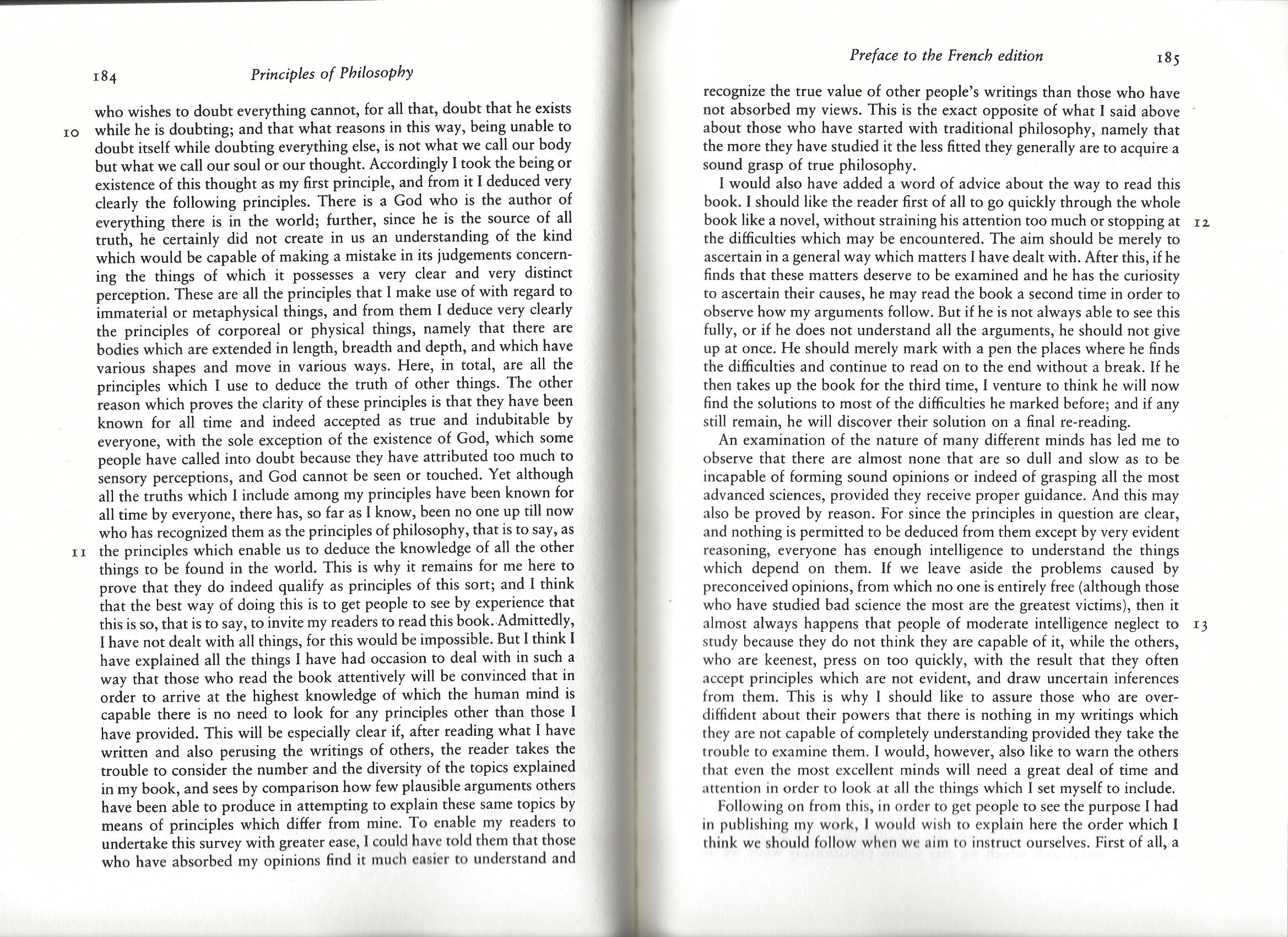
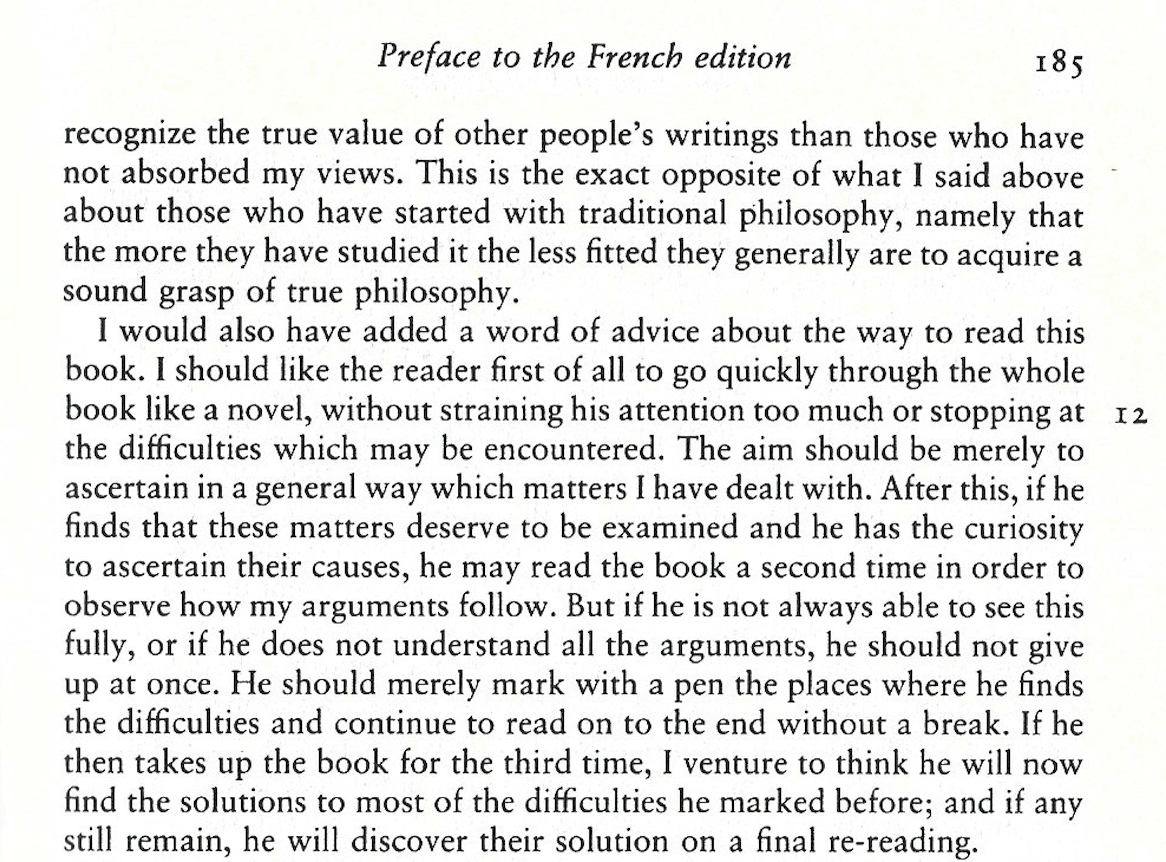
Markus_Krajewski, Paper_Machines
MaterialityShakespeareanText.pdf
Ronell_Avital_The_Telephone_Book_Technology_Schizophrenia_Electric_Speech.pdf
Peter Stallybrass, What Is a Letter?
Reading Tristram Shandy The Tristrapedia Project
Peter Stallybrass, "The Library and Material Texts "





Peter Szendy, Chapters 3 and 4 in Of Stigmatology: Punctuation as Experience (Verbal Arts: Studies in Poetics) 2018 pp. 17-29.
1 Corinthians 11:24, KJV “And when he had given thanks, he brake it, and said, Take, eat: this is my body, which is broken for you: this do in remembrance of me.”
Matthew 26:26, KJV “And as they were eating, Jesus took bread, and blessed it, and brake it, and gave it to the disciples, and said, Take, eat; this is my body.”
Mark 14:17-25, KJV And as they did eat, Jesus took bread, and blessed, and brake it, and gave to them, and said, Take, eat: this is my body. And he took the cup, and when he had given thanks, he gave it to them: and they all drank of it. And he said unto them, This is my blood of the new testament, which is shed for many.
Luke 22:14-20, KJV And he took bread, and gave thanks, and brake it, and gave unto them, saying, This is my body which is given for you: this do in remembrance of me. Likewise also the cup after supper, saying, This cup is the new testament in my blood, which is shed for you."
First_Examination_Of_Anne_Askew
After this sort was Christ led from the examination of the clergy to Pilate,
132
Matth. 27.
In that the examination of the quest and of the Mayor was all
one, ye may well know that they had both one school master, even the
brutish Bishop of London. The ignorant magistrates of England will neither
be godly wise with David and Salomon, nor yet embrace the earnest
instructions of God, to be learned in the scriptures, Psa. 2, Sapien. 6133 but
still be wicked ministers, and cruel servant slaves to Antichrist and the devil,
134
Apoc. 17. More fit are such witless mayors and graceless officers as
Bonner. Ignorance.
knoweth not white from black and light from darkness, Esa. 5,
to feed 138
136
terrible day abideth them, which thus ordereth the innocent. Jaco. 2.
Anne Askew. Besides this my lord mayor laid one thing unto my
[8]
charge, which was never spoken of me, but of them. And that was, whether a mouse eating the host received God or no? This question did I never ask, but in deed they asked it of me, whereunto I made them no answer, but smiled.
If we would attend well unto Christ’s divinity, and let these oiled152 divines dispute among old Gossips, we should soon discharge mice and rats, weak stomachs and parbreaking153 drunkards, of a far other sort than thus, hethateatethmyflesh(saithChristJo.6)154 anddrinkethmyblood,dwelleth in me and I in him. This eating is all one with the dwelling, and is neither for mice nor rats, burnt chancels155 nor drunken priests. For as we eat we dwell, and as we dwell we eat, by a grounded and perfect faith in him. The substance of that most godly refection lieth not in the mouth eating nor yet in the belly feeding, though they be necessary, but in the only spiritual or soul eating. No wise man will think that Christ will dwell in a mouse, nor yet that a mouse can dwell in Christ, though it be the doctrine of these doughty douze-
Nota.
Women.
Anne Askew.
Then the Bishop’s chancellor rebuked me, and said that I was much to blame for uttering the scriptures. For S. Paul (he said) forbade women to speak or to talk of the word of God. I answered him that I knew Paul’s meaning so well as he, which is 1 Corinthiorum 14157 that a woman ought not to speak in the congregation by the way of teaching. And then I asked him, how many women he had seen, go into the pulpit and preach
Recommended:
https://archive.org/details/lifeopinionsoftr00steruoft
http://www.tristramshandyweb.it/sezioni/TS/parish.htm
https://www1.gifu-u.ac.jp/~masaru/TS/contents.html
(there are two readings):
Donald Ault, "Foreword." Coleridge’s Ancient Mariner An Experimental Edition of Texts and Revisions, 1798-1828. Ed. Martin Wallen. Barrytown, N.Y.: Station Hill Press, 1993: vii-xv.



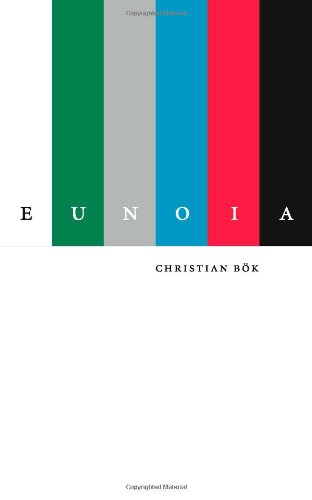
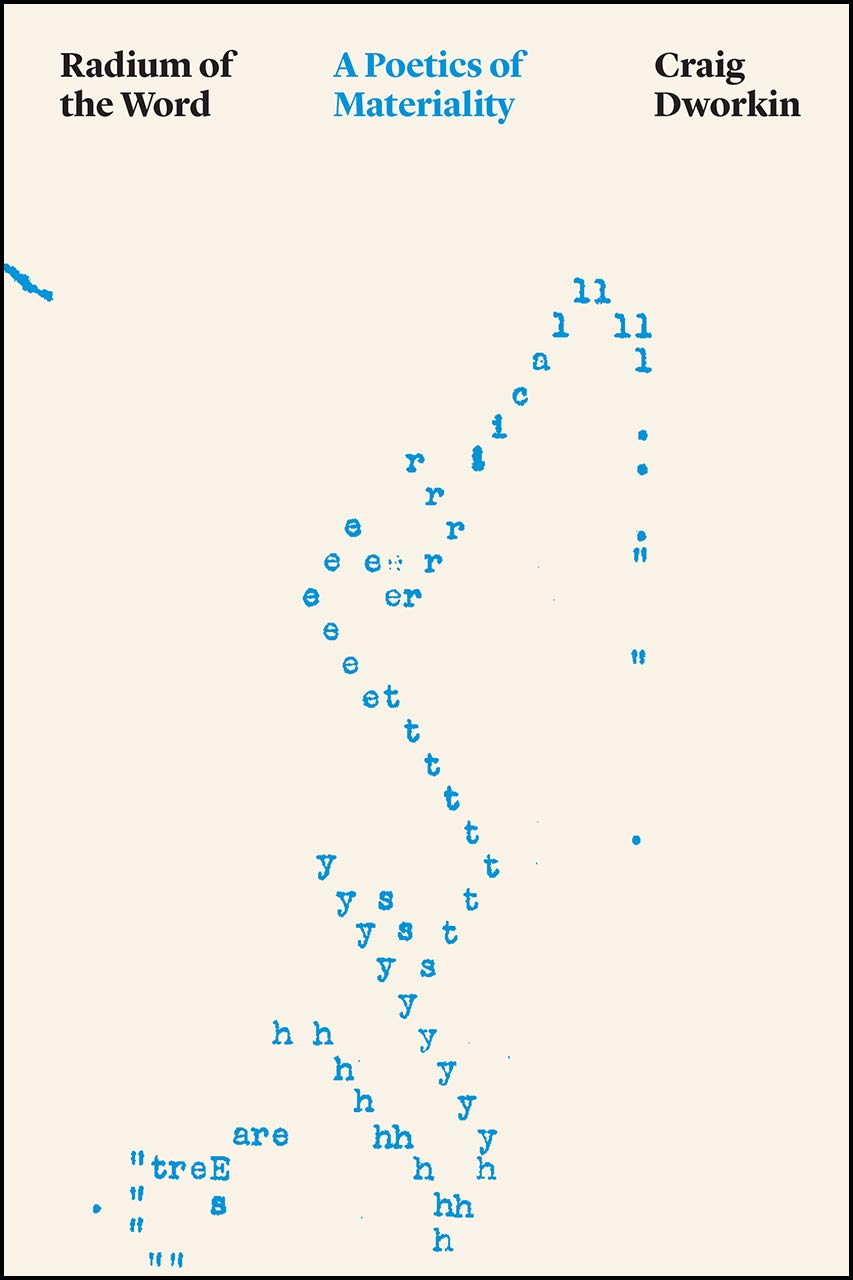
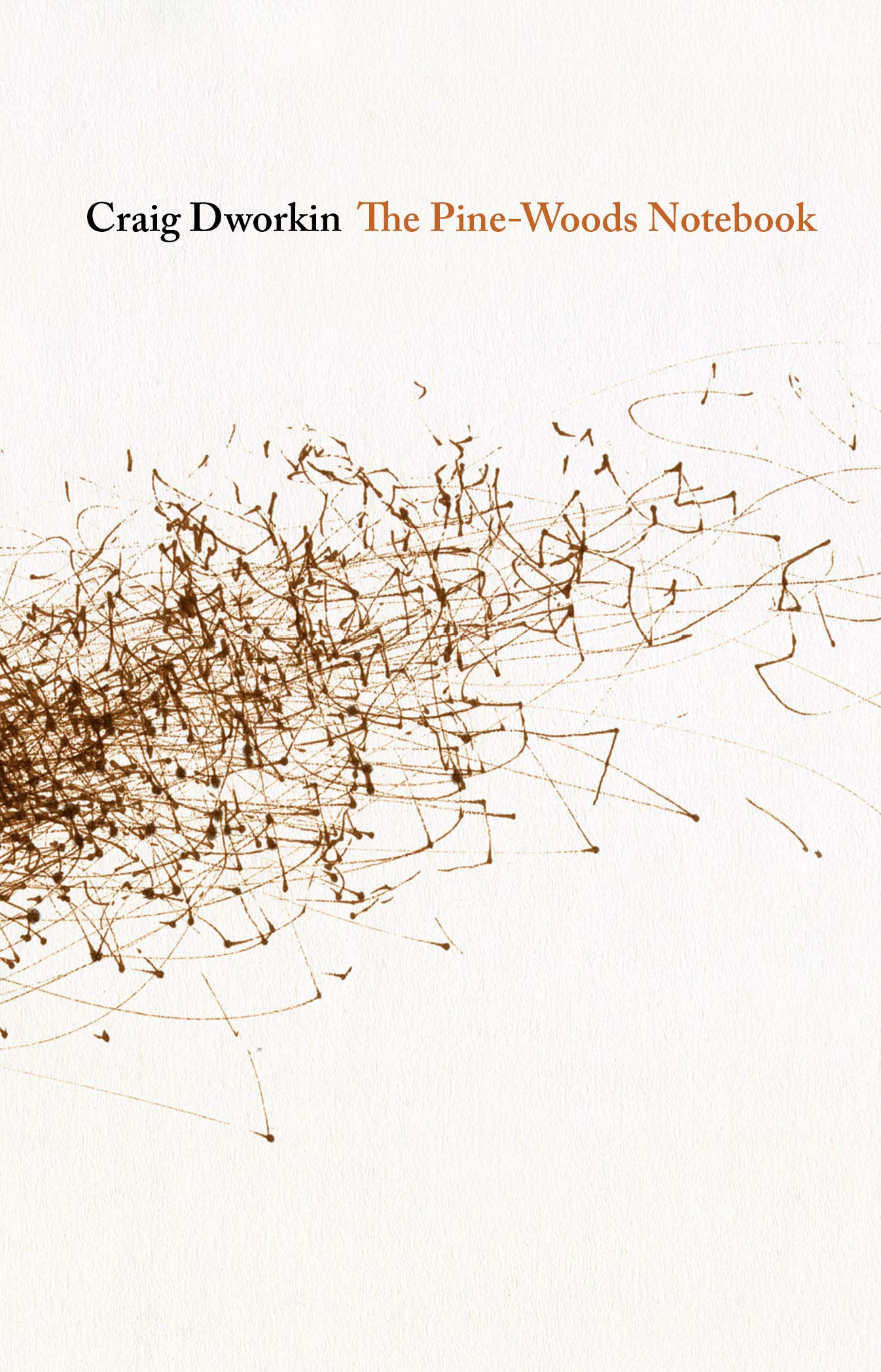

What is there to find?
Hnery James, The Aspern Papers
Ann Smock, "Introduction" to What Is There to Say? (2007)
What More Can You Say? Is There Anything More to Say?
Nothing to See Here
Kierkegaard on chatter
Heidegger on Idle Talk
Borges "Garden of the Forking Path"
Vicious Circle Blanchot
Hermeneutic circle Heidegger
Digression on ECO-WRITING, or ALPHABETTERING: (Saving) Spaces Between Words, Lines, and Pages


The ‘missing 28 pages’ from the Congressional report on 9/11 won’t stop conspiracy theories
J.S.Bach "The Goldberg Variations" [ Glenn Gould ] (1955) / Steinway grand pianos / J.S. Bach, The Art of the Fugue; W.K. Wimsatt, The Verbal Icon: Studies in the Meaning of Poetry (1954) "When Is Variation Elegant?" / Vladimir Horowitz
Looking at the Book
Textual Criticism
Jerome McGann
The Textual Condition
The Material Book
Gerard Genette’s Paratexts; Michel Foucault’s “Lives of Infamous Men”; Bill Sherman’s Used Books; Will Hogan’s The Thing The Book; Nicholas Nace’s Catch-words; Markus Krajewski’s Paper Machines: About Cards & Catalogs, 1548-1929; Garret Stewart’s Bookwork: Medium to Object to Concept to Art; Avital Ronnell’s Telephone Book; Mary Franklin-Brown’s Reading the World; Susan Howe's Concordance; Anna-Sophie Springer and Etienne Turpin’s Fantasies of the Library; Henry James, The Aspern Papers; Pierre Bayard, How to Talk About Books You Haven't Read; The Library of Congress’s The Card Catalog: Books, Cards, and Literary Treasures; Curiosity and Method, Ten Years of Cabinet Magazine; Jacques Derrida's (Mes)Chances" and “Typewriter Ribbon: Limited Ink (2 ) ‘within such limits’”; and Ann Blair’s Too Much To Know: Managing Scholarly Information Before the Modern Age. See also articles on encyclopedias by William West . . .

Daniel Sawyer, "Chapter 11. Page Numbers, Signatures, and Catchwords," in Book Parts, edited by Dennis Duncan and Adam Smyth.
DANIEL SAWYER, Book Parts and the Feed
http://users.clas.ufl.edu/burt/SeeAlso/
Concordance: An Evening with Susan Howe
BookObjectDigital
Cecelia Watson,"Blubber and Blather," Semi-Colon: The Past, Present, and Future of a Misunderstood Mark
Jonathan Swift, A. C. Guthkelch, D. Nichol Smith, A Tale of a Tub to which is Added The Battle of the Books, and the Mechanical Operation of the Spirit. Together with The History of Martin, Wotton's Observations Upon the Tale of a Tub, Curll's Complete Key, Etc
Jonathan Swift, A Tale of a Tub and Other Works
Dennis Duncan and Adam Smyth, Book Parts, vii, xxi, 1-11; 16; 25; 39; 51; 65; 81; 95; 109; 123; 137; 151; 165; 177; 191; 209; 223; 237; 251;
Stéphane Mallarmé, Un Coup de Des n'abolira le hasard (in French and English)
William Sherman, Used Books

The Notecards on Which Vladimir Nabokov Wrote Lolita: A Look Inside the Author’s Creative Process
Flying On in the Reflected Sky: Vladimir Nabokov’s ‘Selected Poems’ and ‘Pale Fire’
Pale Fire: A Poem in Four Cantos by John Shade Vladimir Nabokov, R. S. Gwynn, Brian Boyd, Jean Holabird


Pale Fire by Vladimir Nabokov, with a frontispiece portrait of the author by Andrew Hoyem, 1994.

Brian Boyd, Nabokov's Pale Fire The Magic of Artistic Discovery (1999), reviewed as a Kinbote like commentary on Pale Fire
The Color of Pomegranates (The Criterion Collection) Sofiko Chiaureli
Warburg, Aby, Aby Warburg: Bilderatlas Mnemosyne: The Original
Derrida, Jacques, Clang (Volume 62) (Posthumanities)
Fitch, Andy, As We Know
Raymond Queneau, Exercises in Style
Van Hulle, Dirk Samuel Beckett's Library
Borsuk, Amaranth, The Book (The MIT Press Essential Knowledge series)
Auster, Paul, The Book of Illusions: A Novel
DWORKIN, Craig, Simon Morris, and Nick Thurston, Do or DIY
Furstnau, Timothy Museum of Capitalism: Expanded Second Edition
"Quand on lit trop vite, ou trop doucement, on n'entend rien."
--Blaise Pascal, Pensées, cited by Paul de Man as the epigraph to Allegories of Reading (1979)
Jacques Derrida, Memoires for Paul De Man, p. 88
“What is called here, for lack of a better term, a rupure or a disjunction should not be thought of as negation, however tragic it may be. Negation, in a mind as resilient as Pascal’s, is always susceptible of being reinscribed in a system of intelligibility. . . . To discover, in the Pensées, the instances de rupture, the equivalence of zero in Pascal’s the theory of number, we can only reiterate compulsively the dialectical pattern of Pascal’s own model, or, in other words, read and reread the Pensées with genuine insistence.”
Paul de Man, “Pascal’s Allegory of Persuasion,” in Aesthetic Ideology (UMinn, 1996), pp. 51-69; to p. 61.

Louise Curran, Letters, letter writing and epistolary novels
Epistolae Ho-Elianae: the familiar letters of James Howell
Collins's legal training, and as he points out in his preamble: "the story here presented will be told by more than one pen, as the story of an offence against the laws is told in Court by more than one witness".

Widow Wadman: ‘paint her to your own mind – as like your mistress as you can’
Before how to draw the Widow, what ideas did reject? Why did you reject them?
Paint Her to Your Own Mind 147 artists and writers were invited to ‘Paint Her to Your Own Mind’ and represent their idea of ‘beauty’ on a blank page for exhibition and sale by auction.
Une page de Proust au hasard : 313 : Des rafraîchissements étaient servis sur une table


Louise Curran, Samuel Richardson and the Art of Letter-Writing
Jarrod Hurlbert, Pamela: Or, Virtue Reworded: The Texts, Paratexts, and Revisions that Redefine Samuel Richardson's Pamela
Leo Braudy, "Penetration and Impenetrability in Clarissa." In New Aspects of the Eighteenth Century: Essays from the English Institute. Ed. Philip Harth. New York: Columbia
Jim Springer Borck, "Composed in Tears: The 'Clarissa" Project'," Studies in the Novel; Fall 1995; 27, 3; pg. 341
William B. Warde, Jr., "Revisions of the Published Texts of Samuel Richardson's Preface to "Clarissa" The South Central Bulletin, Vol. 30, No. 4, Studies by Members of SCMLA (Winter, 1970), pp. 232-234
Ann Louise Kibbie, "The Estate, the Corpse, and the Letter: Posthumous Possession in "Clarissa,"
ELH, Vol. 74, No. 1 (Spring, 2007), pp. 117-143
JAMES BRYANT REEVES, "Posthumous Presence in Richardson's 'Clarissa'," Studies in English Literature, 1500-1900, Vol. 53, No. 3, Restoration and Eighteenth Century (SUMMER 2013), pp. 601-621
M. Kinkead-Weekes, "Clarissa Restored?" The Review of English Studies, Vol. 10, No. 38 (May, 1959), pp. 156-171 Published by: Oxford University Press
The Clarissa Project. by Florian Stuber, Margaret Anne Doody and Jim Springer Borck (AMS, 1990)
To deal with the horrific events in some of the literature we will read, we will think about trauma in two ways, first as unspeakable and second as a story. Literature can be thought of as a therapeutic resource but not as a solution. It just raises questions.
Changing the Paradigm 2015 Developmental Trauma Panel | Dr. Bessel van der Kolk
A sad outcome: